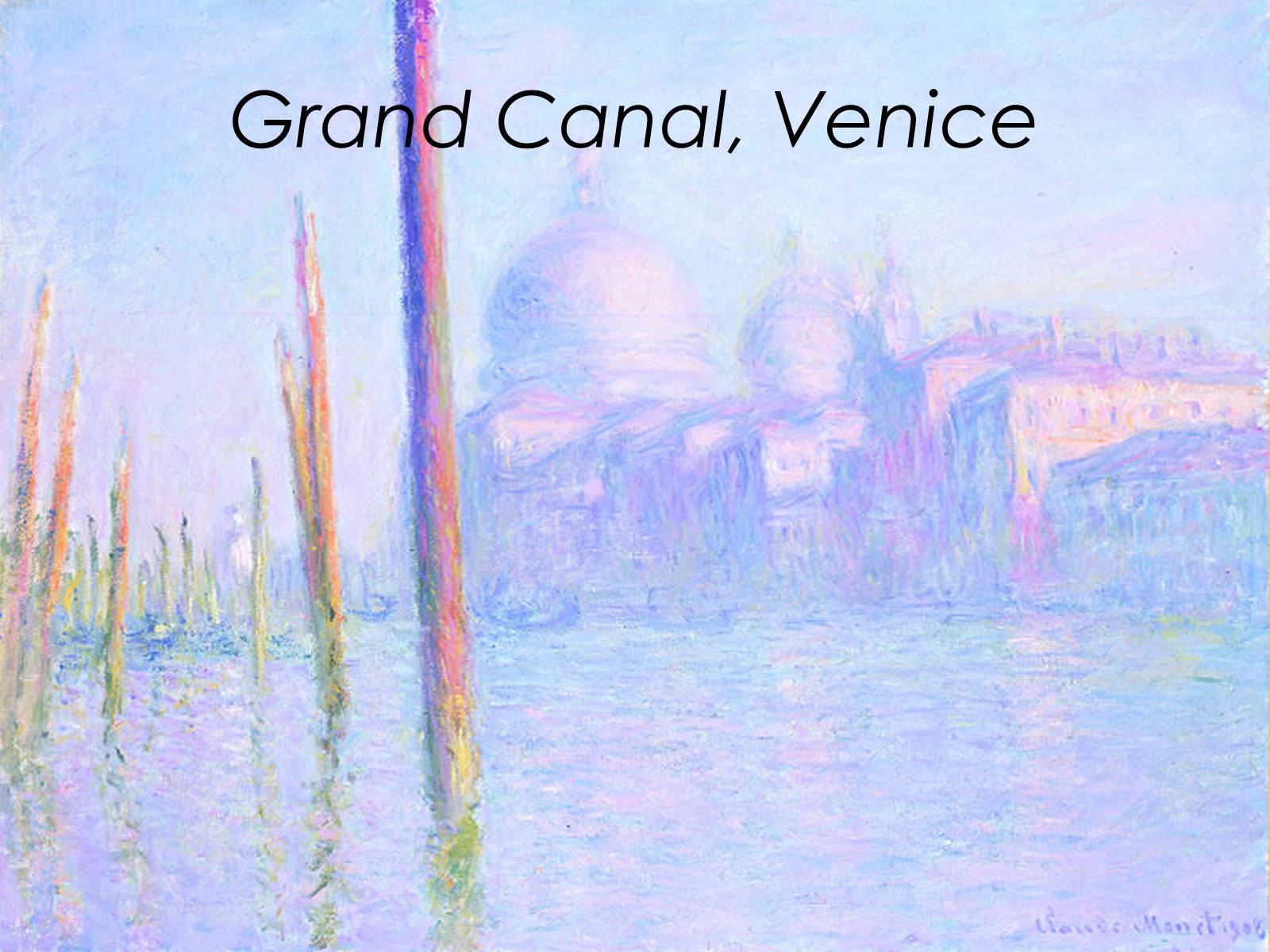- Головна
- Готові шкільні презентації
- Презентація на тему «Claude Monet» (варіант 1)
Презентація на тему «Claude Monet» (варіант 1)
298
Слайд #1
Claude Monet
Suharskaya Olya 10-B
Suharskaya Olya 10-B

Слайд #2
Oscar-Claude Monet ( 14 November 1840 – 5 December 1926) was a founder of French Impressionist painting, and the most consistent and prolific practitioner of the movement's philosophy of expressing one's perceptions before nature, especially as applied to plein-air landscape painting. The term "Impressionism" is derived from the title of his painting Impression, soleil levant(Impression, Sunrise), which was exhibited in 1874 in the first of the independent exhibitions mounted by Monet and his associates as an alternative to the Salon de Paris.
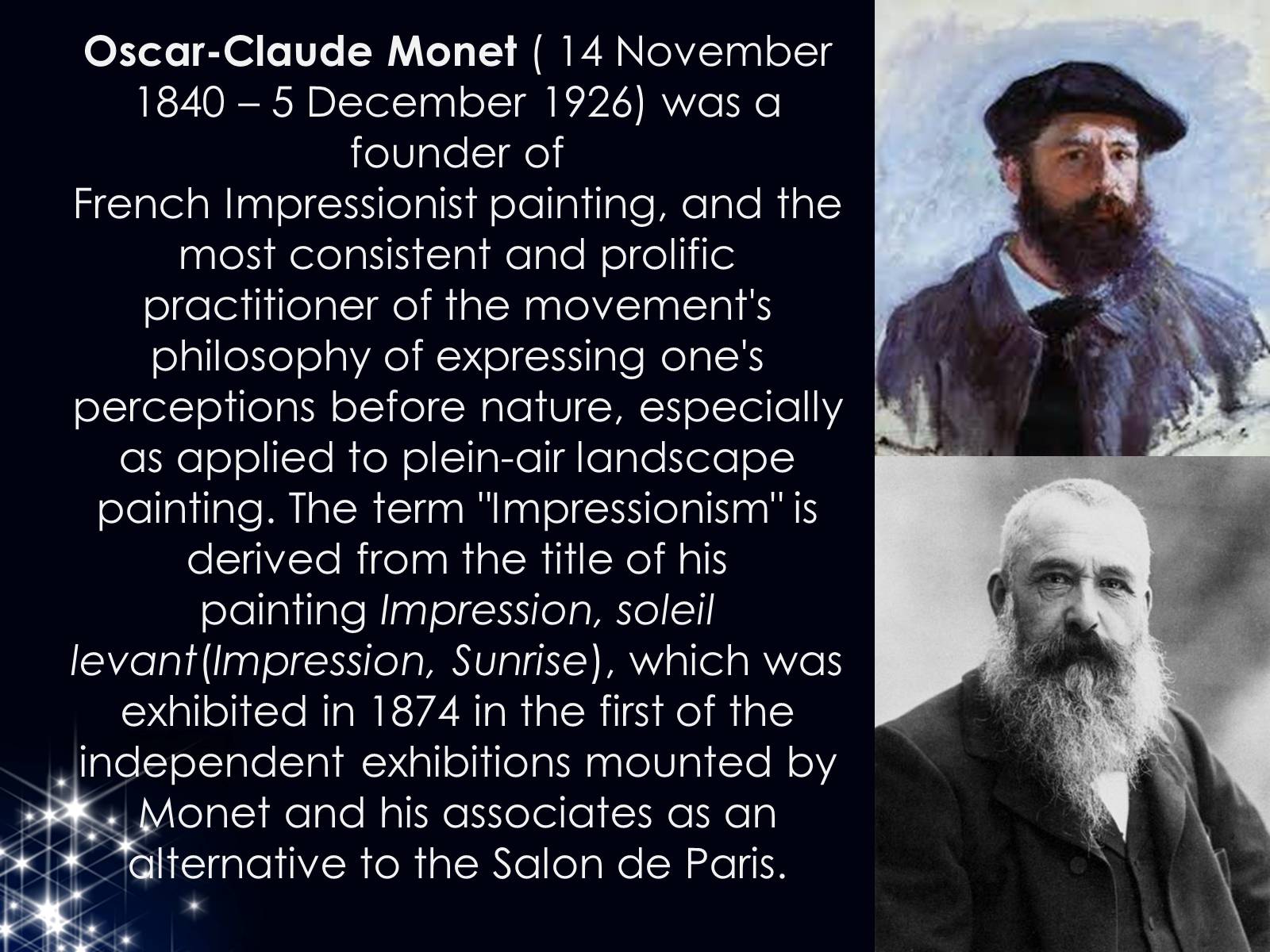
Слайд #3
Oscar-Claude Monet ( 14 November 1840 – 5 December 1926) was a founder of French Impressionist painting, and the most consistent and prolific practitioner of the movement's philosophy of expressing one's perceptions before nature, especially as applied to plein-air landscape painting. The term "Impressionism" is derived from the title of his painting Impression, soleil levant(Impression, Sunrise), which was exhibited in 1874 in the first of the independent exhibitions mounted by Monet and his associates as an alternative to the Salon de Paris.
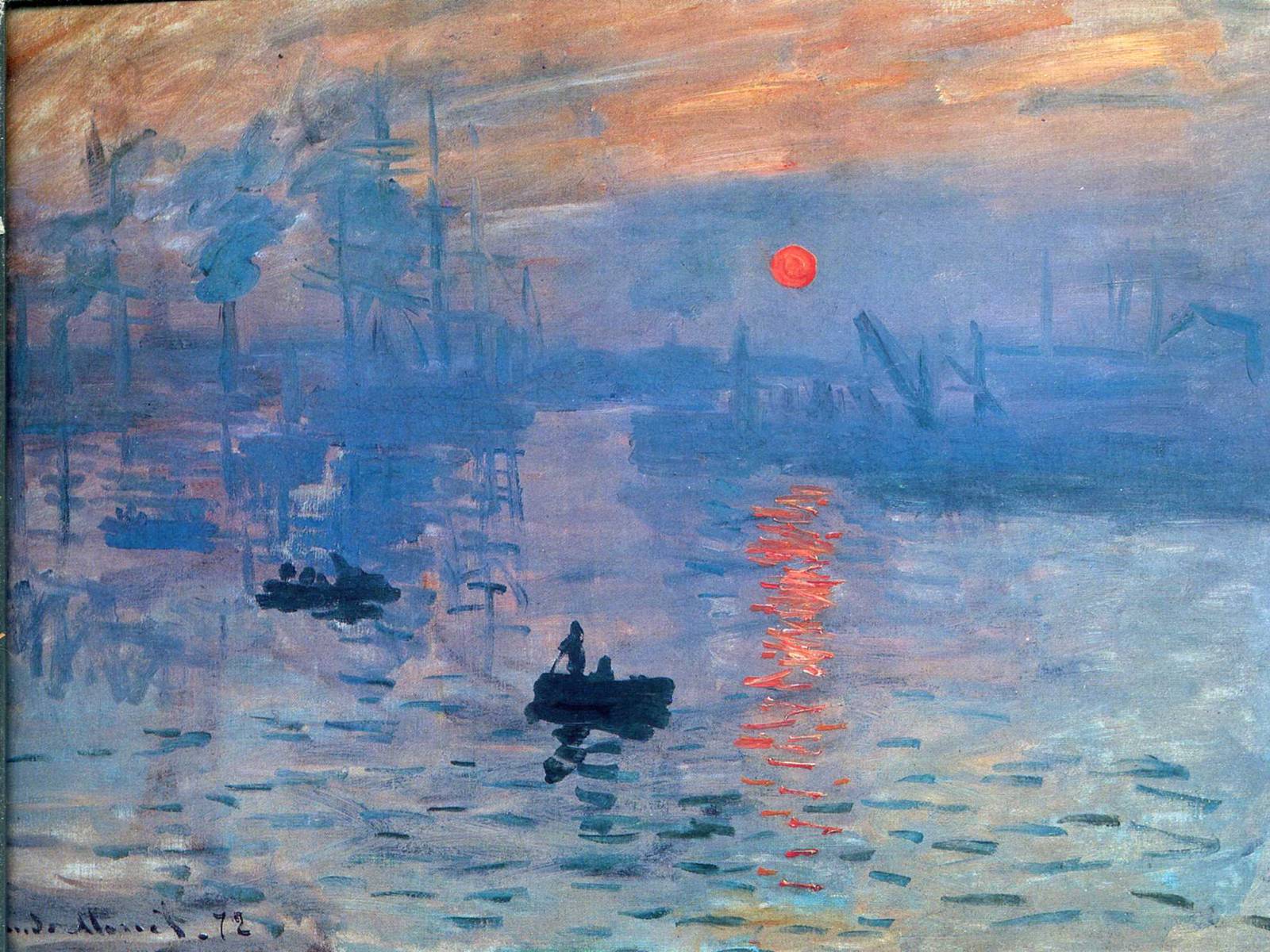
Слайд #4
The first Impressionist exhibition was held in 1874 at 35 boulevard des Capucines, Paris, from 15 April to 15 May. The primary purpose of the participants was not so much to promote a new style, but to free themselves from the constraints of the Salon de Paris. The exhibition, open to anyone prepared to pay 60 francs, gave artists the opportunity to show their work without the interference of a jury.In addition to Impression: Sunrise (pictured above) Monet presented four oil paintings and seven pastels. Among the paintings he displayed was The Luncheon (1868), which features Camille Doncieux and Jean Monet, and which had been rejected by the Paris Salon of 1870. Also in this exhibition was a painting titled Boulevard des Capucines, a painting of the boulevard done from the photographer Nadar's apartment at no. 35. Monet painted the subject twice and it is uncertain which of the two pictures, that now in the Pushkin Museum in Moscow, or that in the Nelson-Atkins Museum of Art in Kansas City was the painting that appeared in the groundbreaking 1874 exhibition, though more recently the Moscow picture has been favoured.
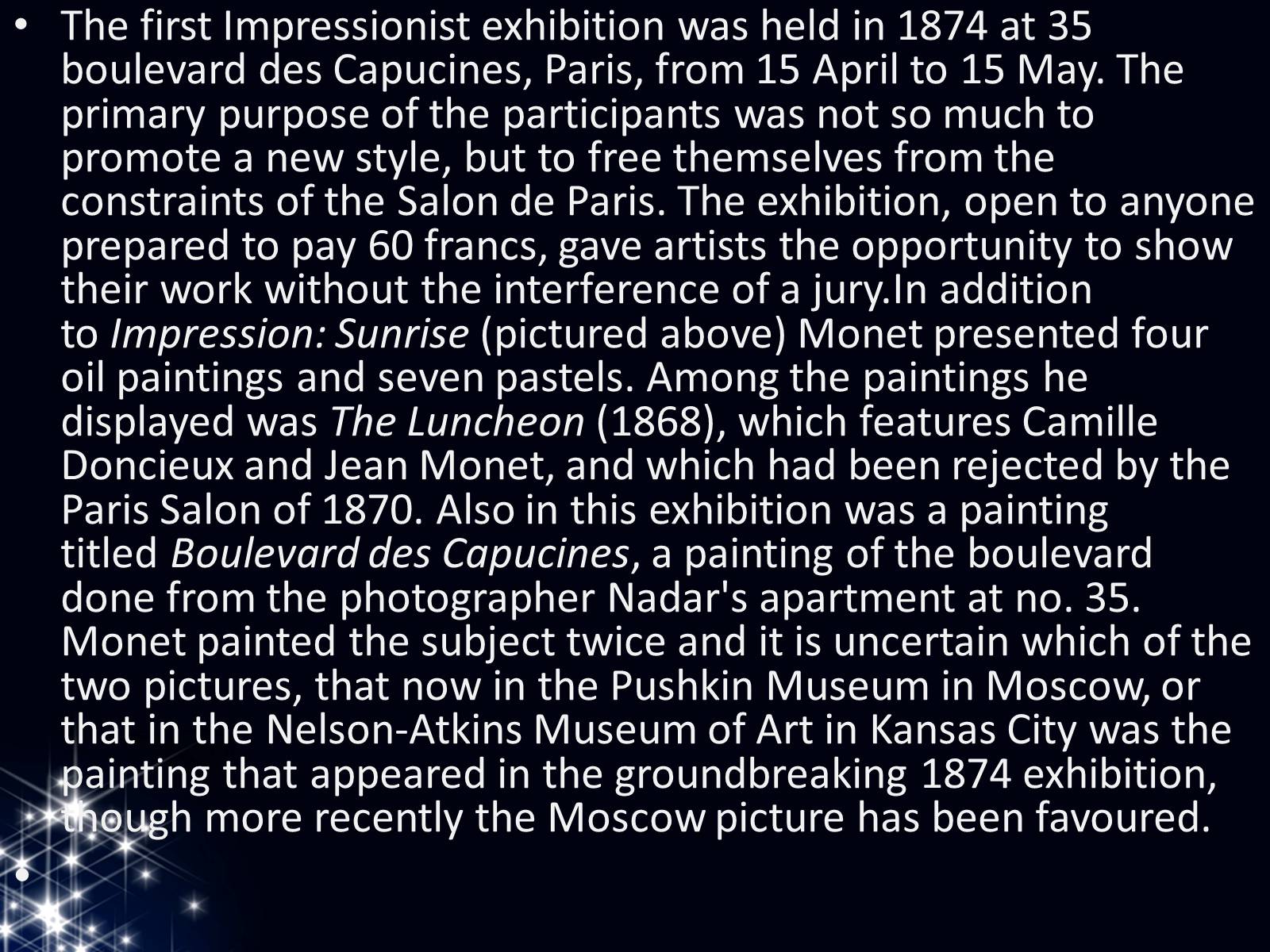
Слайд #5
Paintings 1858-1870
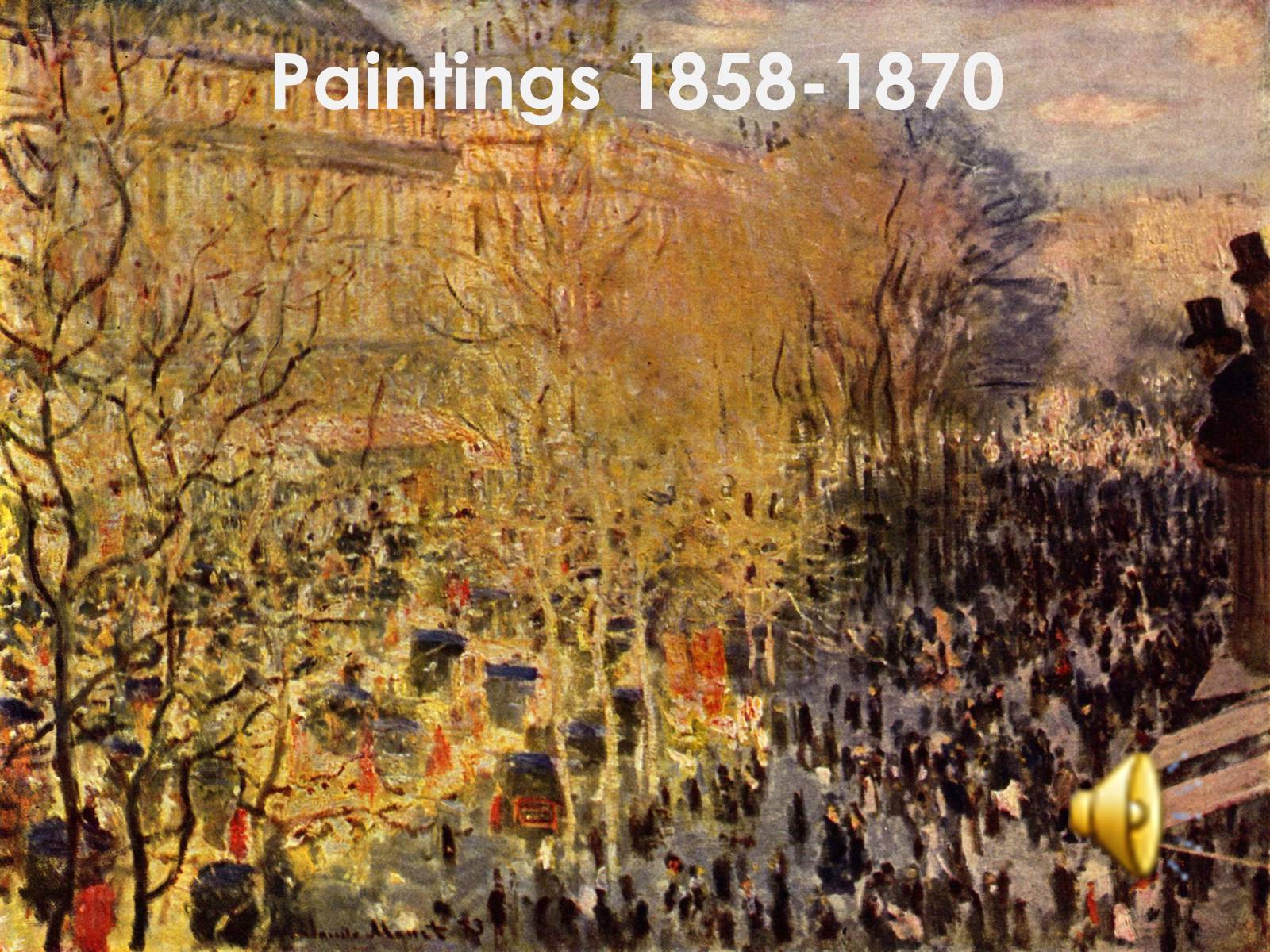
Слайд #6
View at Rouelles, Le Havre 1858,
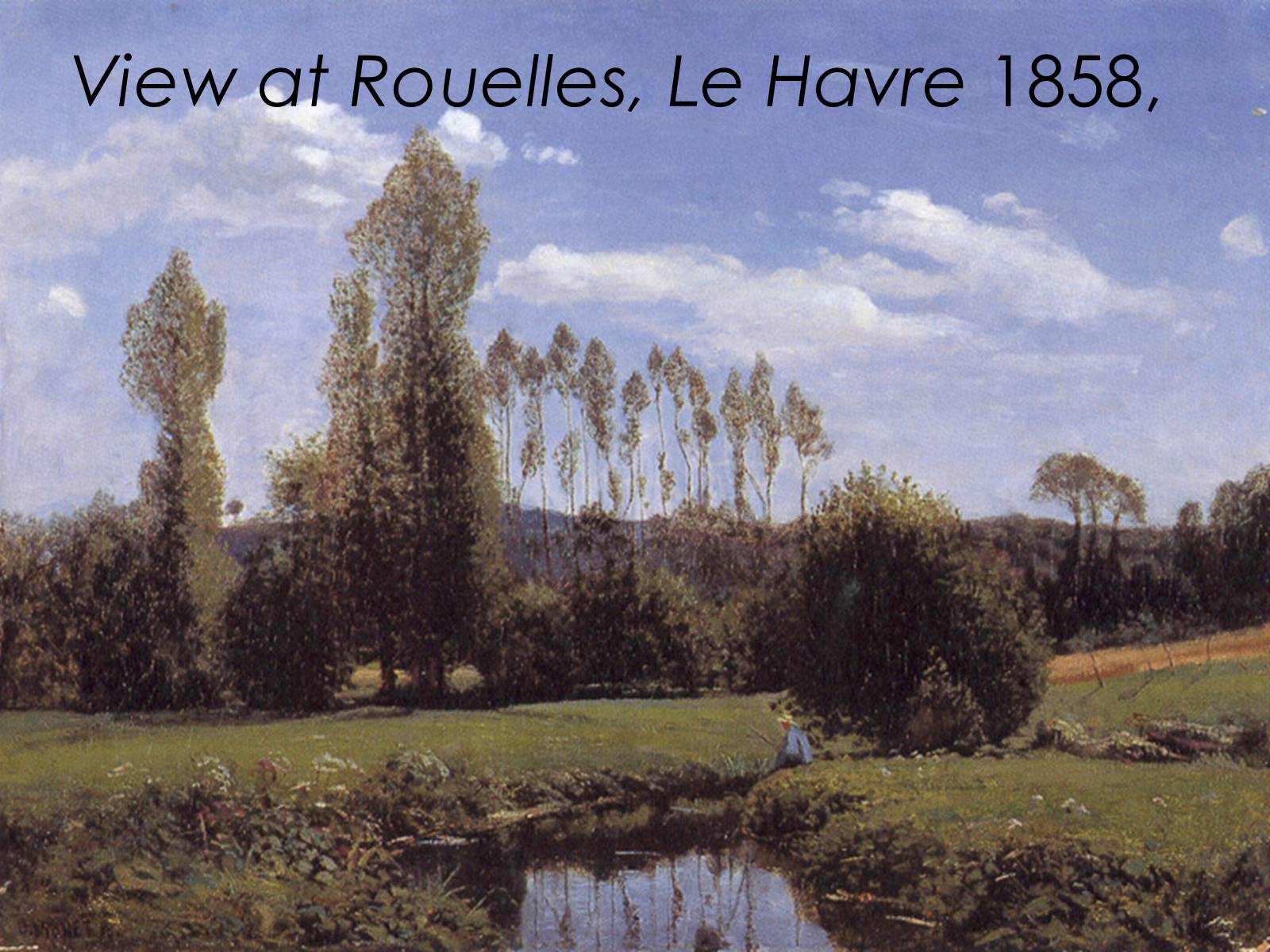
Слайд #7
Mouth of the Seine at Honfleur, 1865,
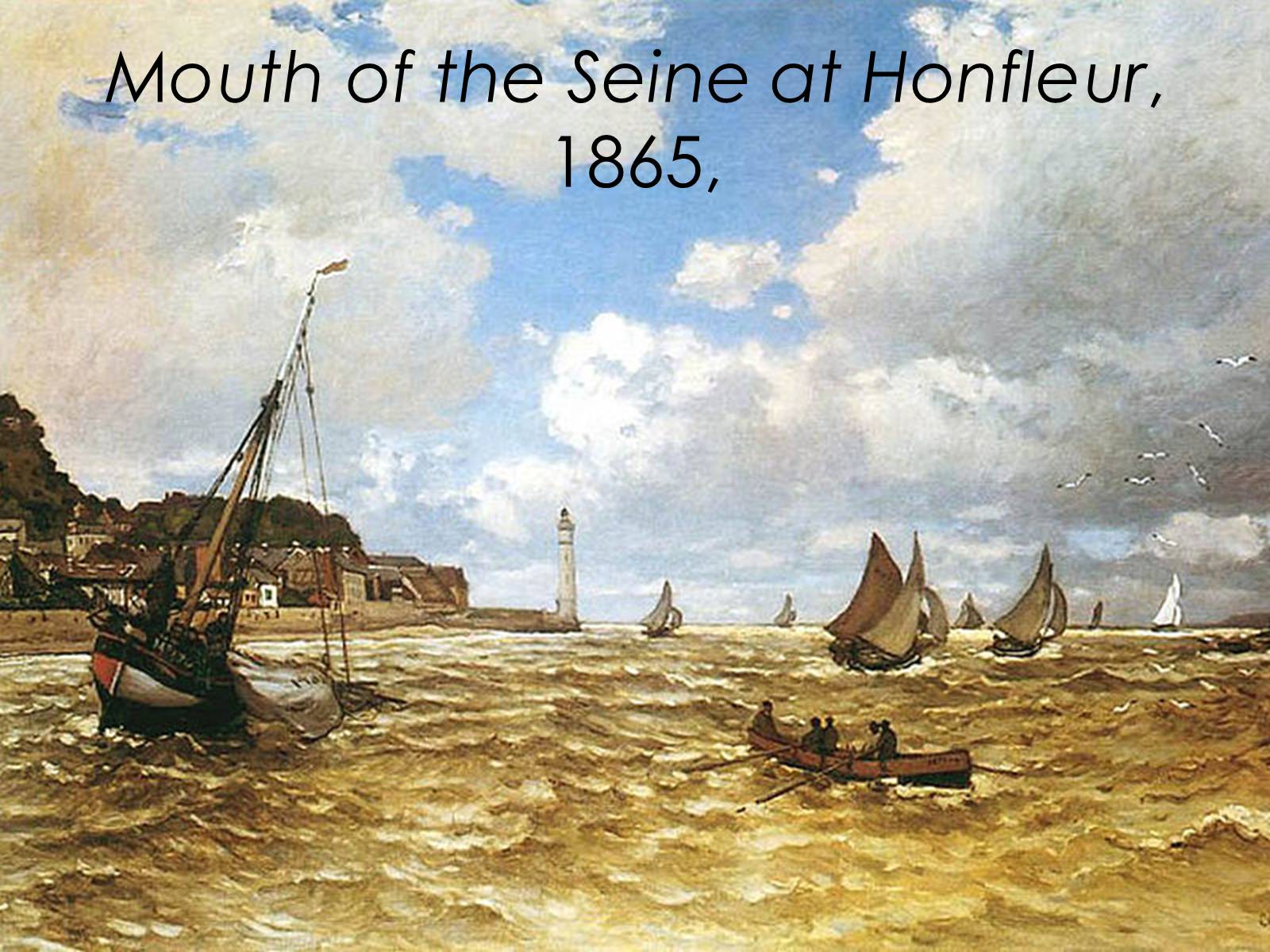
Слайд #8
Women in a Garden, 1866–1867,
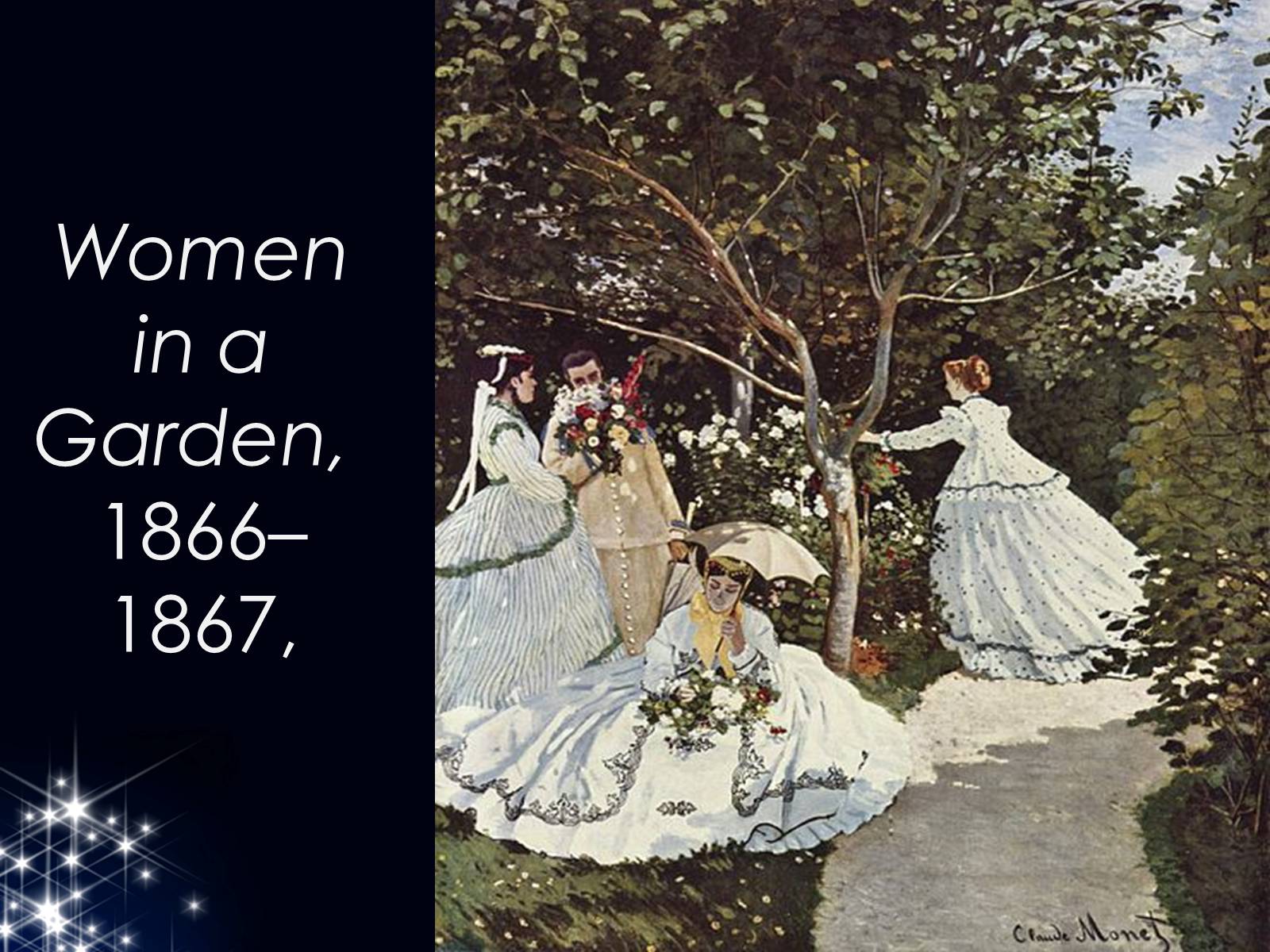
Слайд #9
Woman in a Garden, 1867,
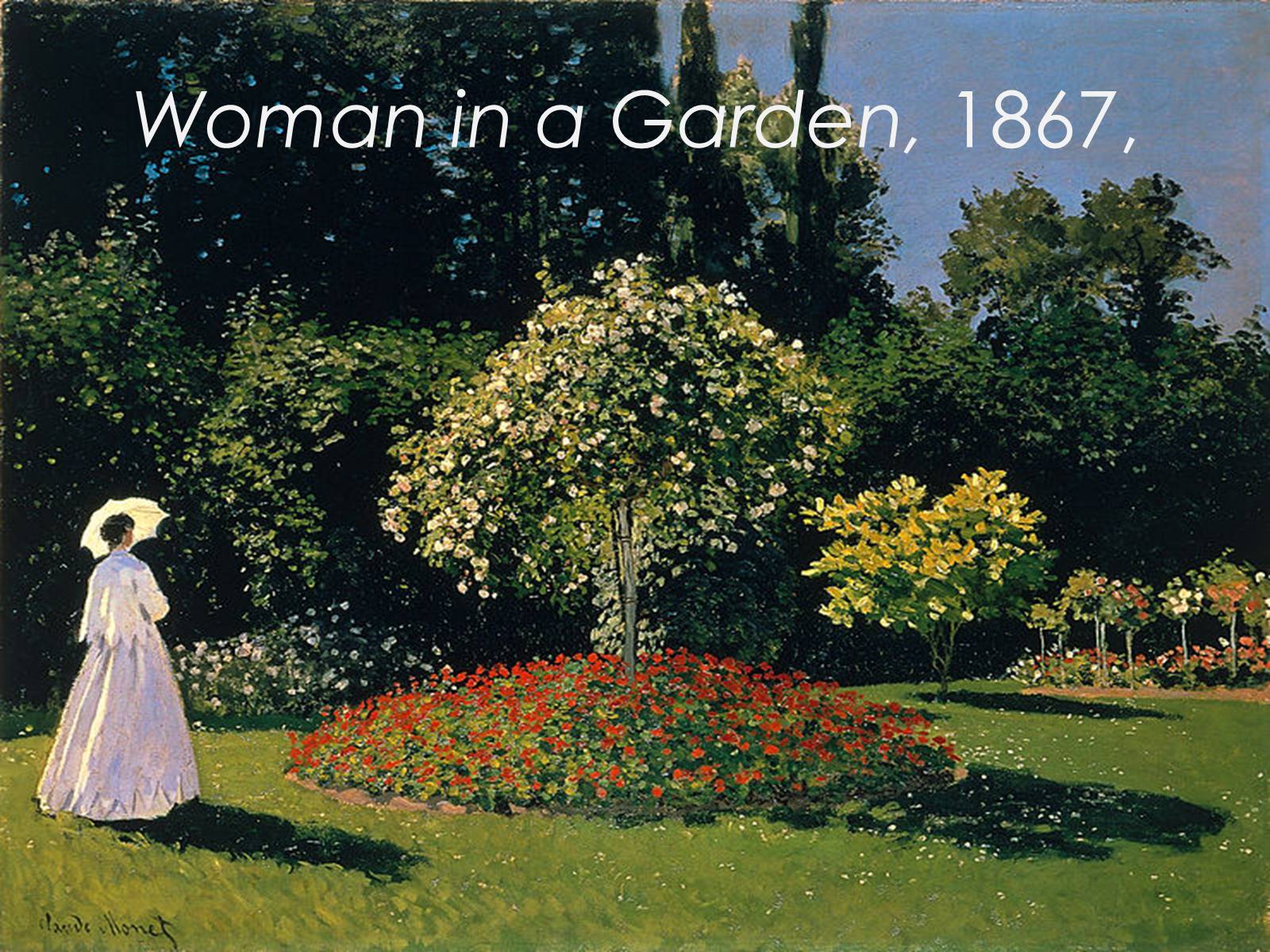
Слайд #10
Jardin à Sainte-Adresse, 1867,
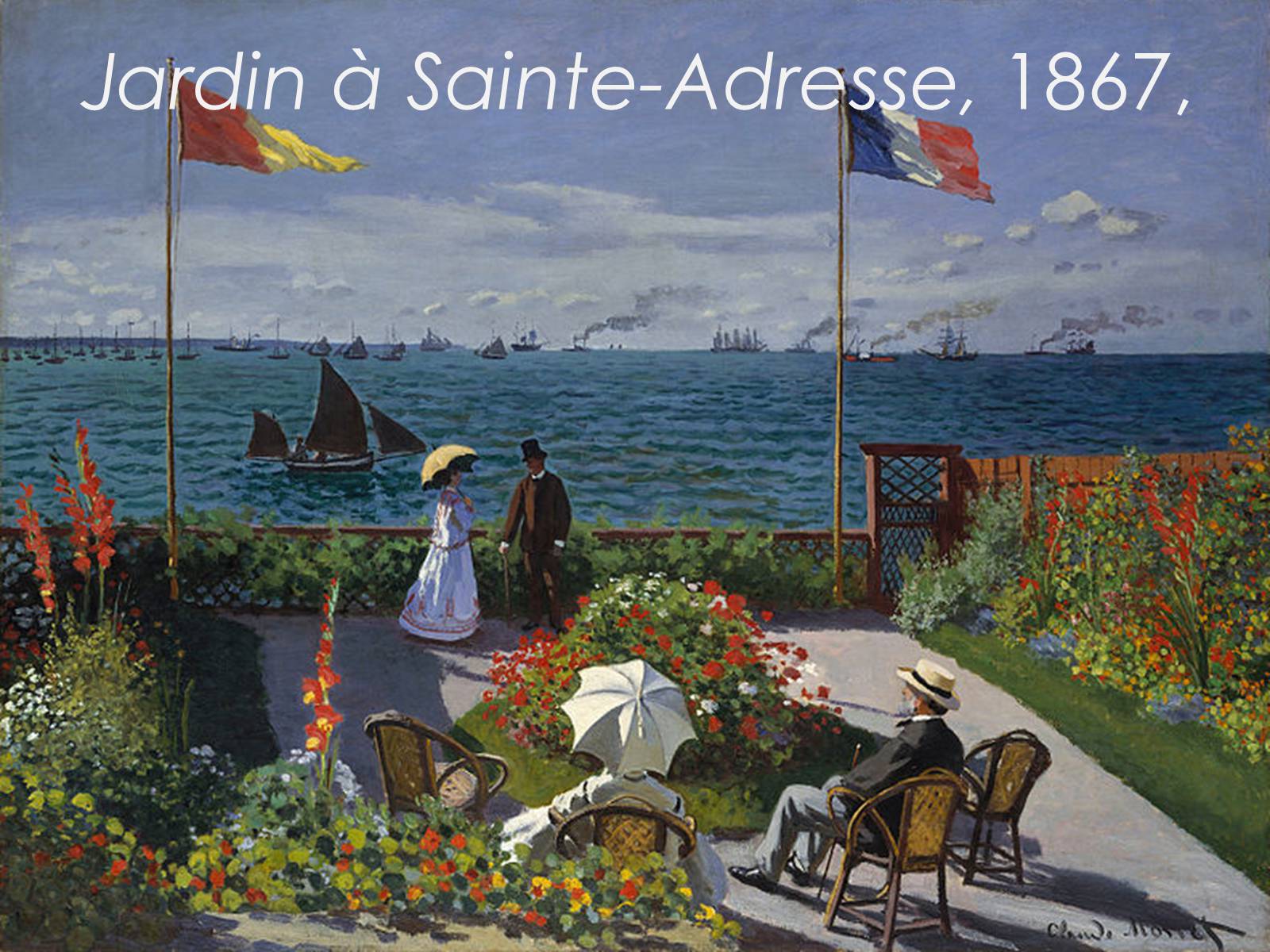
Слайд #11
The Luncheon, 1868
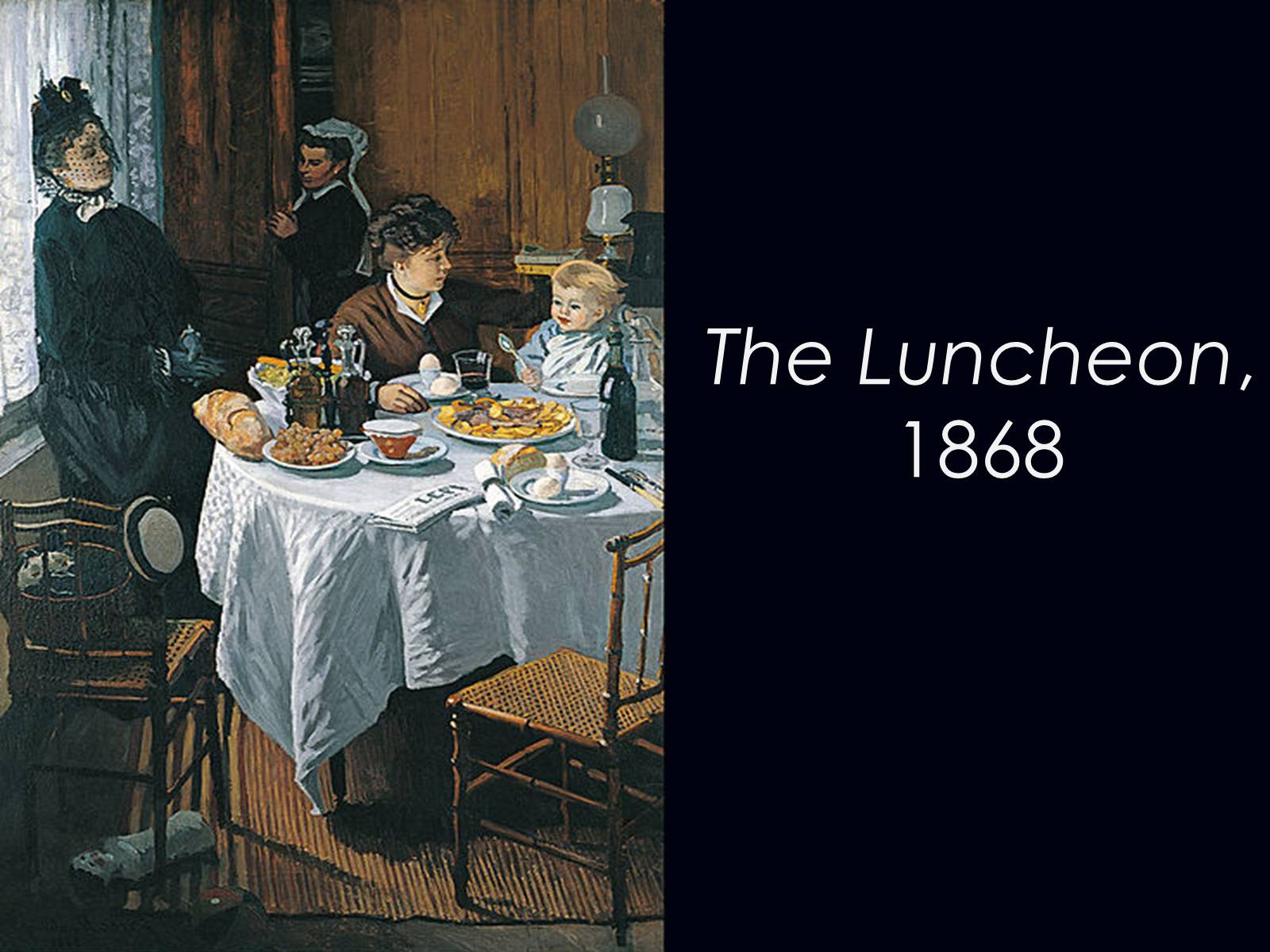
Слайд #12
La Grenouillére 1869
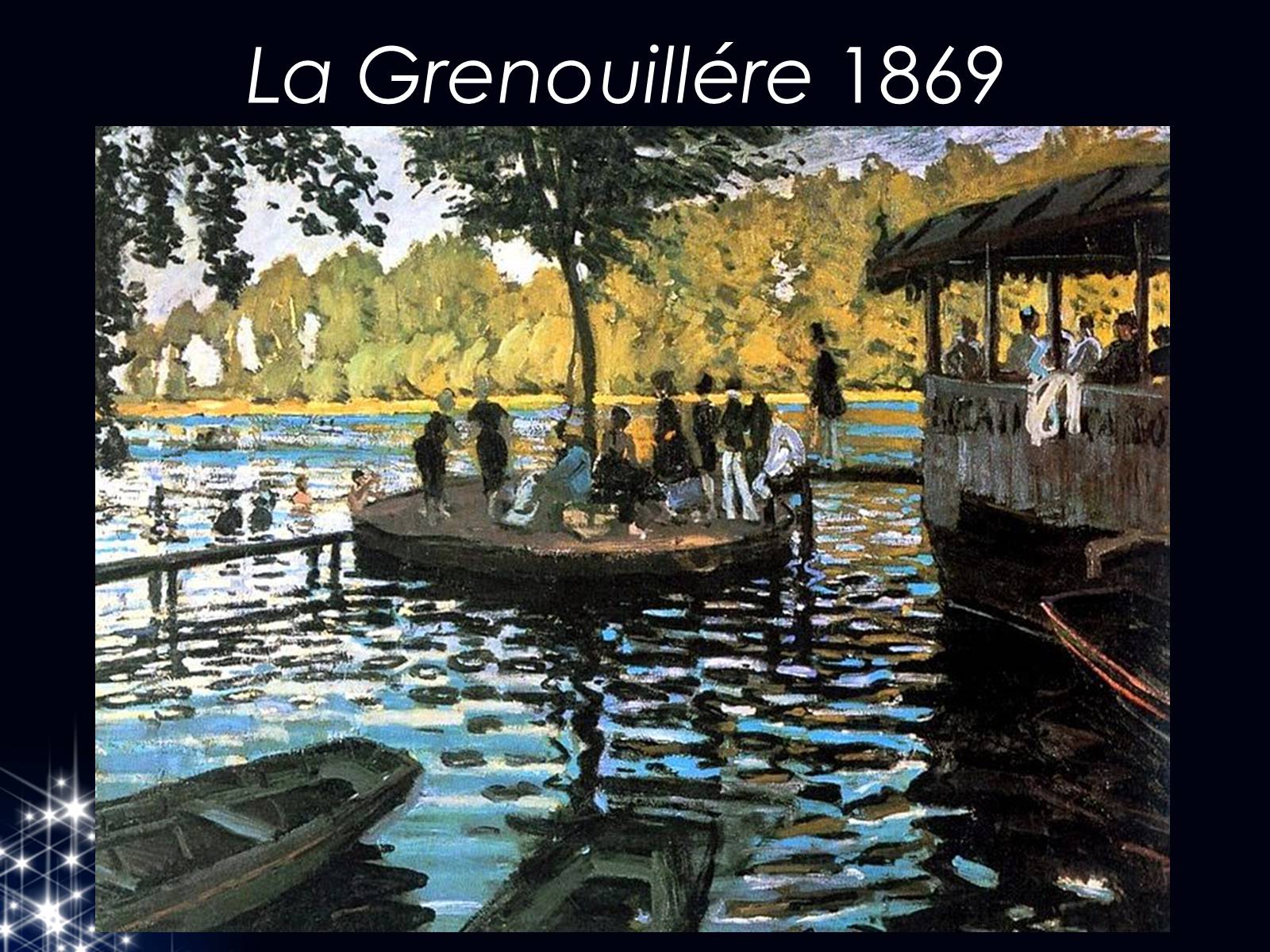
Слайд #13
The Magpie
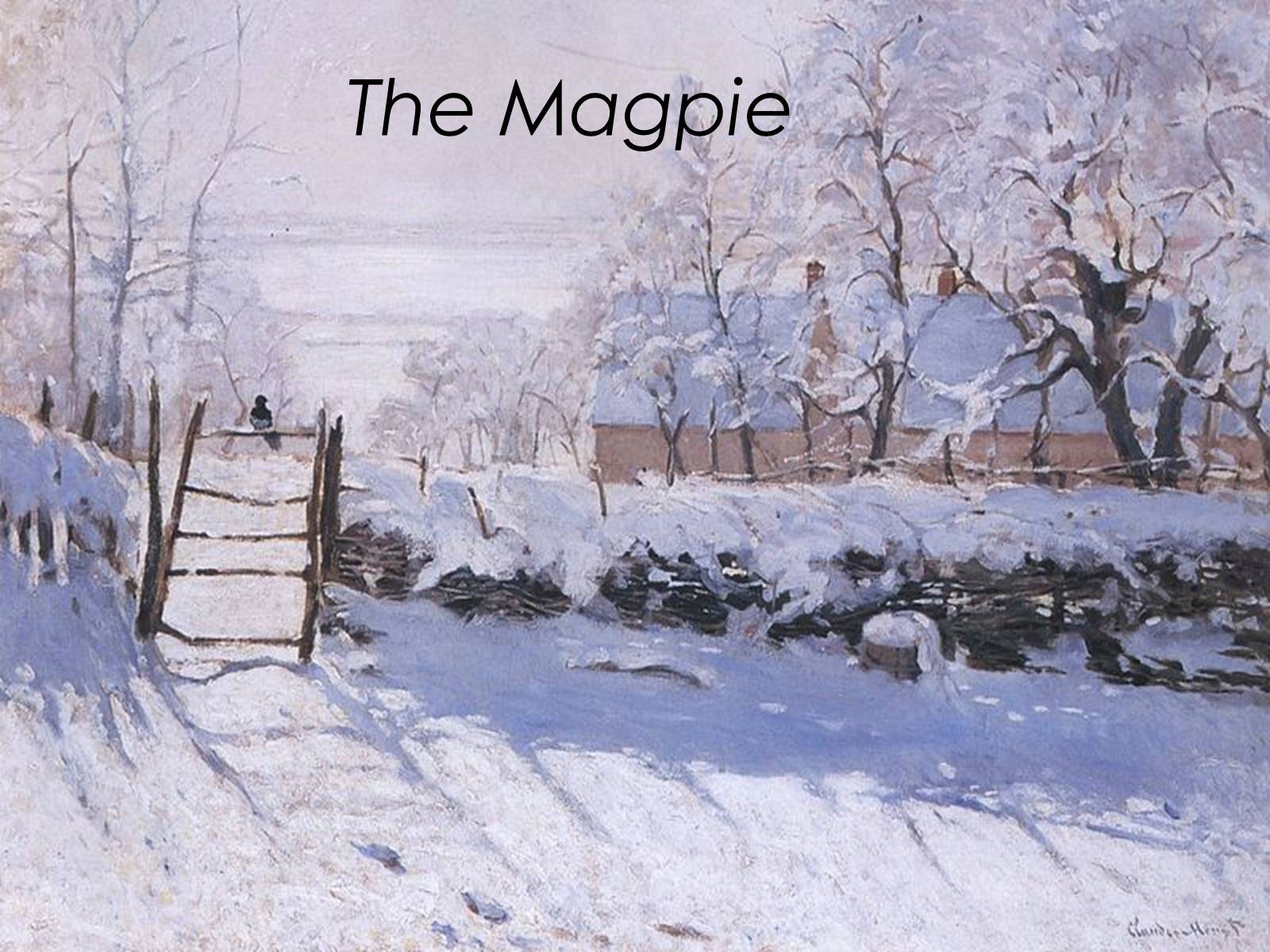
Слайд #14
Le port de Trouville (Breakwater at Trouville, Low Tide)
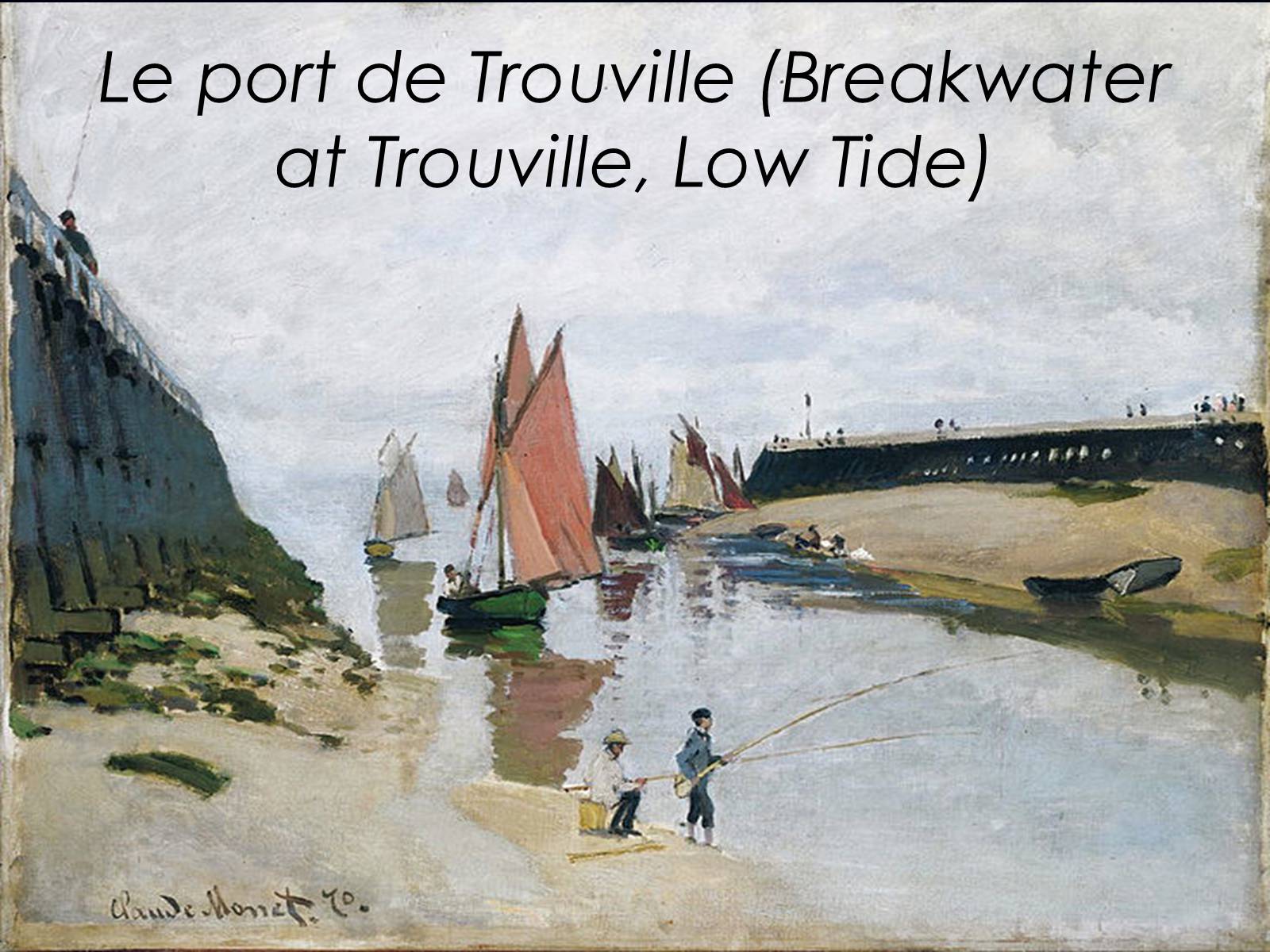
Слайд #15
La plage de Trouville, 1870
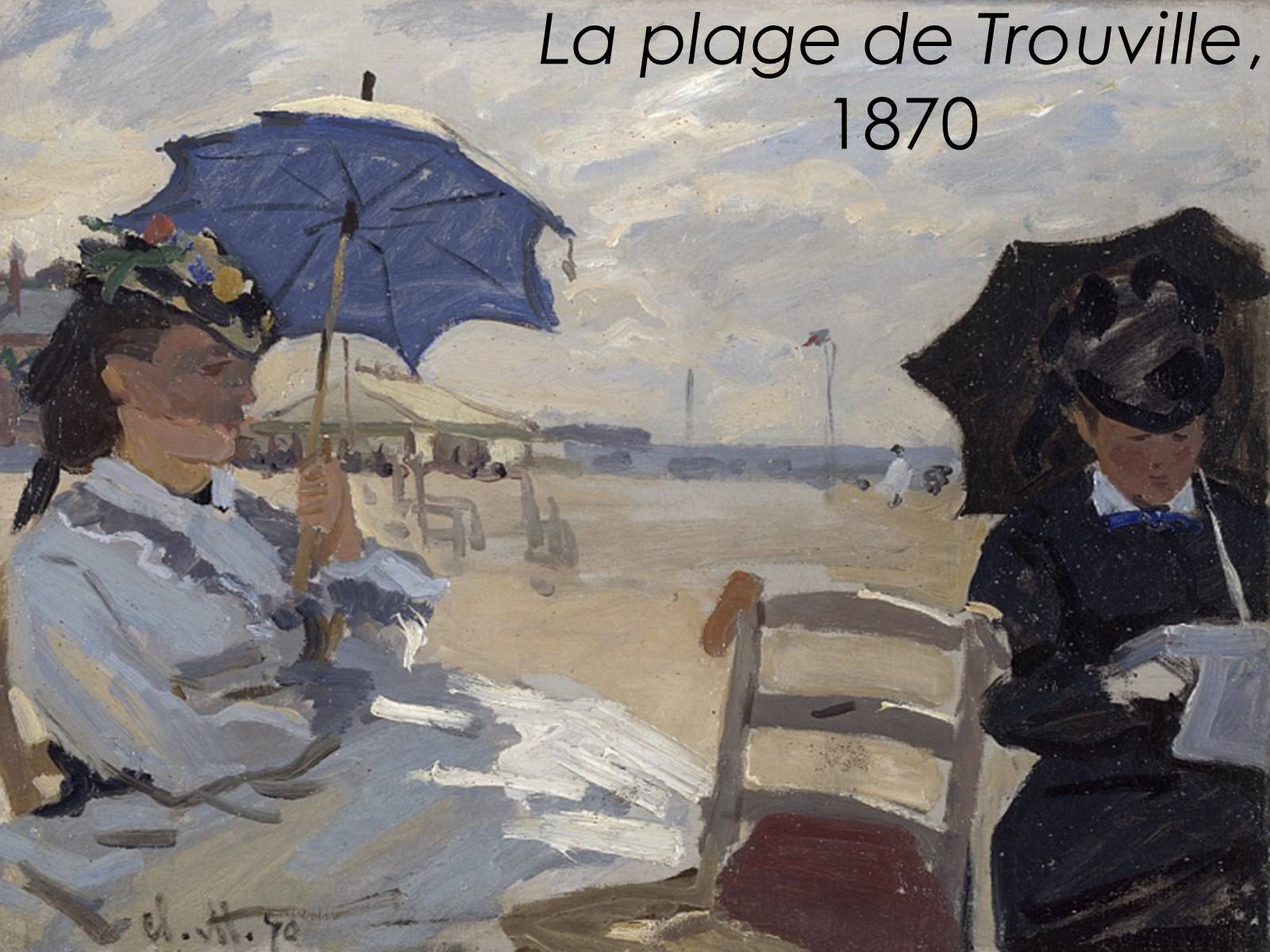
Слайд #16
Death of Camille
In 1876, Camille Monet became ill with tuberculosis. Camille Monet was diagnosed with uterine cancer, and she died on 5 September 1879 at the age of thirty-two. Monet made a study in oils of his dead wife. Many years later, Monet confessed to his friend Georges Clemenceau that his need to analyse colours was both the joy and torment of his life. He explained,
"I one day found myself looking at my beloved wife's dead face and just systematically noting the colours according to an automatic reflex!"
In 1876, Camille Monet became ill with tuberculosis. Camille Monet was diagnosed with uterine cancer, and she died on 5 September 1879 at the age of thirty-two. Monet made a study in oils of his dead wife. Many years later, Monet confessed to his friend Georges Clemenceau that his need to analyse colours was both the joy and torment of his life. He explained,
"I one day found myself looking at my beloved wife's dead face and just systematically noting the colours according to an automatic reflex!"
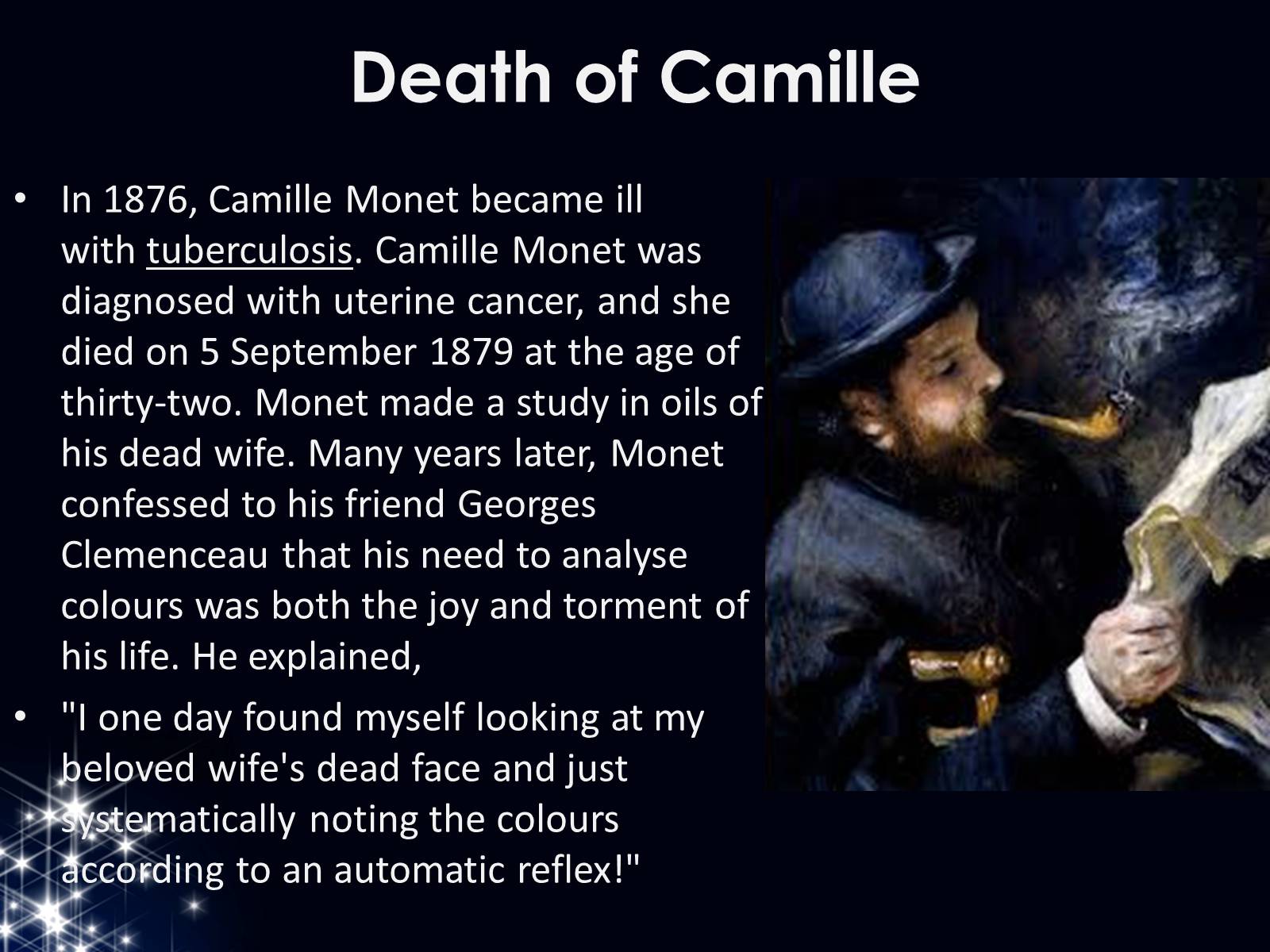
Слайд #17
John Berger describes the work as "a blizzard of white, grey, purplish paint ... a terrible blizzard of loss which will forever efface her features. In fact there can be very few death-bed paintings which have been so intensely felt or subjectively expressive."
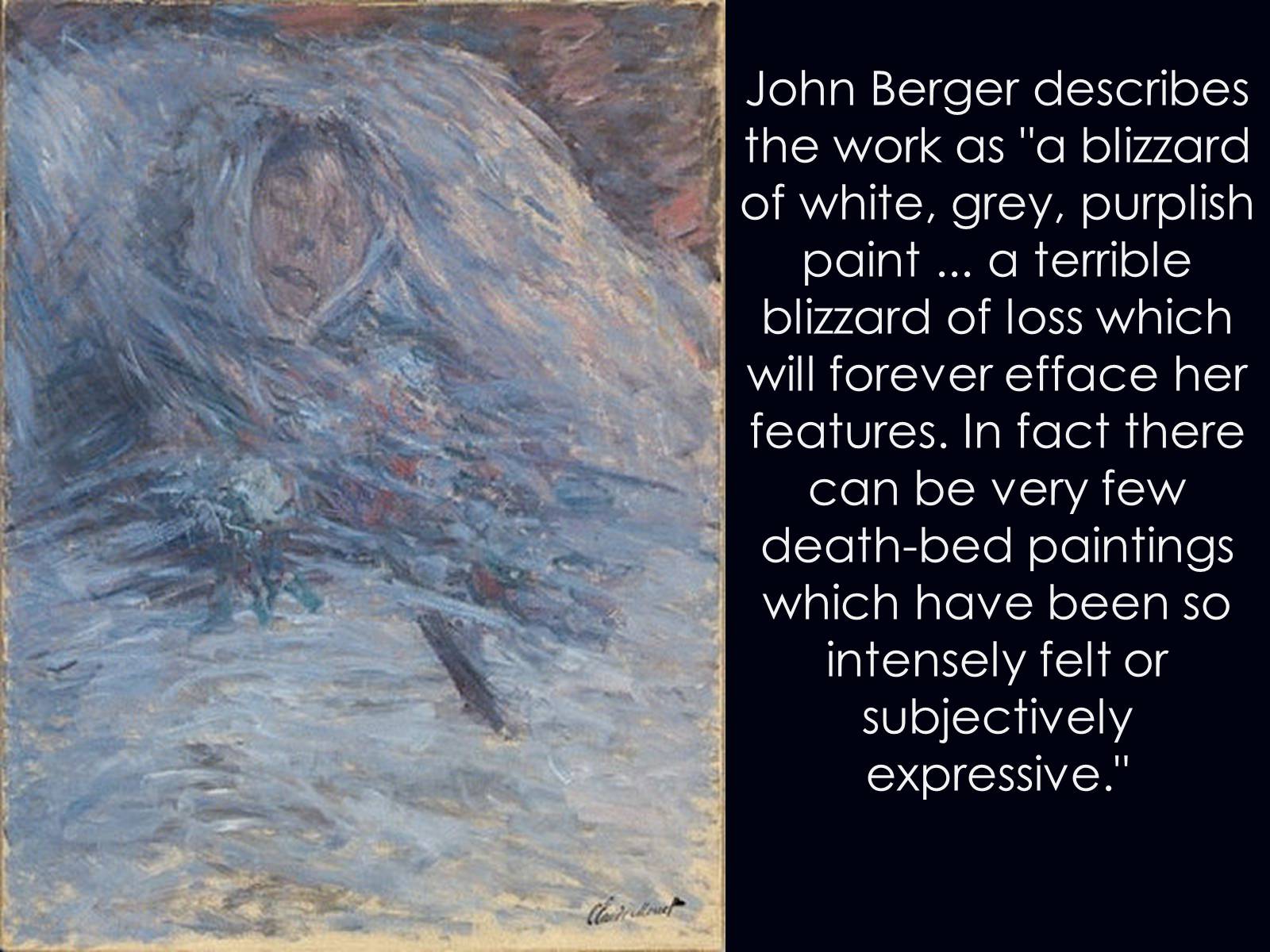
Слайд #18
Vétheuile
After several difficult months following the death of Camille, Monet began to create some of his best paintings of the 19th century. During the early 1880s, Monet painted several groups of landscapes and seascapes in what he considered to be campaigns to document the French countryside. These began to evolve into series of pictures in which he documented the same scene many times in order to capture the changing of light and the passing of the seasons.
After several difficult months following the death of Camille, Monet began to create some of his best paintings of the 19th century. During the early 1880s, Monet painted several groups of landscapes and seascapes in what he considered to be campaigns to document the French countryside. These began to evolve into series of pictures in which he documented the same scene many times in order to capture the changing of light and the passing of the seasons.
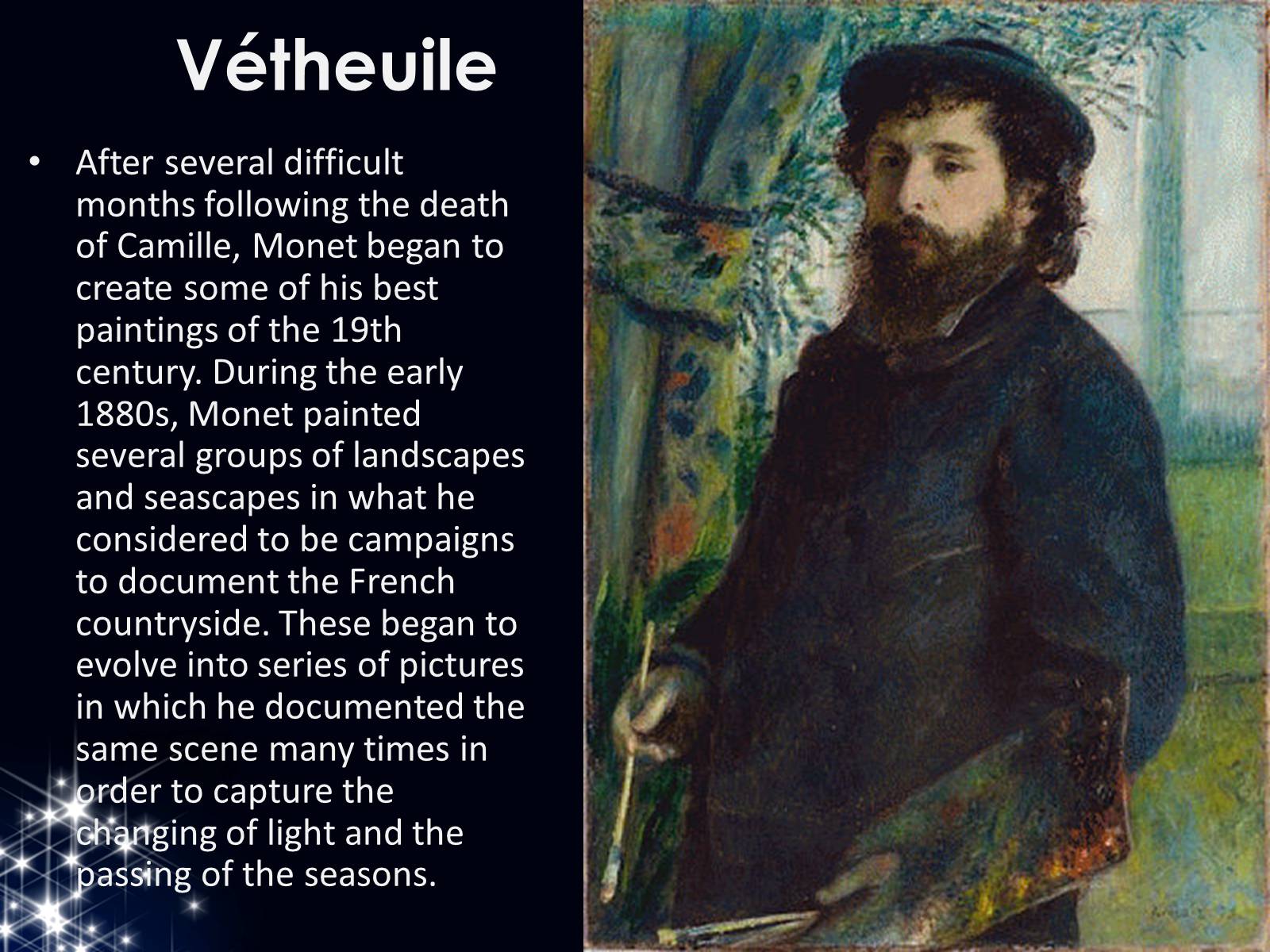
Слайд #19
Paintings 1872-1879
Jean Monet on his hobby horse,1872
Jean Monet on his hobby horse,1872

Слайд #20
Camille Monet on a Garden Bench,1873
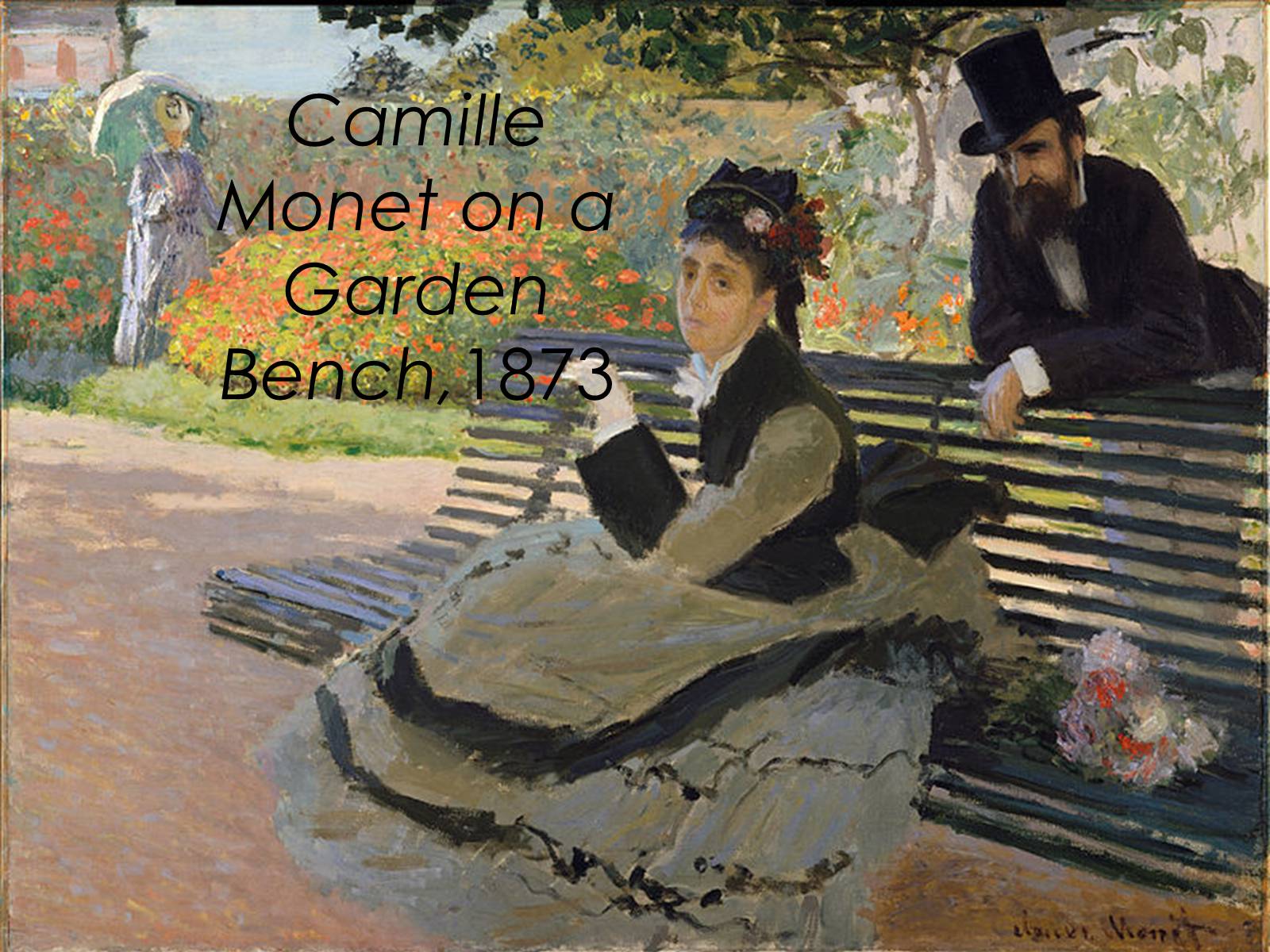
Слайд #21
The Artist's house at Argenteuil, 1873
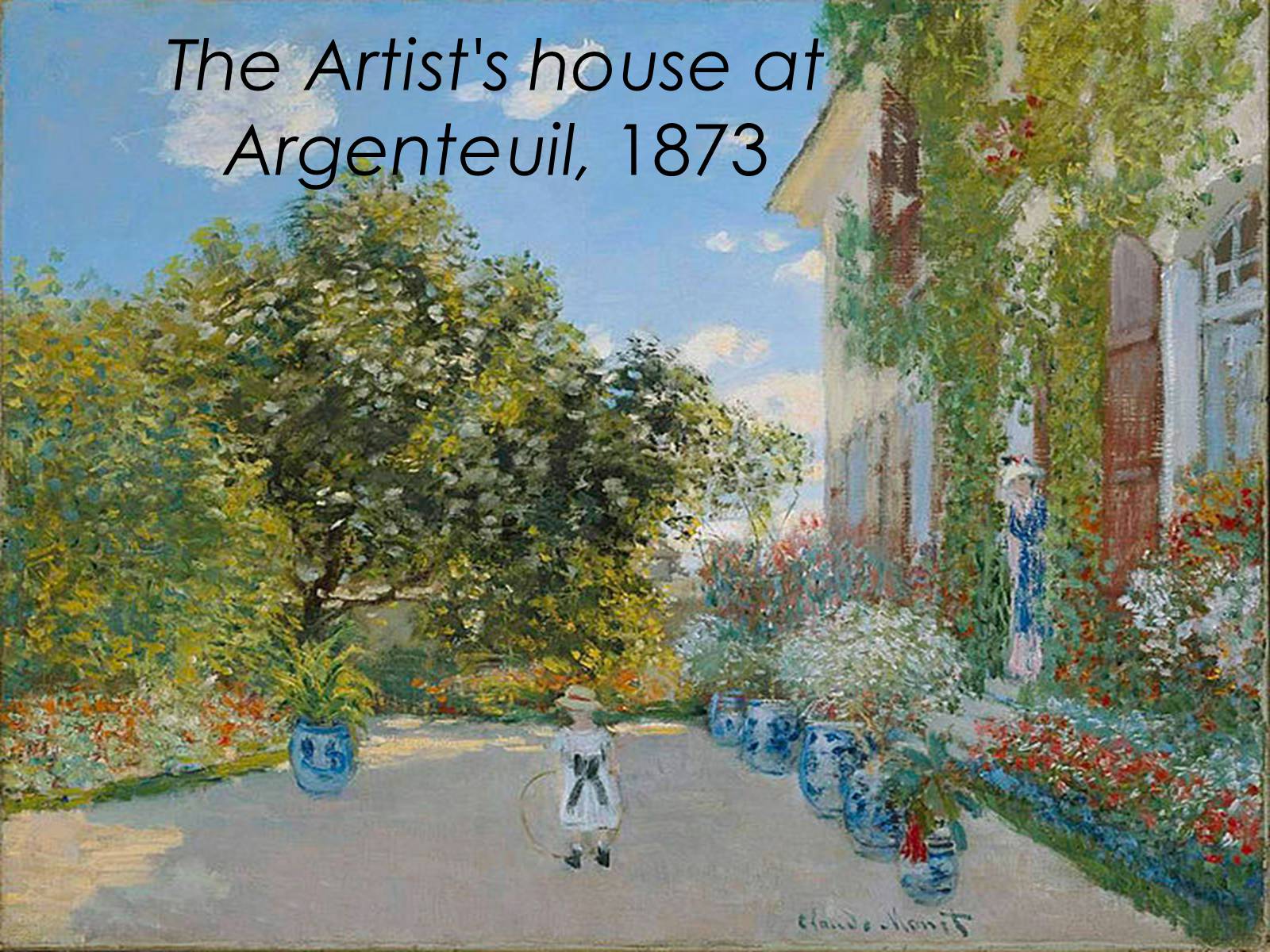
Слайд #22
Coquelicots, La promenade (Poppies), 1873
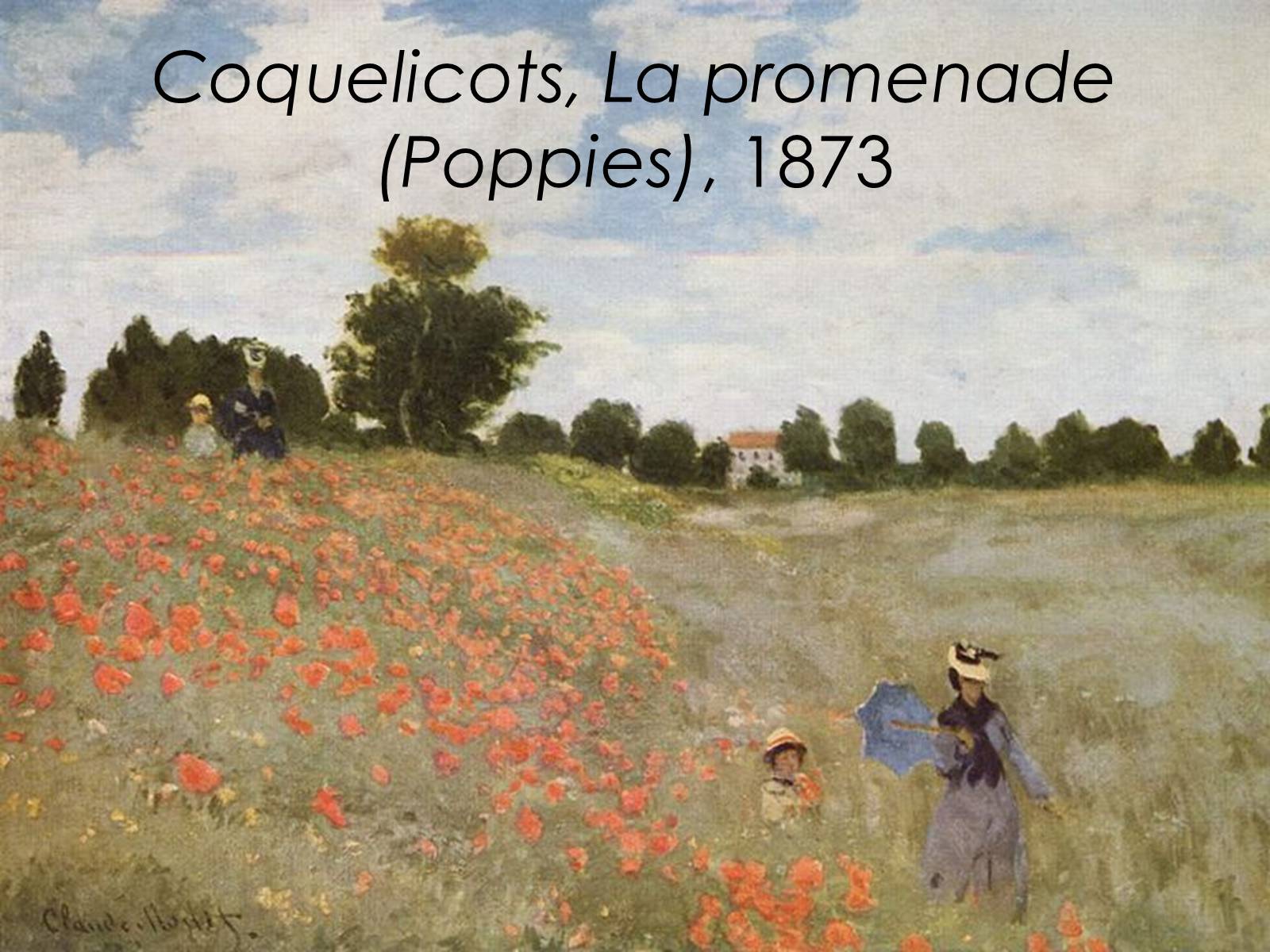
Слайд #23
Argenteuil, 1874
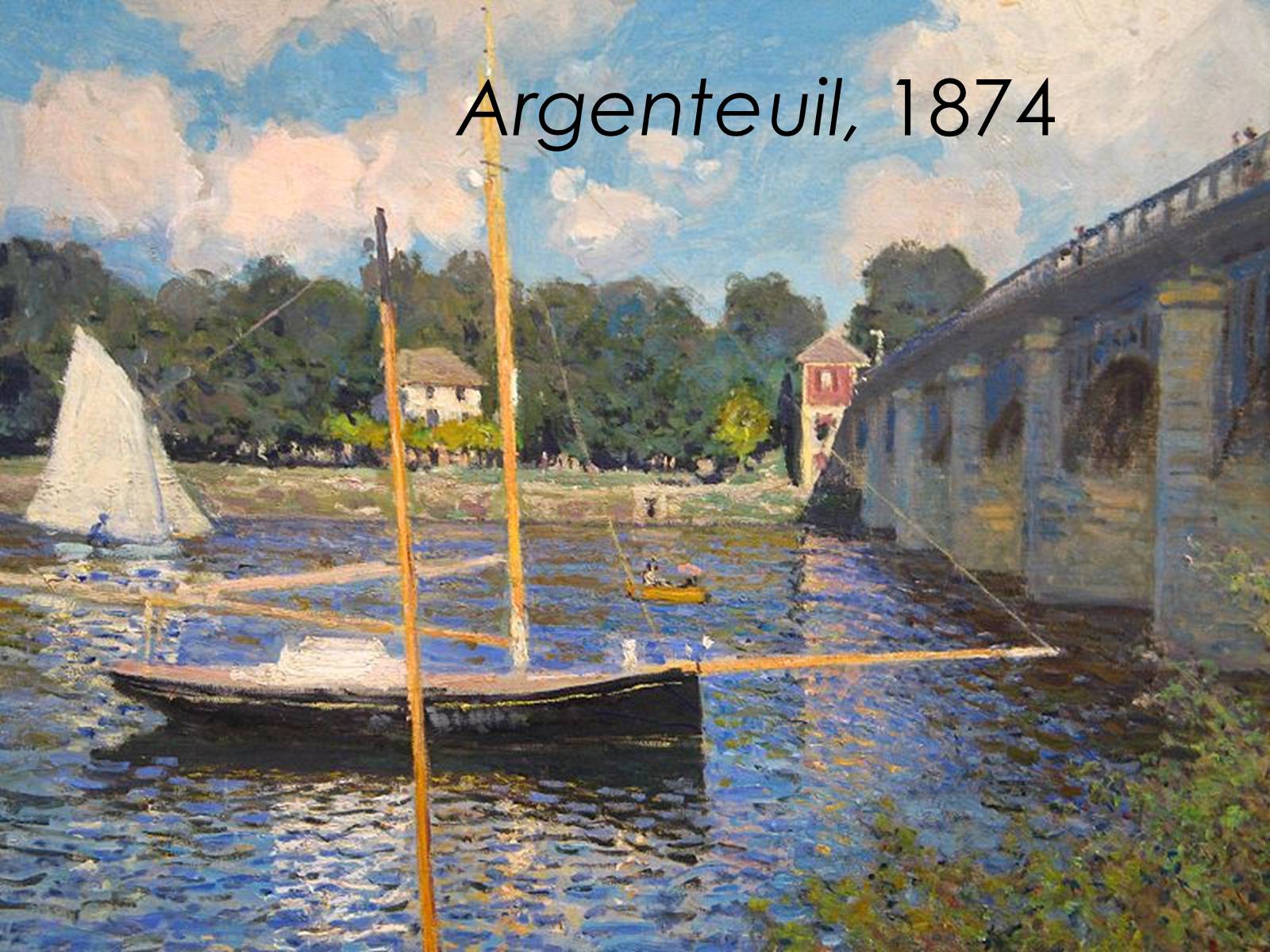
Слайд #24
The Studio Boat, 1874
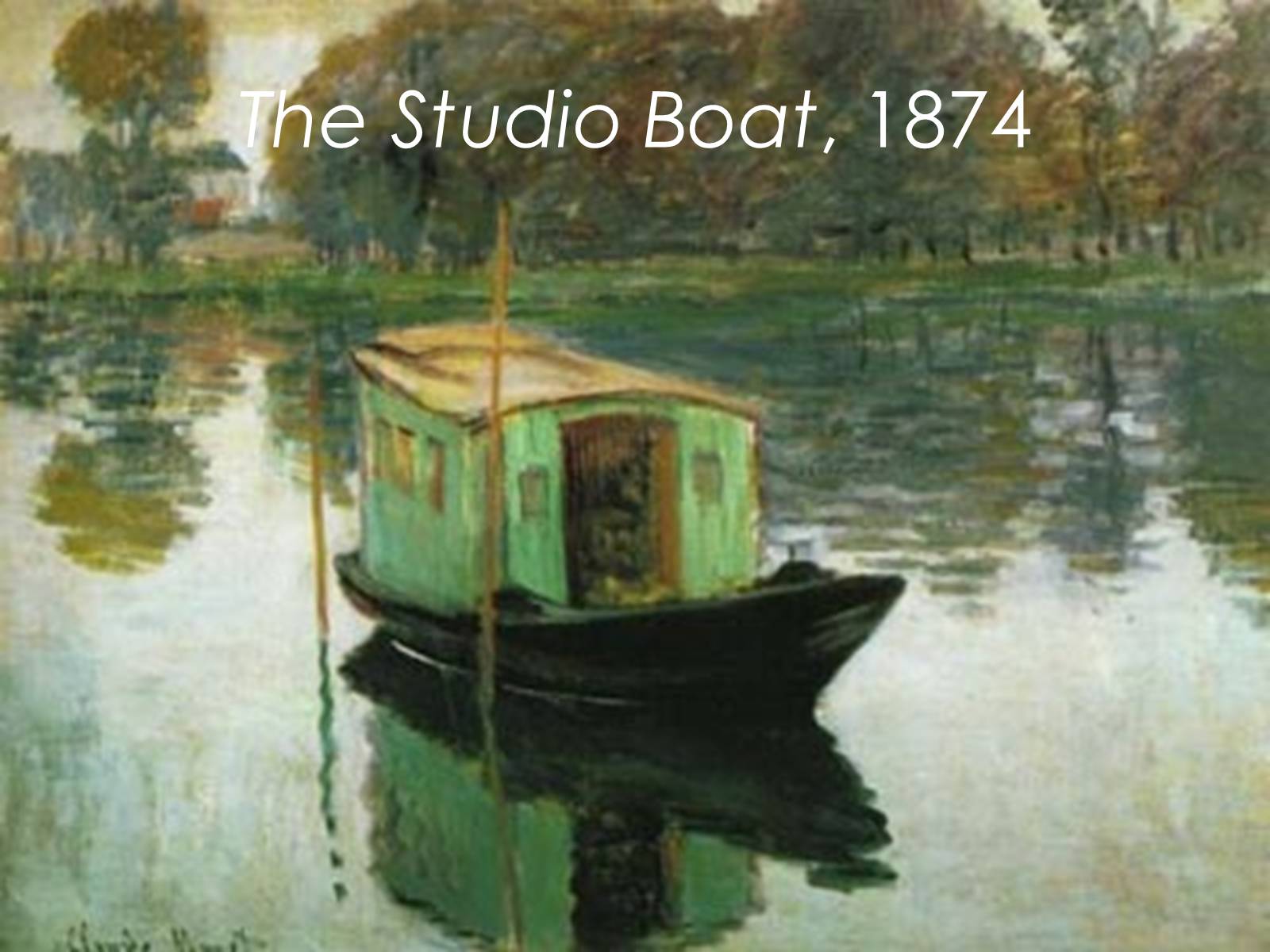
Слайд #25
Flowers on the riverbank at Argenteuil, 1877
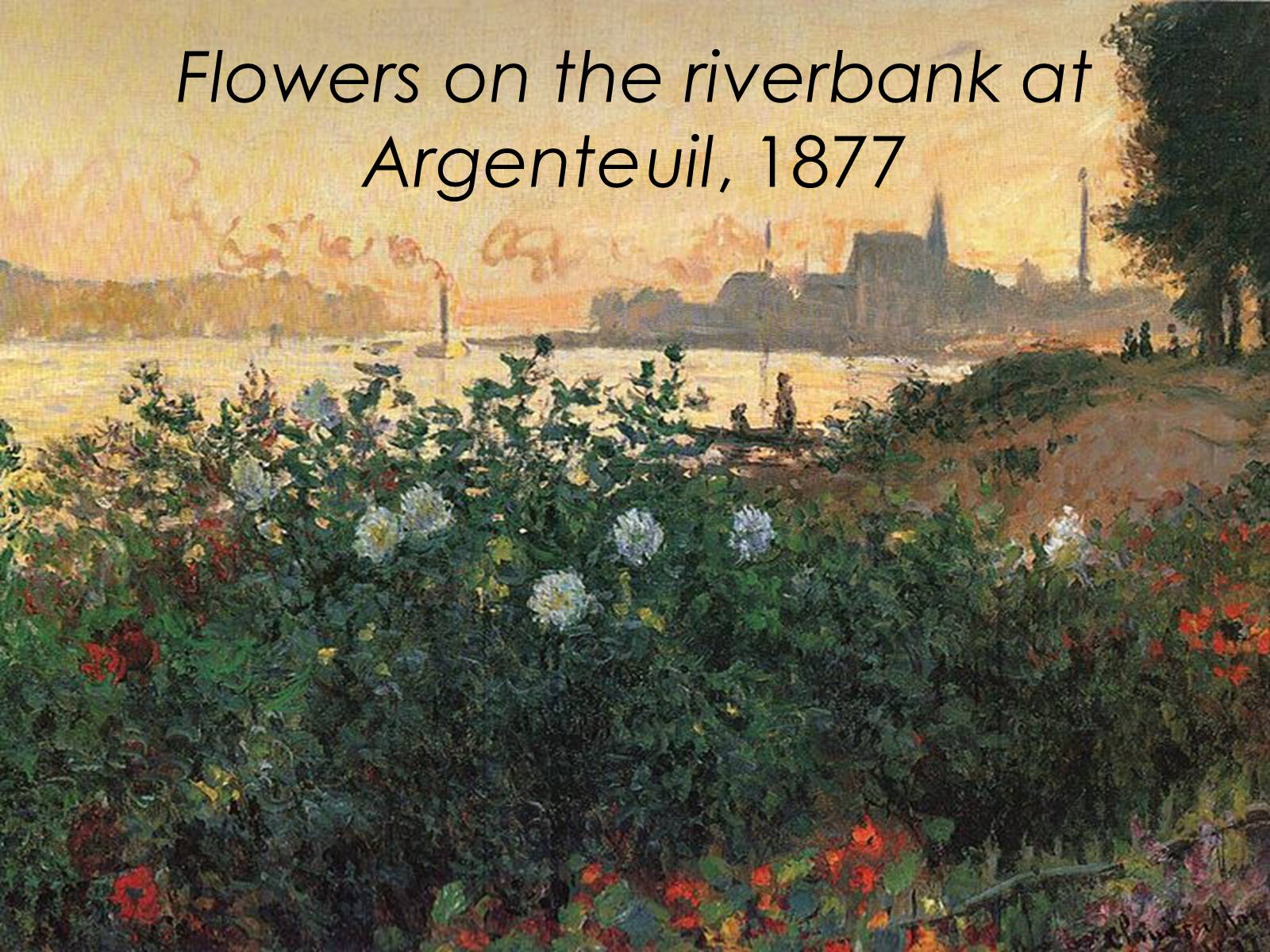
Слайд #26
Vétheuil in the Fog, 1879
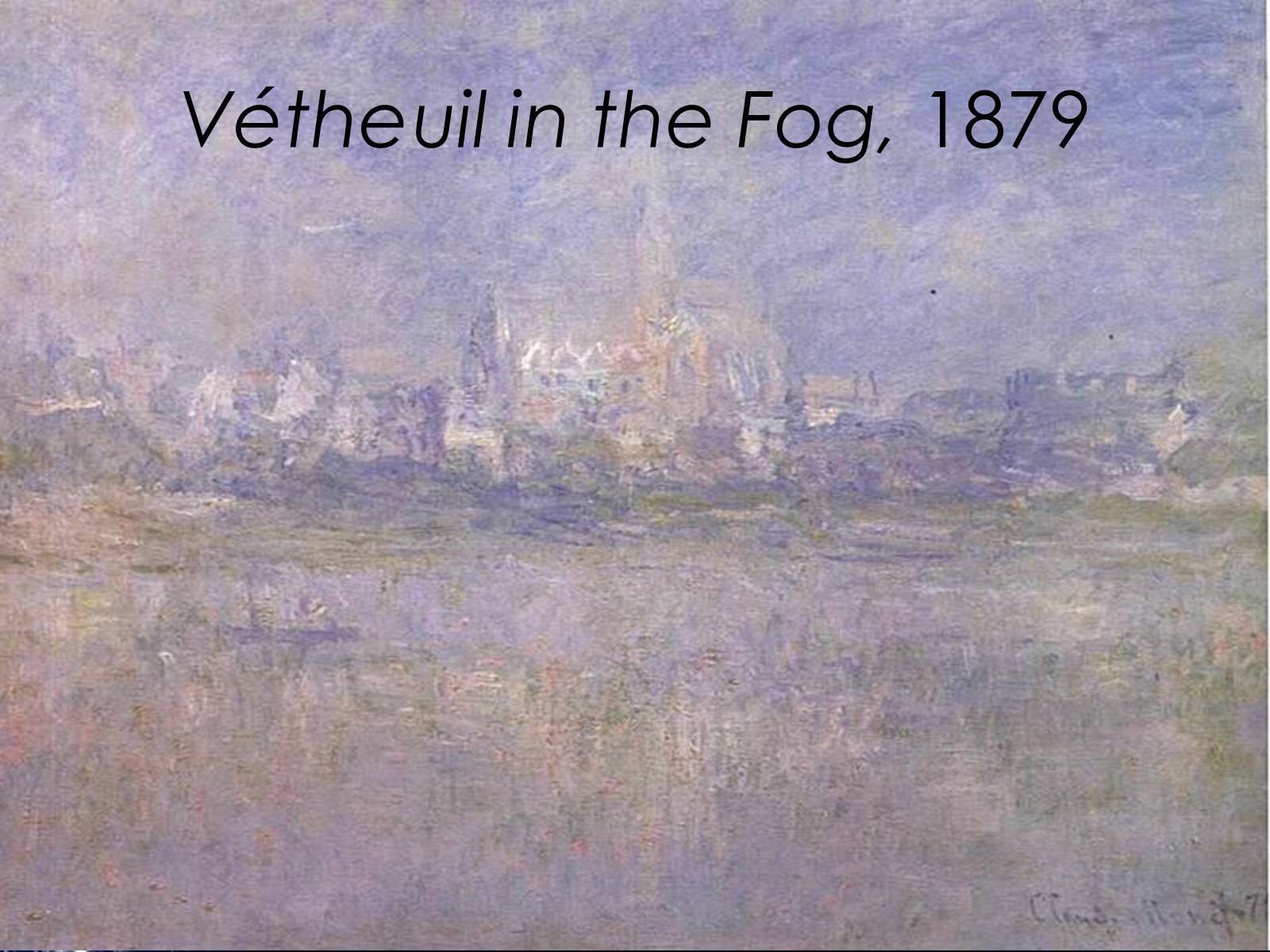
Слайд #27
Giverny
At the beginning of May 1883, Monet and his large family rented a house and 2 acres (8,100 m2) from a local landowner. Monet wrote daily instructions to his gardener, precise designs and layouts for plantings, and invoices for his floral purchases and his collection of botany books. As Monet's wealth grew, his garden evolved. He remained its architect, even after he hired seven gardeners.
At the beginning of May 1883, Monet and his large family rented a house and 2 acres (8,100 m2) from a local landowner. Monet wrote daily instructions to his gardener, precise designs and layouts for plantings, and invoices for his floral purchases and his collection of botany books. As Monet's wealth grew, his garden evolved. He remained its architect, even after he hired seven gardeners.
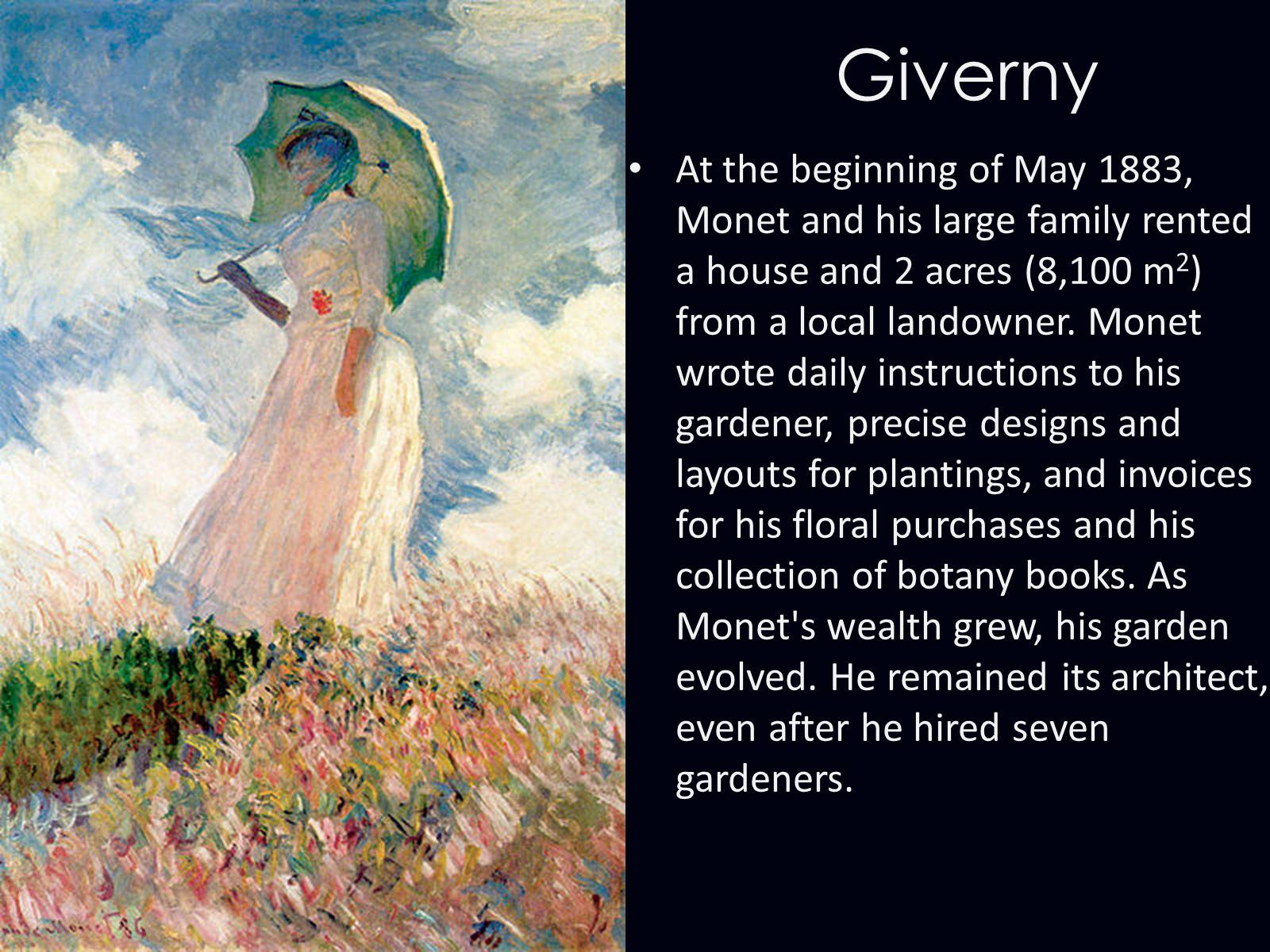
Слайд #28
Monet purchased additional land with a water meadow. In 1893 he began a vast landscaping project which included lily ponds that would become the subjects of his best-known works. White water lilies local to France were planted along with imported cultivars from South America and Egypt, resulting in a range of colours including yellow, blue and white lilies that turned pink with age. In 1899 he began painting the water lilies, first in vertical views with a Japanese bridge as a central feature, and later on the series of large-scale paintings that was to occupy him continuously for the next 20 years of his life. This scenery, with its alternating light and mirror-like reflections, became an integral part of his work. By the mid-1910s Monet had achieved:
"a completely new, fluid, and somewhat audacious style of painting in which the water-lily pond became the point of departure for an almost abstract art." (Gary Tinterow)
"a completely new, fluid, and somewhat audacious style of painting in which the water-lily pond became the point of departure for an almost abstract art." (Gary Tinterow)
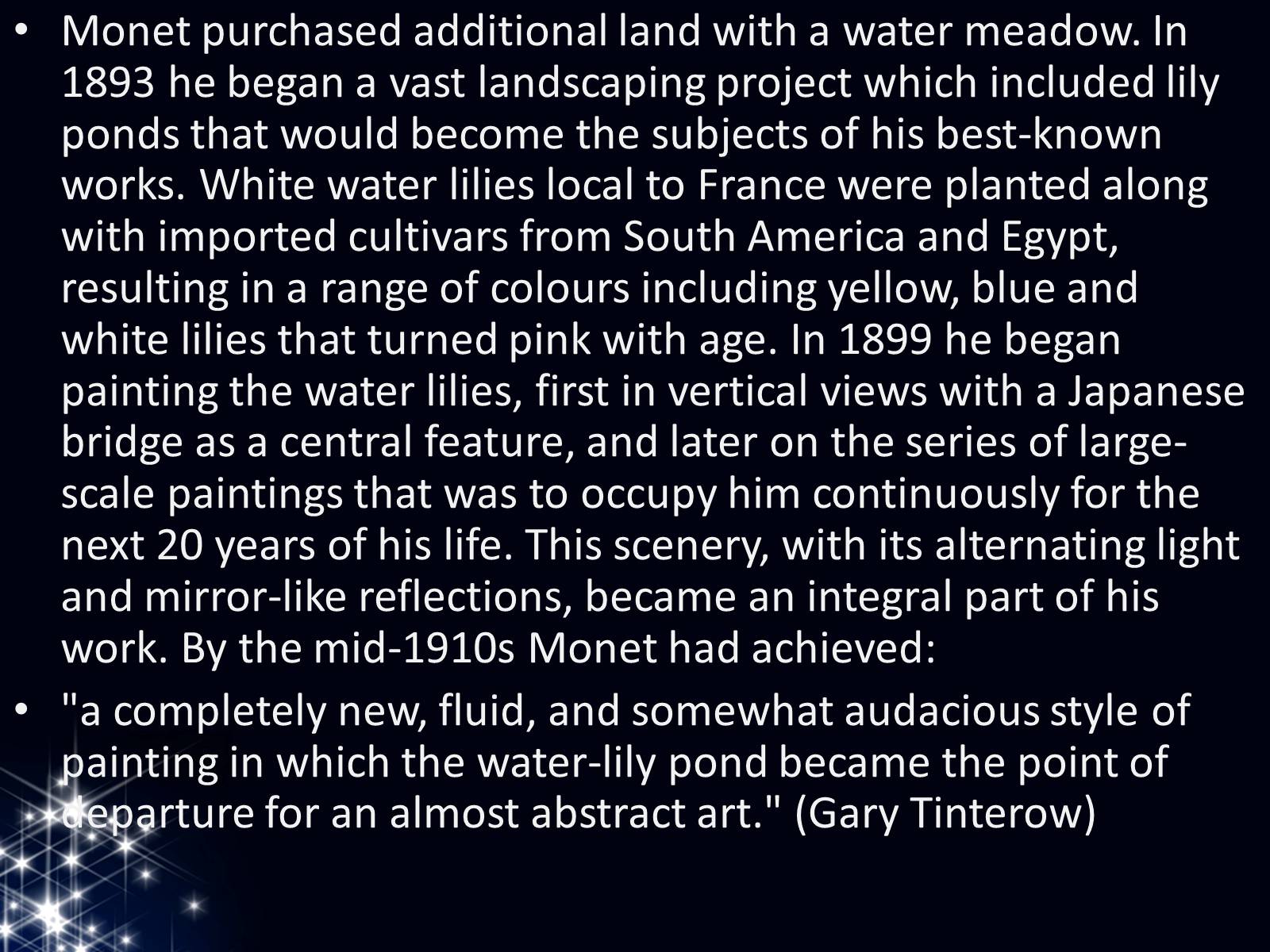
Слайд #29
Monet's garden
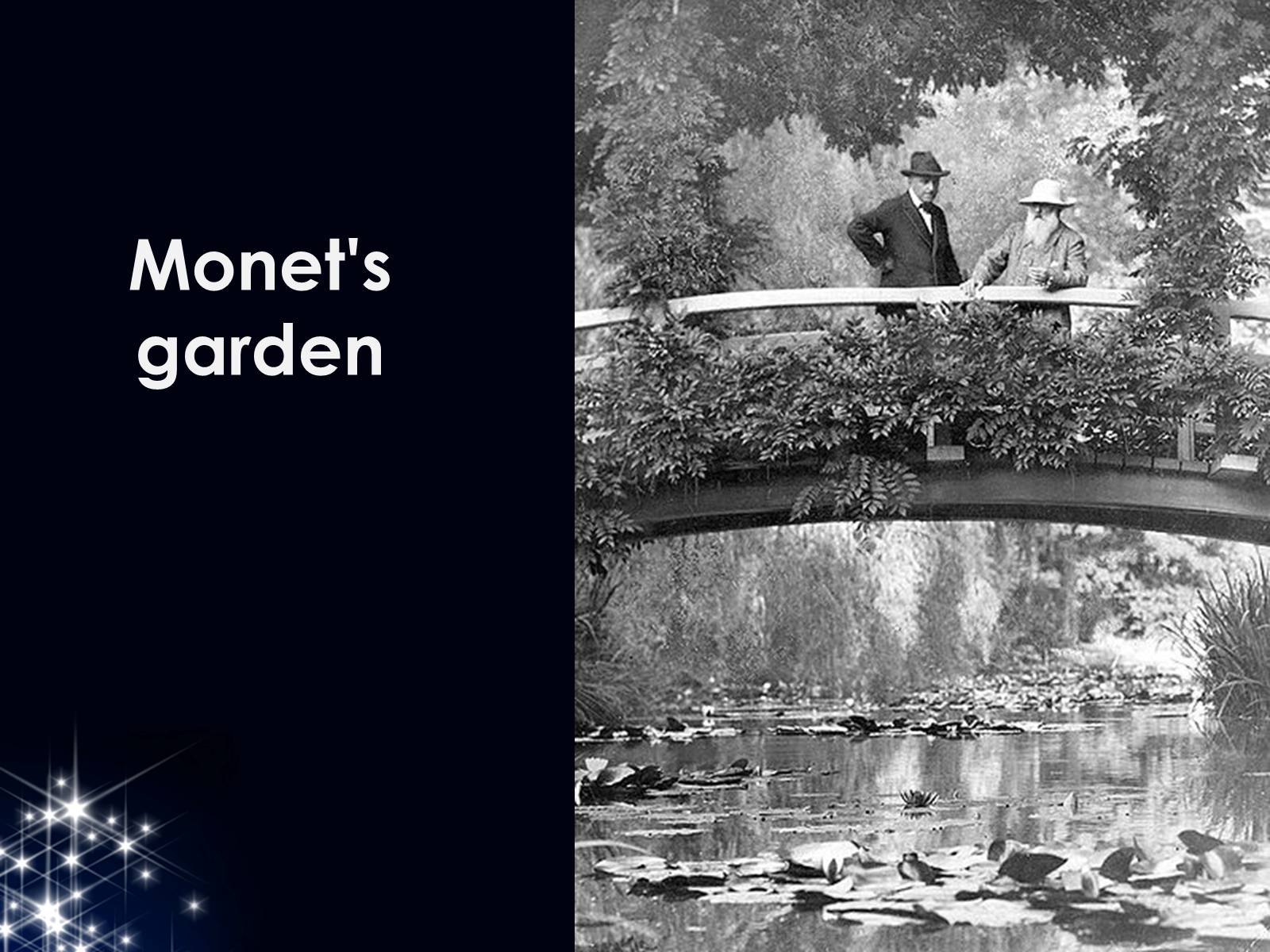
Слайд #30
In the Garden, 1895
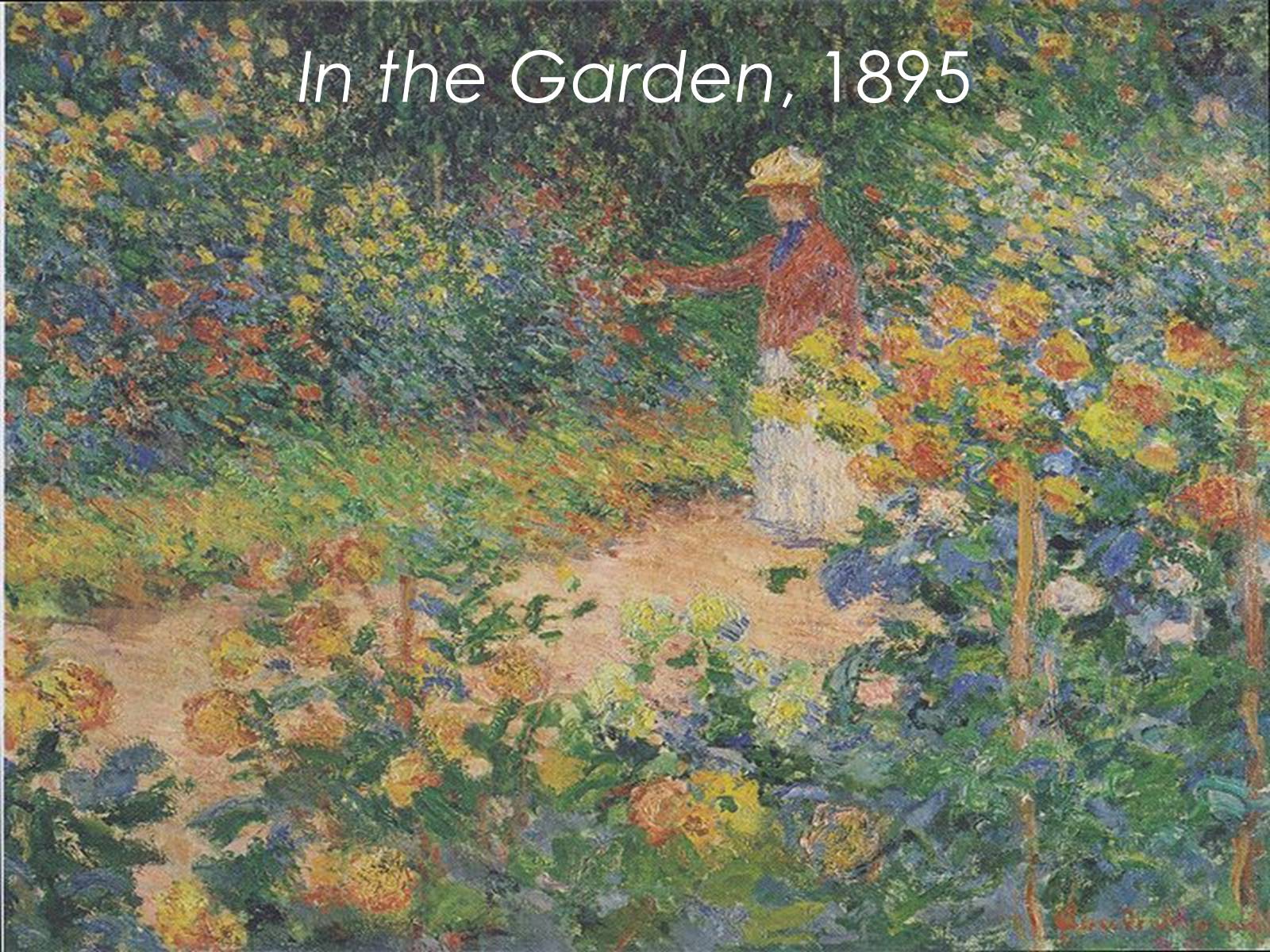
Слайд #31
Agapanthus, between 1914-1926
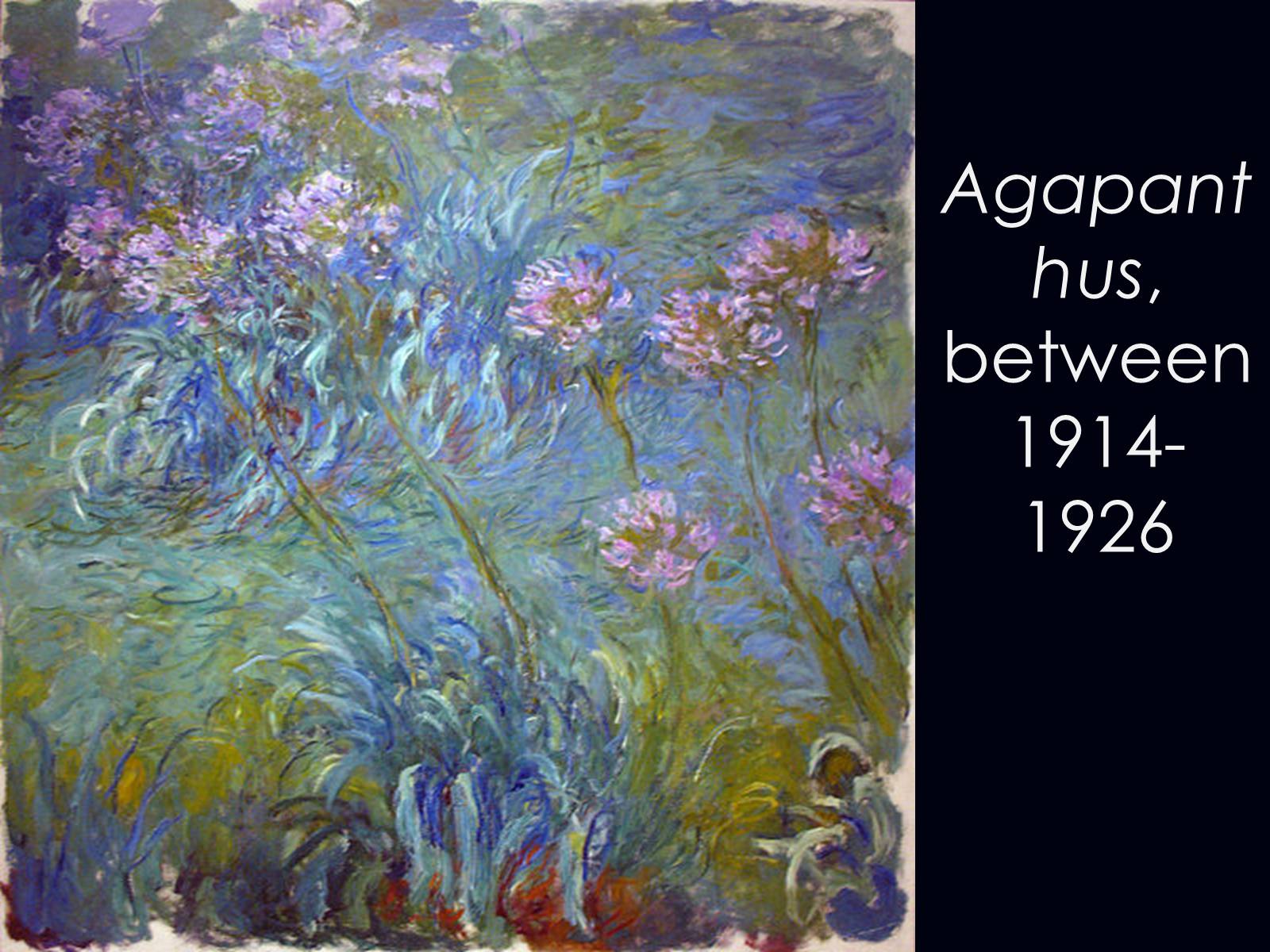
Слайд #32
The rose arches, Giverny, 1913
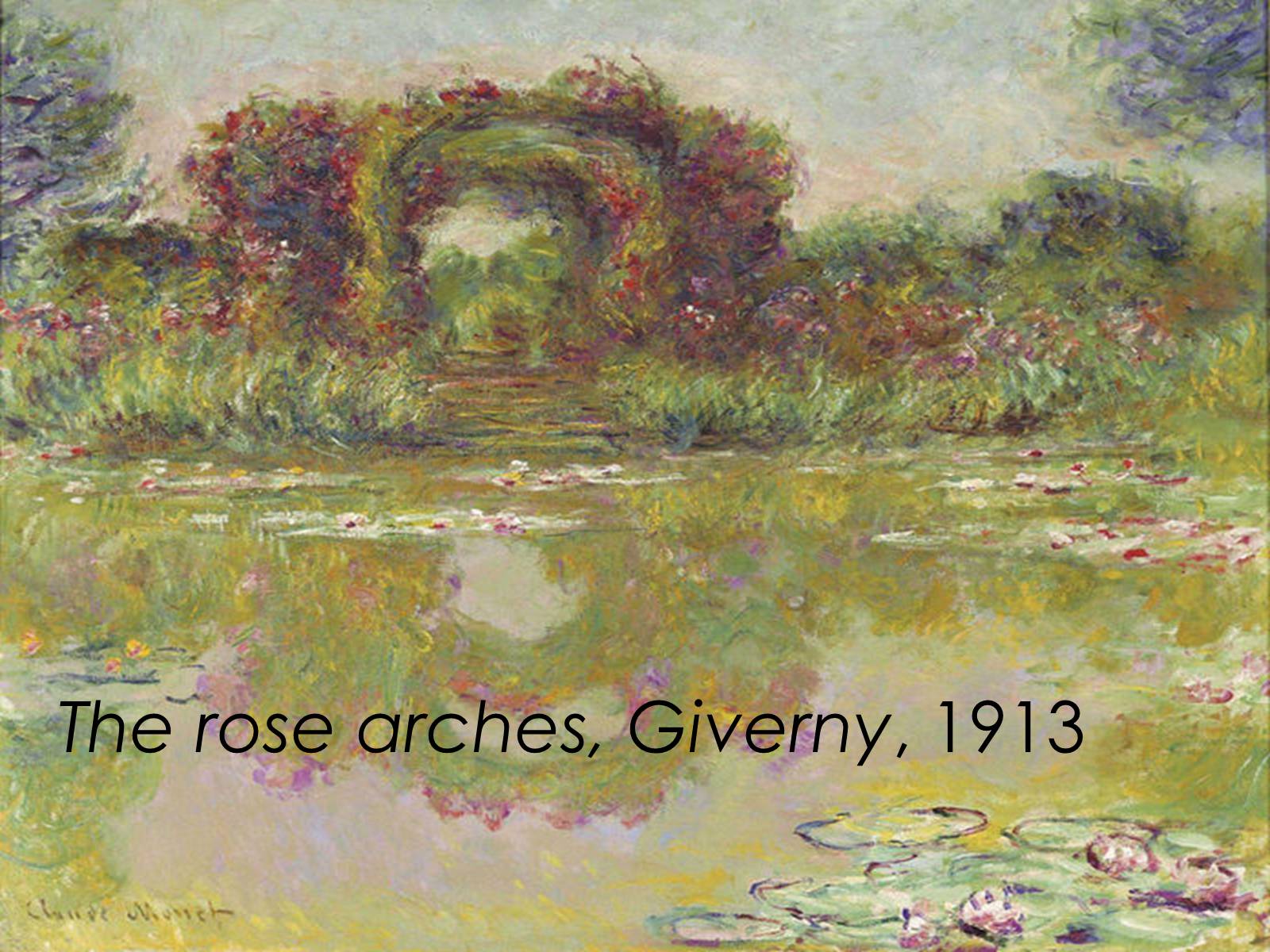
Слайд #33
Water Lilies and the Japanese bridge
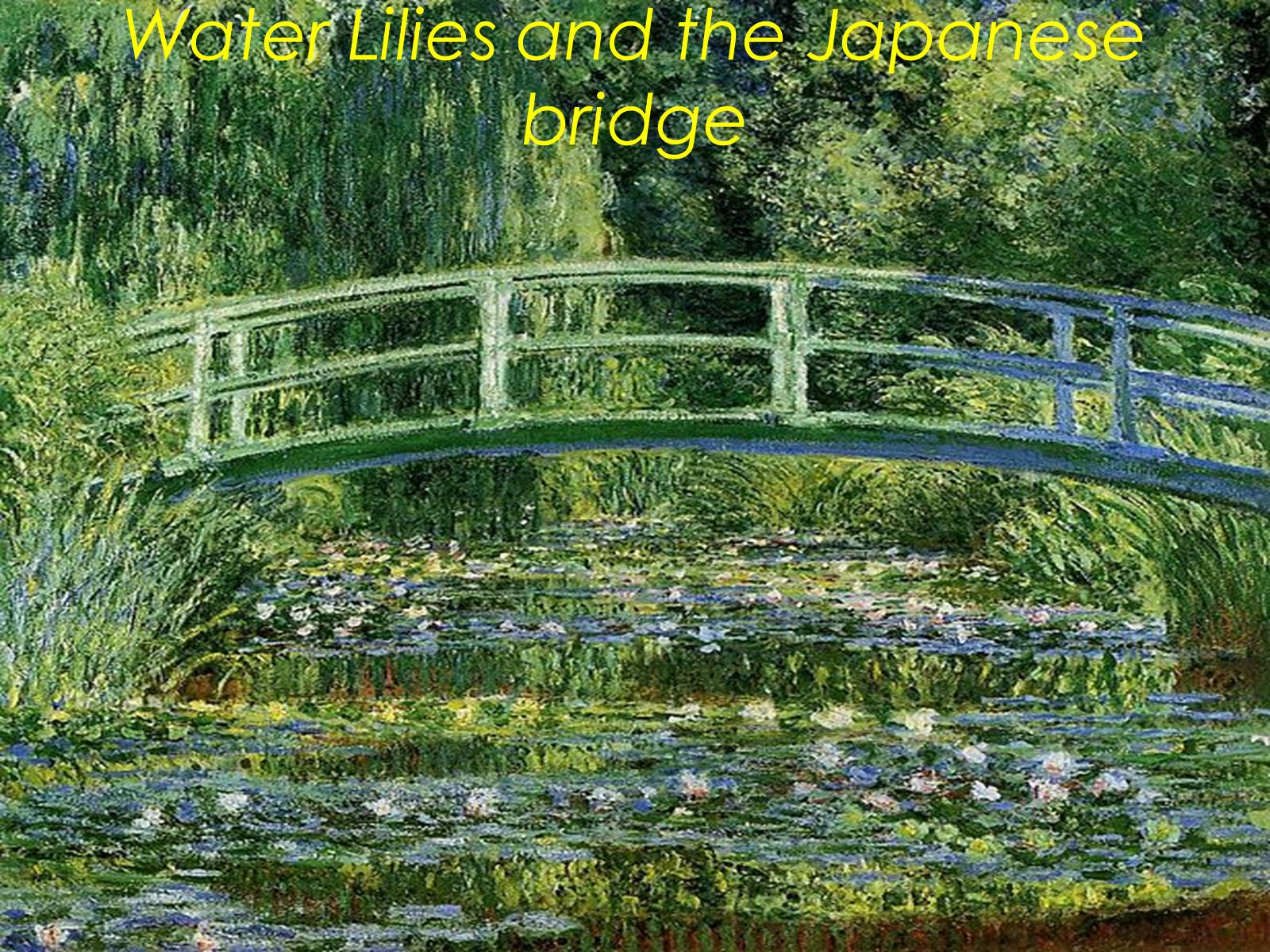
Слайд #34
Water Lilies, 1906
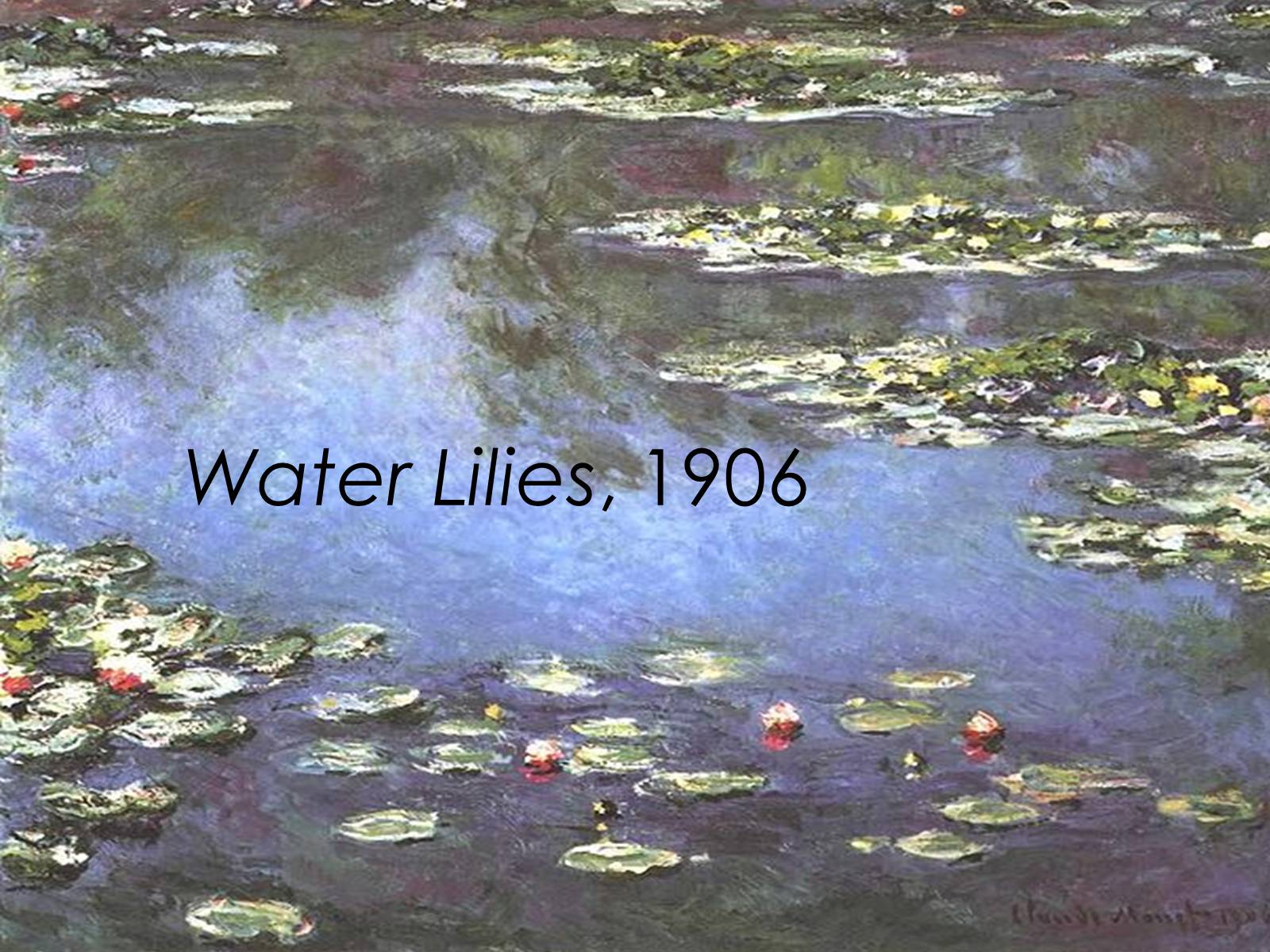
Слайд #35
Water Lilies
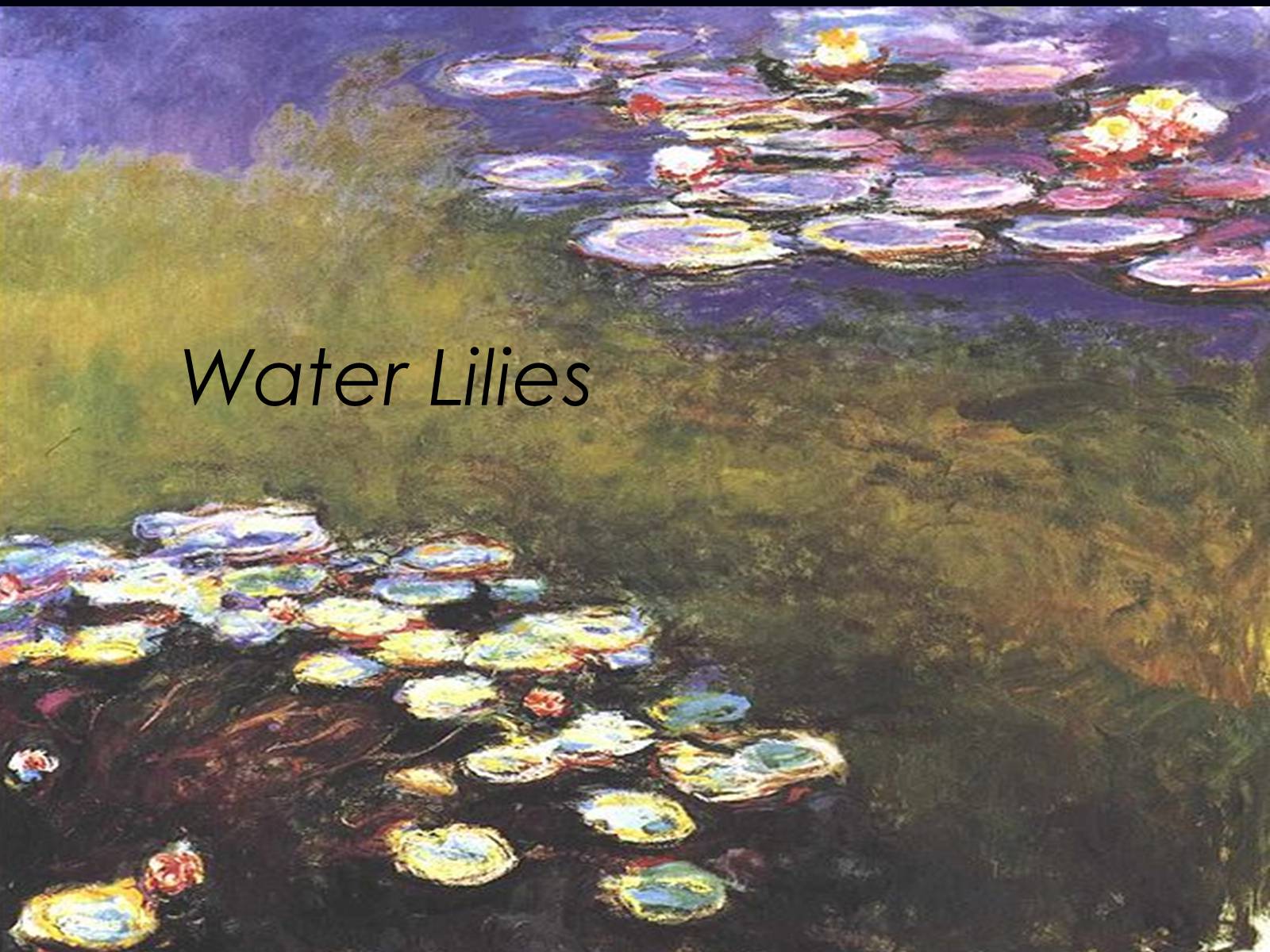
Слайд #36
Water Lilies
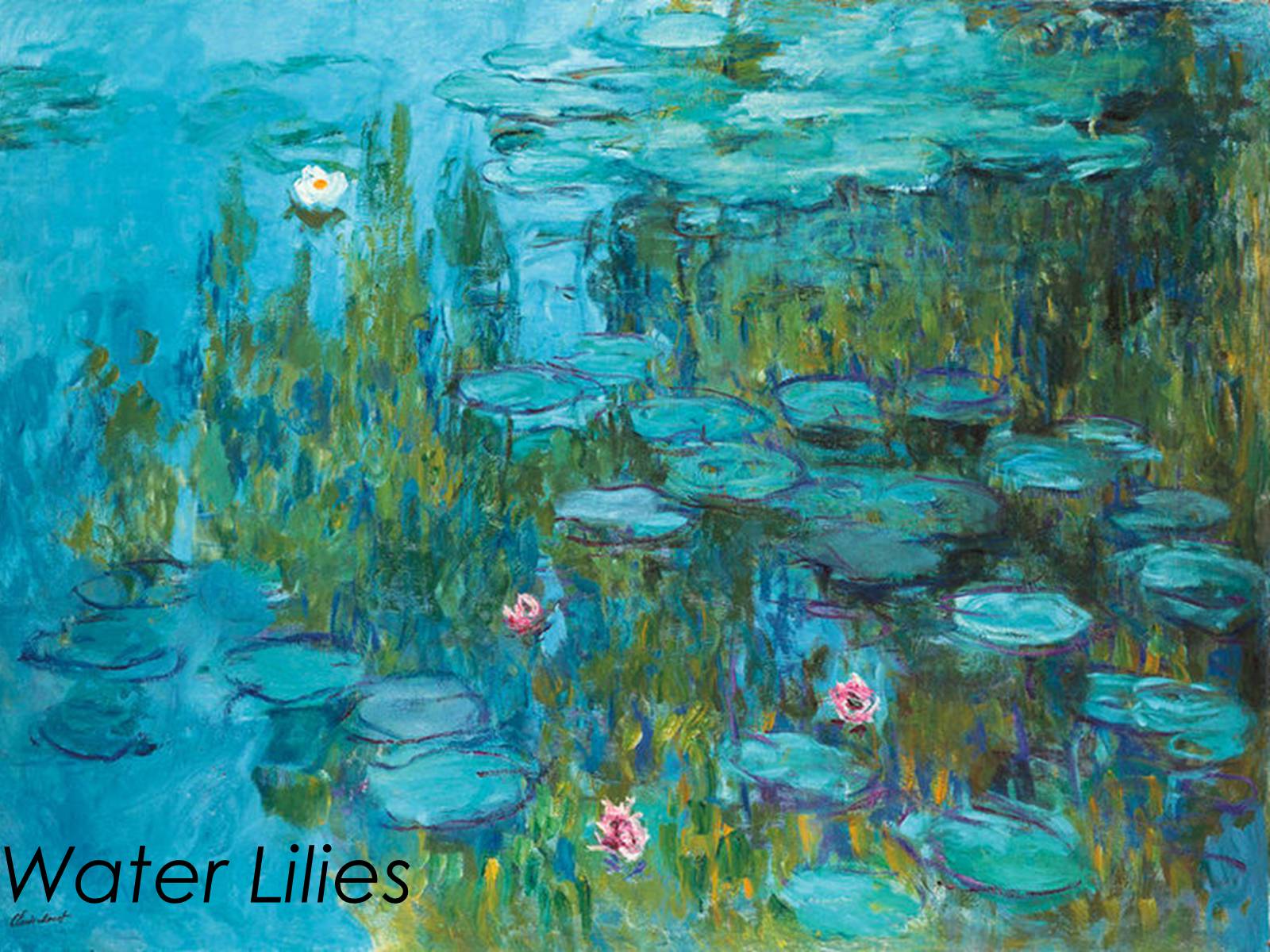
Слайд #37
Water Lilies
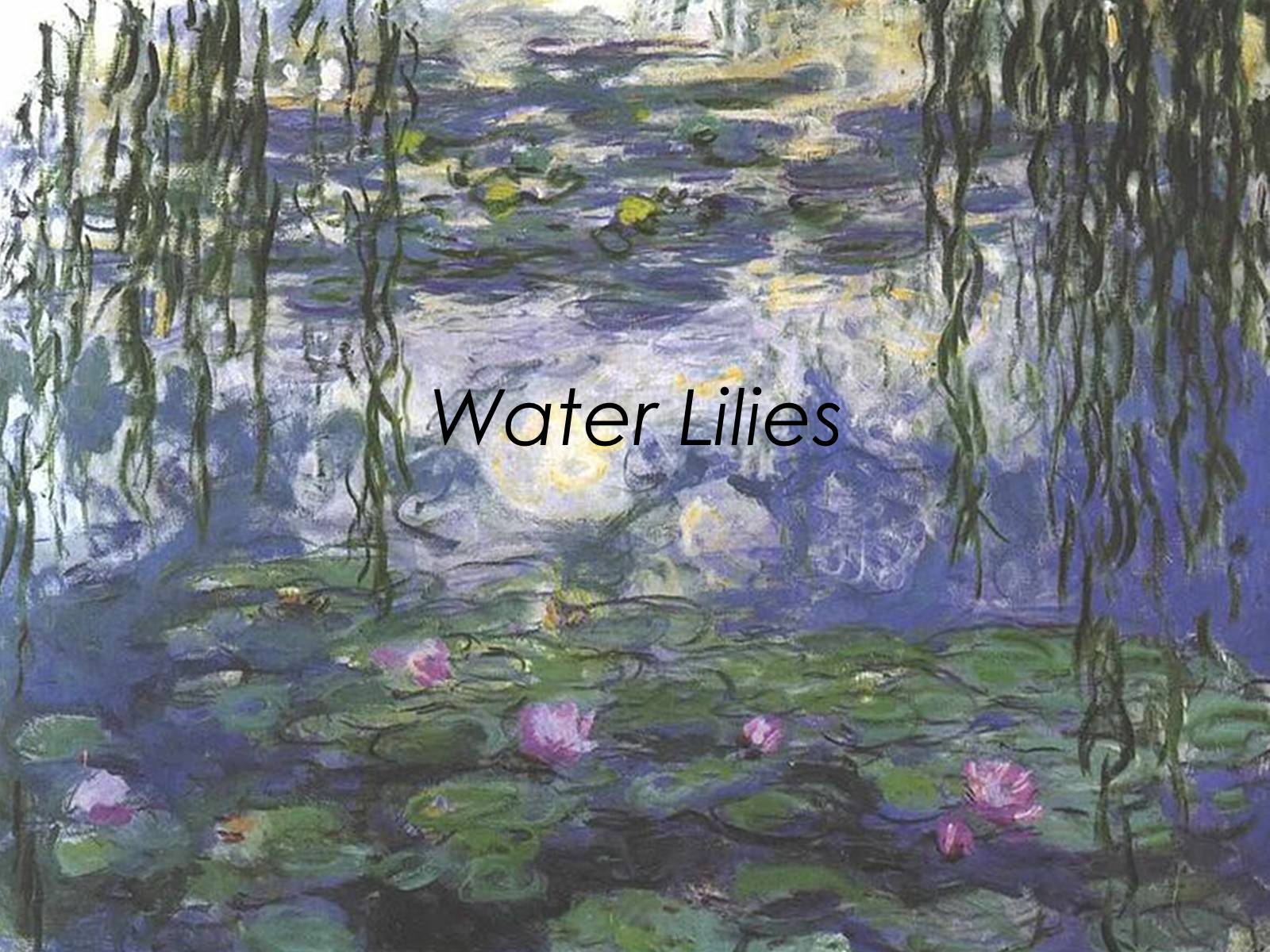
Слайд #38
Death
Monet died of lung cancer on 5 December 1926 at the age of 86 and is buried in the Giverny church cemetery. Monet had insisted that the occasion be simple; thus only about fifty people attended the ceremony.
His home, garden, and waterlily pond were bequeathed by his son Michel, his only heir, to the French Academy of Fine Arts (part of the Institut de France) in 1966. Through the Fondation Claude Monet, the house and gardens were opened for visits in 1980, following restoration. In addition to souvenirs of Monet and other objects of his life, the house contains his collection of Japanese woodcut prints. The house and garden, along with the Museum of Impressionism Giverny, are major attractions in Giverny, which hosts tourists from all over the world.
Monet died of lung cancer on 5 December 1926 at the age of 86 and is buried in the Giverny church cemetery. Monet had insisted that the occasion be simple; thus only about fifty people attended the ceremony.
His home, garden, and waterlily pond were bequeathed by his son Michel, his only heir, to the French Academy of Fine Arts (part of the Institut de France) in 1966. Through the Fondation Claude Monet, the house and gardens were opened for visits in 1980, following restoration. In addition to souvenirs of Monet and other objects of his life, the house contains his collection of Japanese woodcut prints. The house and garden, along with the Museum of Impressionism Giverny, are major attractions in Giverny, which hosts tourists from all over the world.
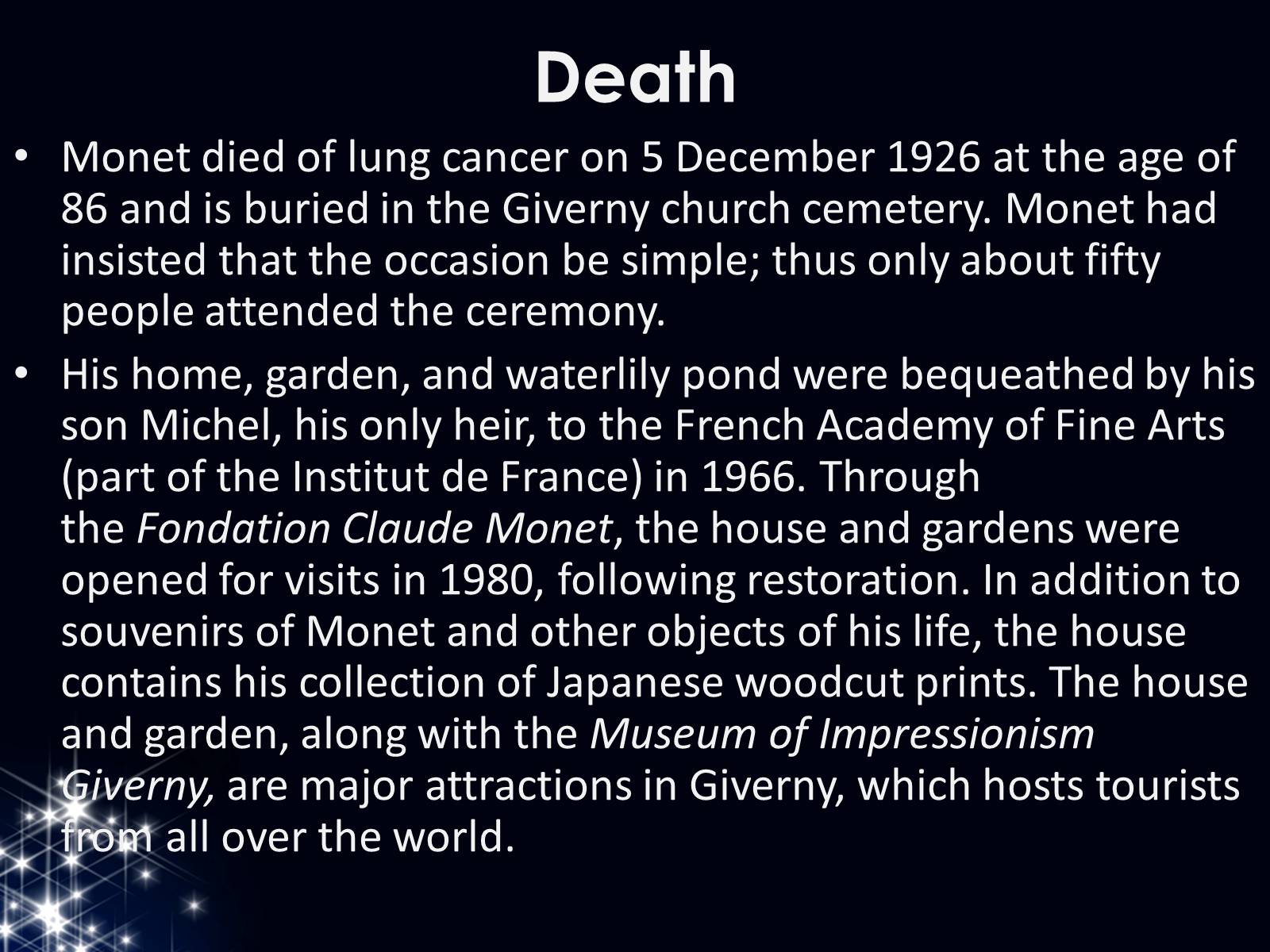
Слайд #39
Monet's late paintings
Water Lilies and Reflections of a Willow
Water Lilies and Reflections of a Willow
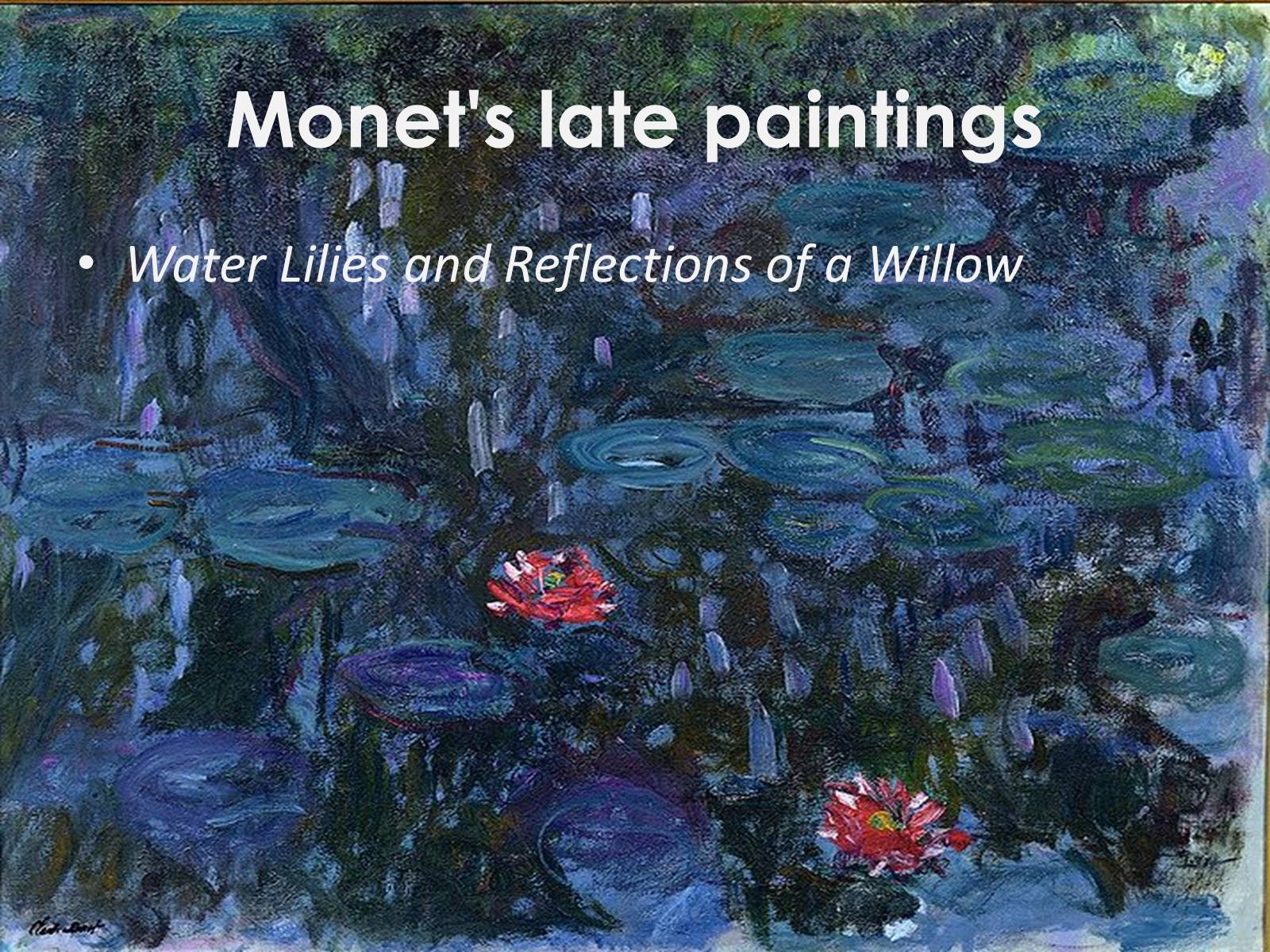
Слайд #40
Water-Lily Pond and Weeping Willow
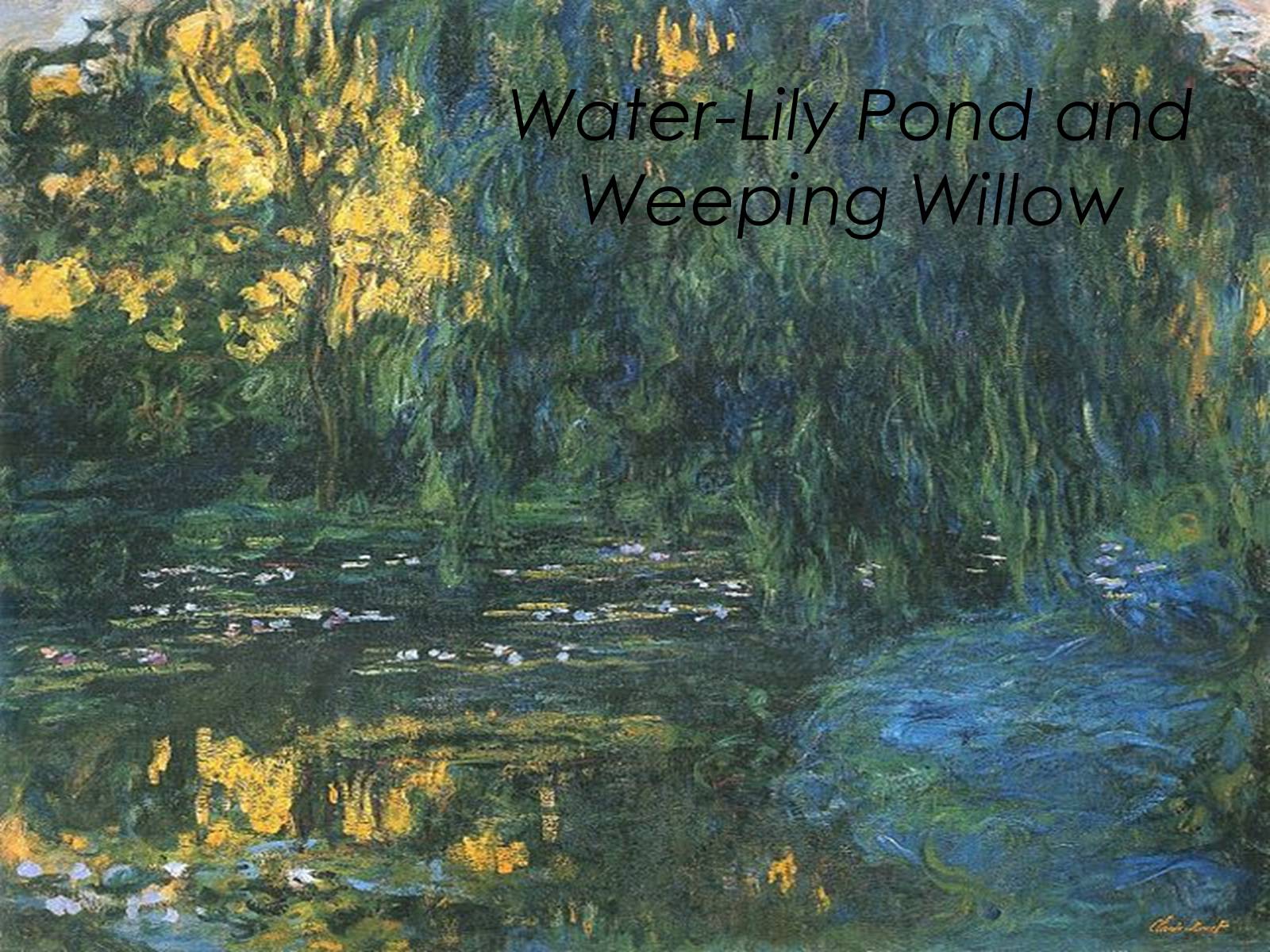
Слайд #41
Weeping Willow, 1918–1919
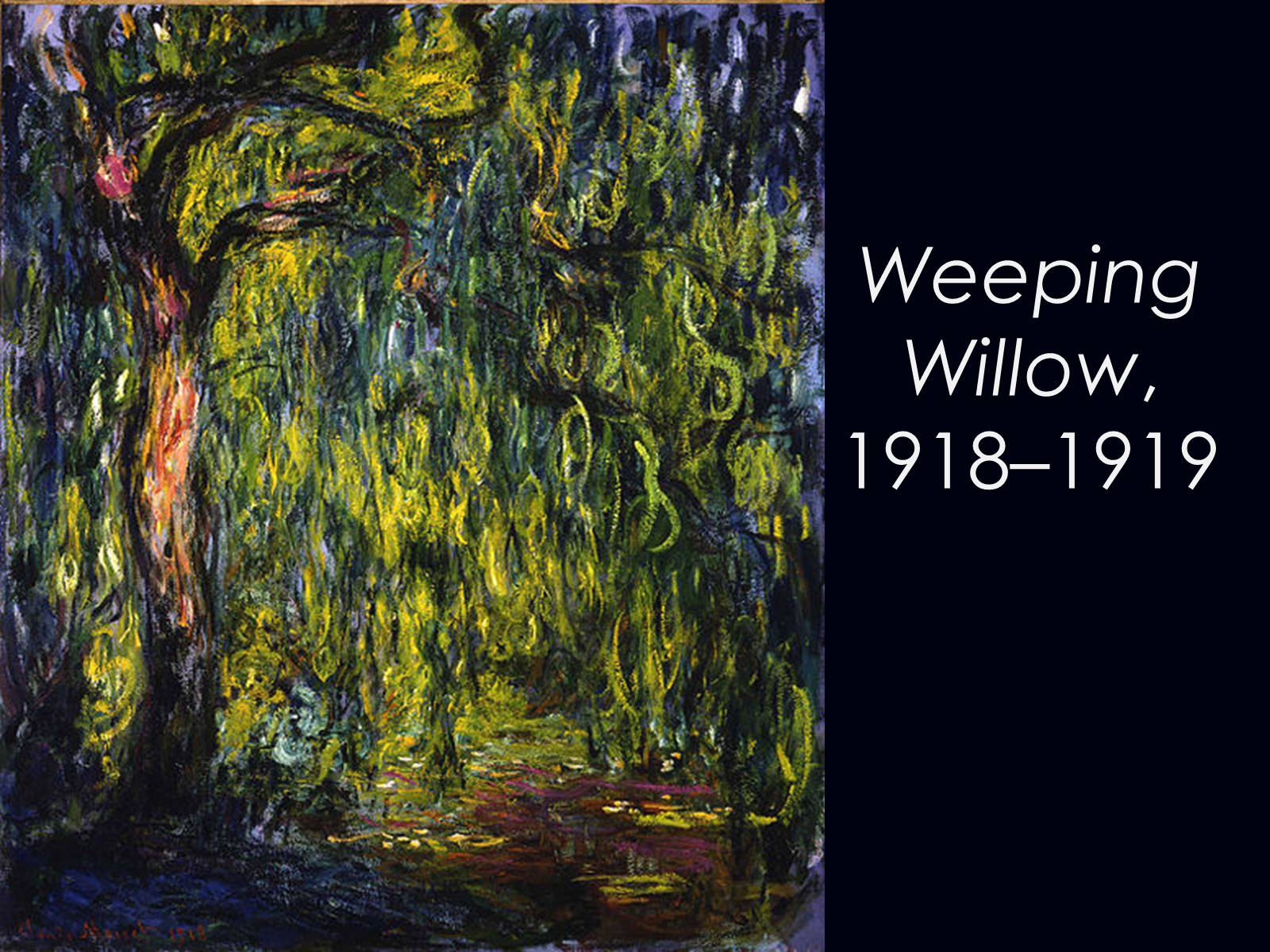
Слайд #42
Weeping Willow, 1918–1919
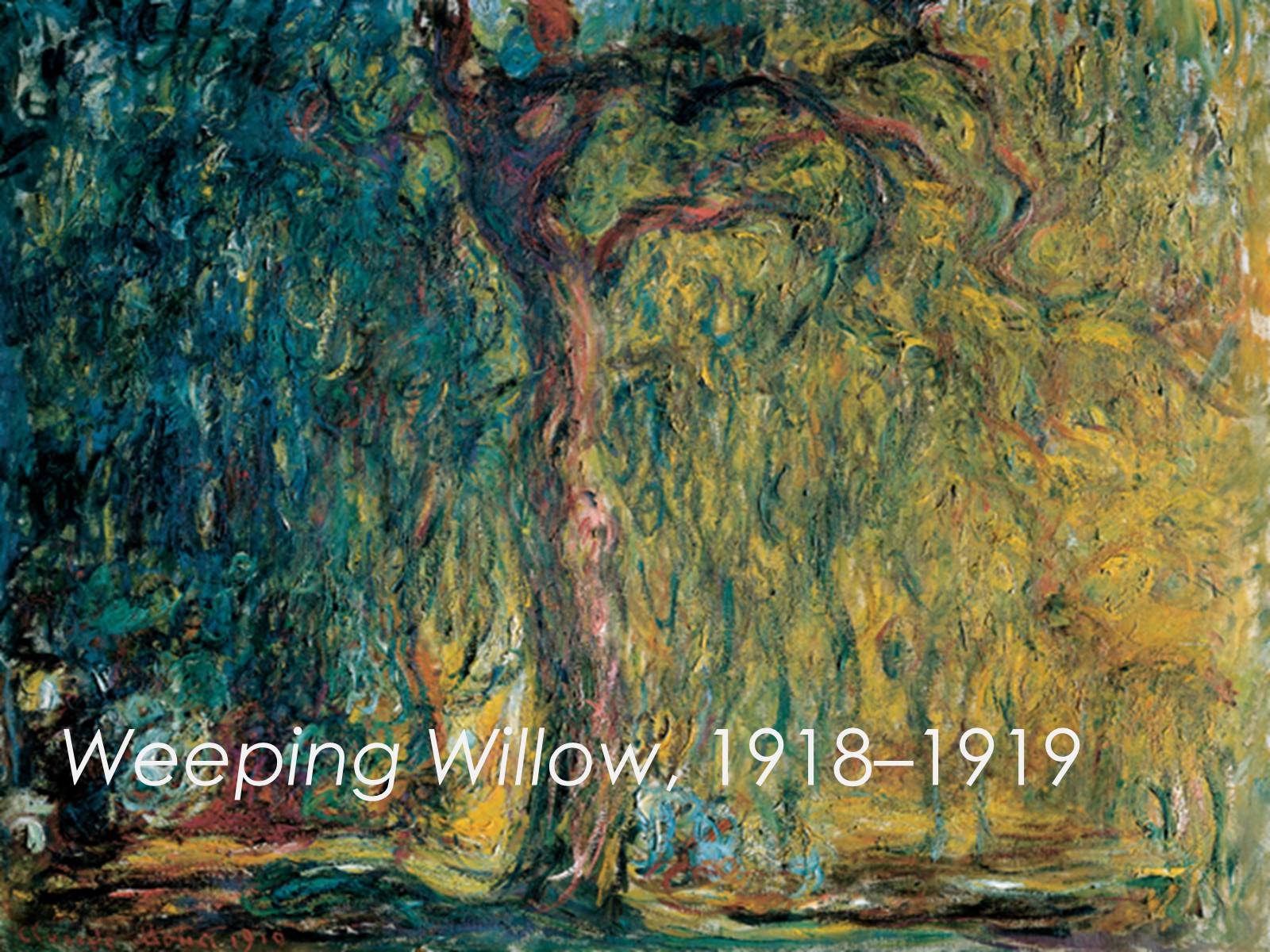
Слайд #43
House Among the Roses
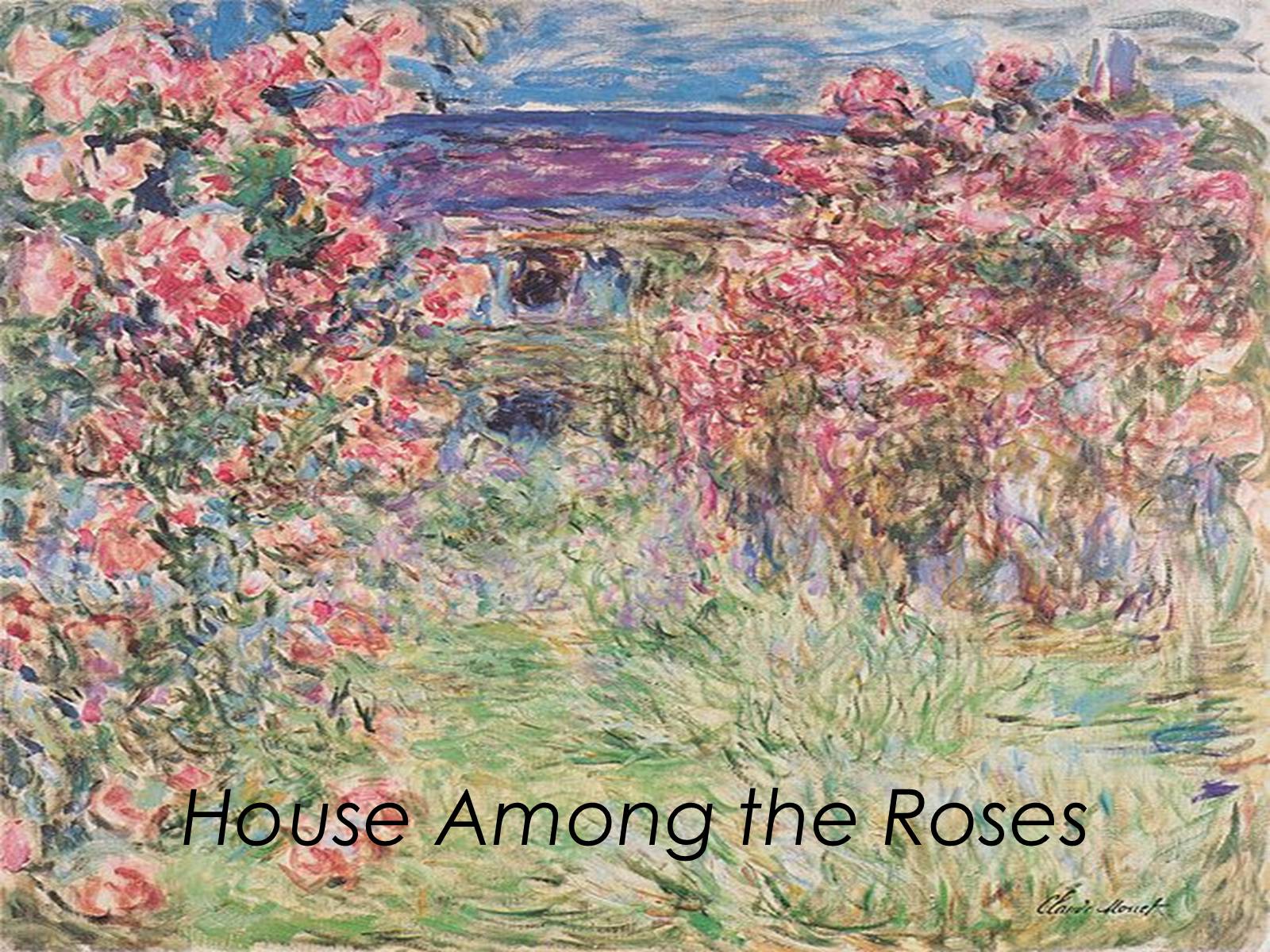
Слайд #44
The Rose Walk, Giverny
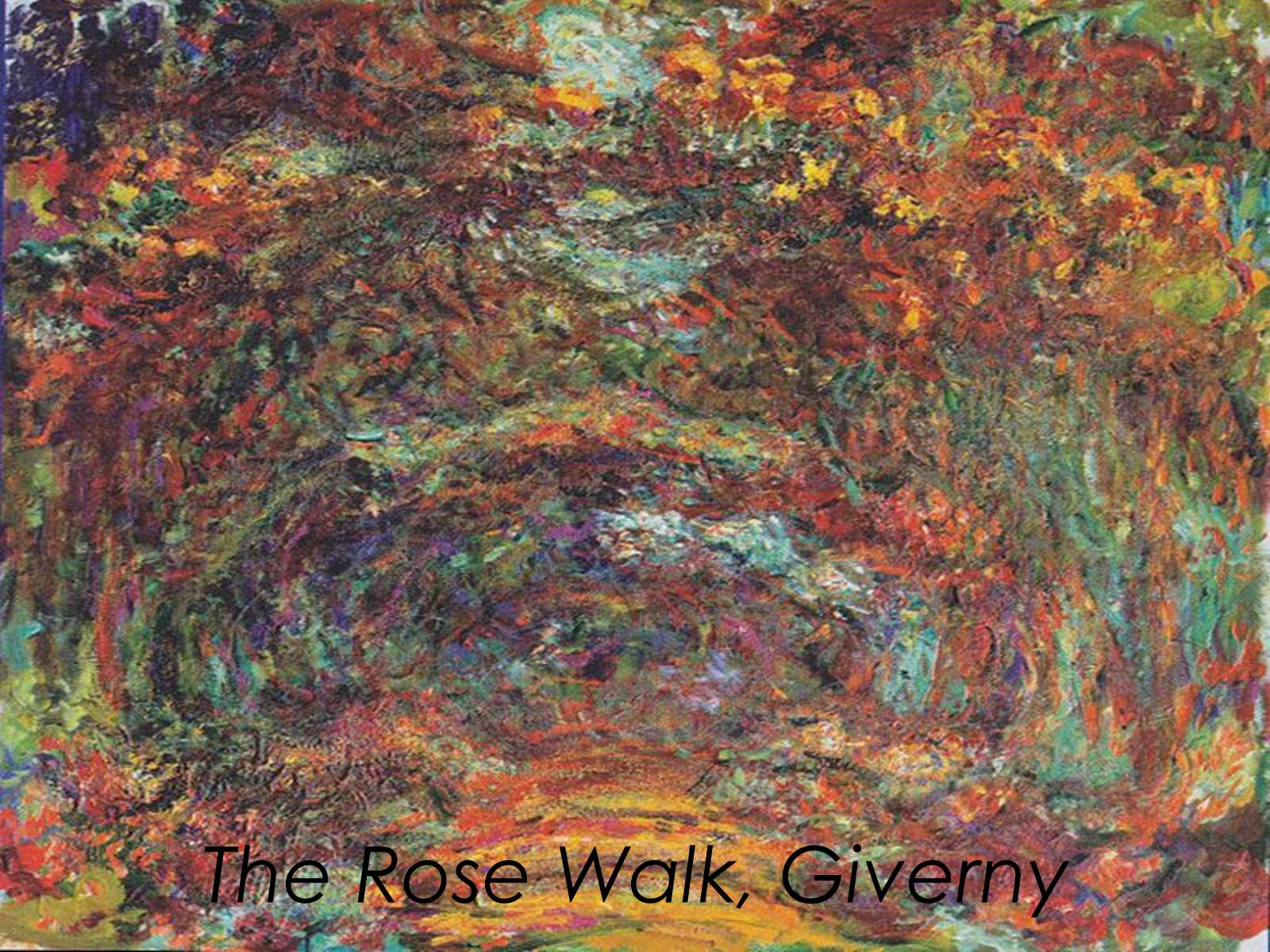
Слайд #45
The Japanese Footbridge
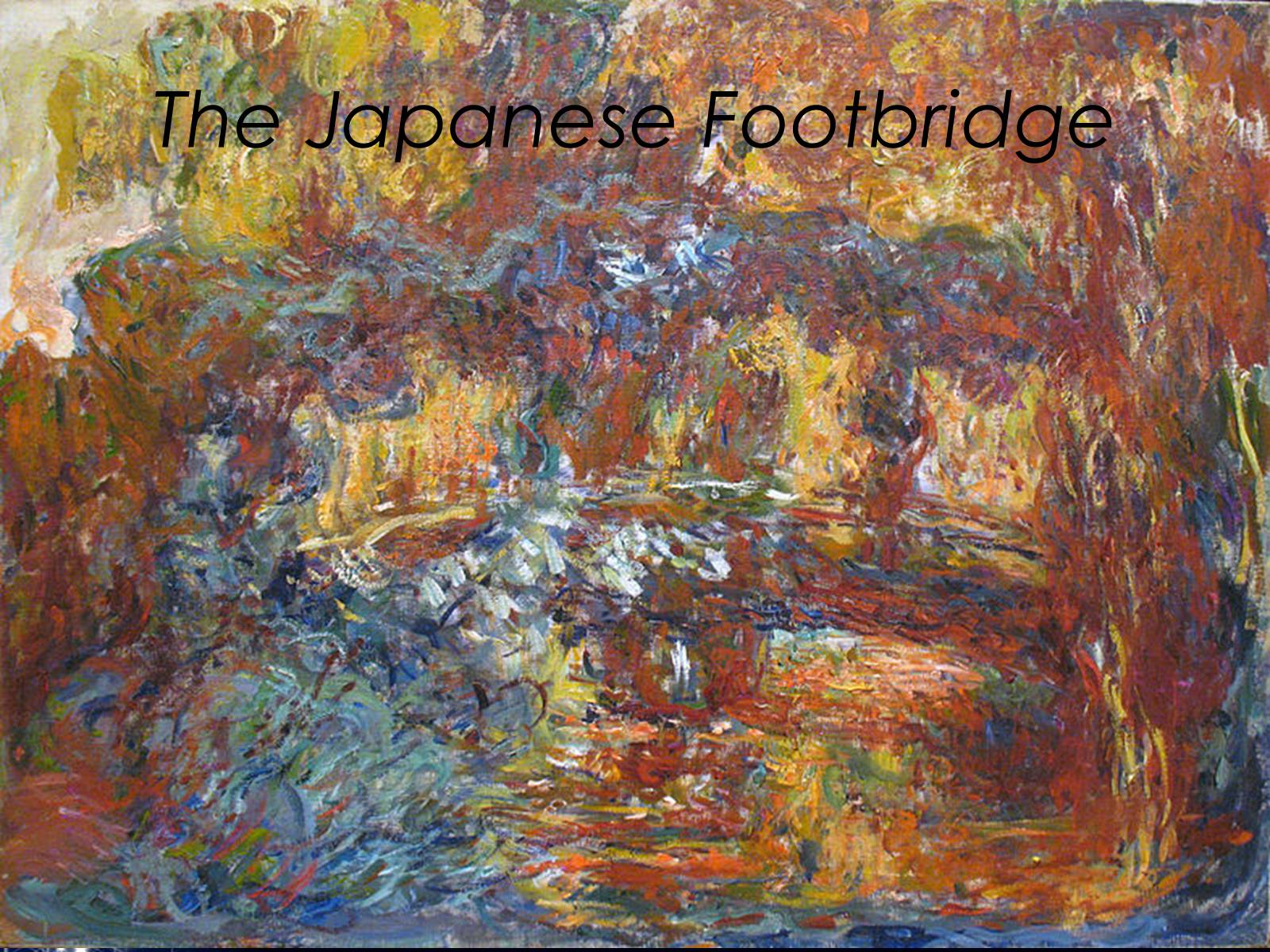
Слайд #46
The Garden at Giverny
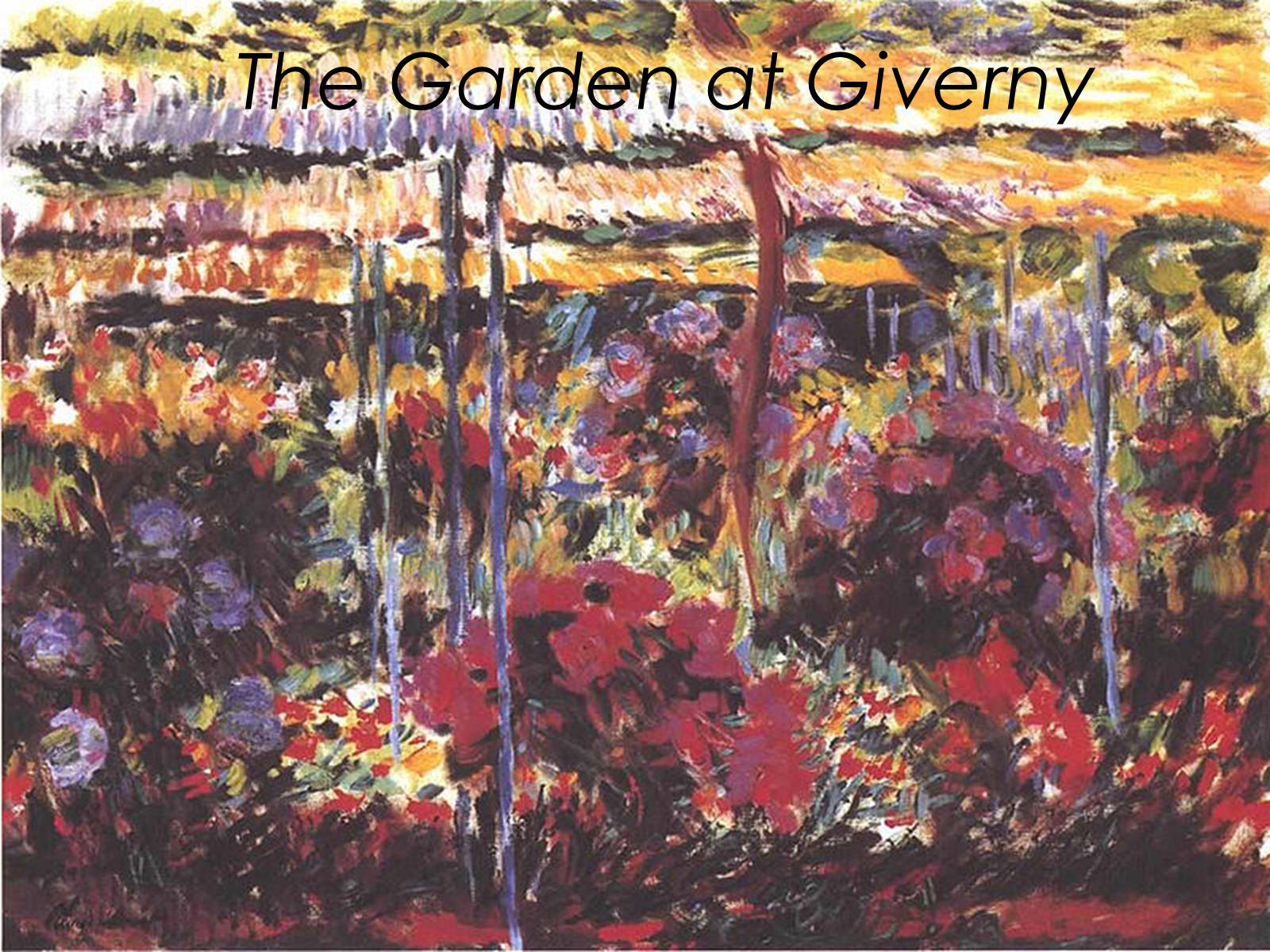
Слайд #47
Monet's methods
In 1877 a series of paintings at St-Lazare Station had Monet looking at smoke and steam and the way that they affected colour and visibility, being sometimes opaque and sometimes translucent. He was to further use this study in the painting of the effects of mist and rain on the landscape.The study of the effects of atmosphere were to evolve into a number of series of paintings in which Monet repeatedly painted the same subject in different lights, at different hours of the day, and through the changes of weather and season. This process began in the 1880s and continued until the end of his life in 1926.
Helen Gardner writes:
"Monet, with a scientific precision, has given us an unparalleled and unexcelled record of the passing of time as seen in the movement of light over identical forms."
In 1877 a series of paintings at St-Lazare Station had Monet looking at smoke and steam and the way that they affected colour and visibility, being sometimes opaque and sometimes translucent. He was to further use this study in the painting of the effects of mist and rain on the landscape.The study of the effects of atmosphere were to evolve into a number of series of paintings in which Monet repeatedly painted the same subject in different lights, at different hours of the day, and through the changes of weather and season. This process began in the 1880s and continued until the end of his life in 1926.
Helen Gardner writes:
"Monet, with a scientific precision, has given us an unparalleled and unexcelled record of the passing of time as seen in the movement of light over identical forms."
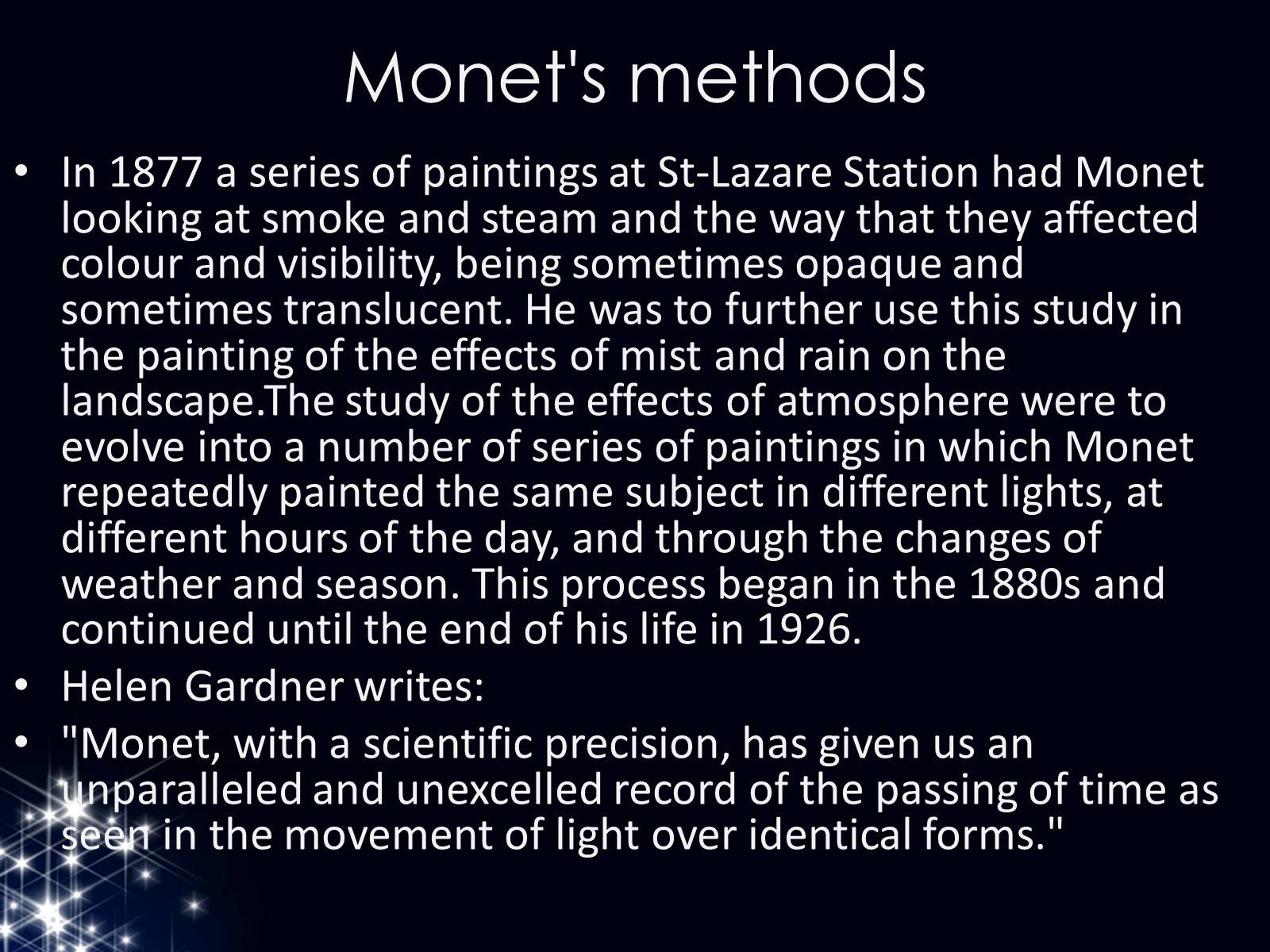
Слайд #48
Series of paintings
La Gare Saint-Lazare, 1877
La Gare Saint-Lazare, 1877
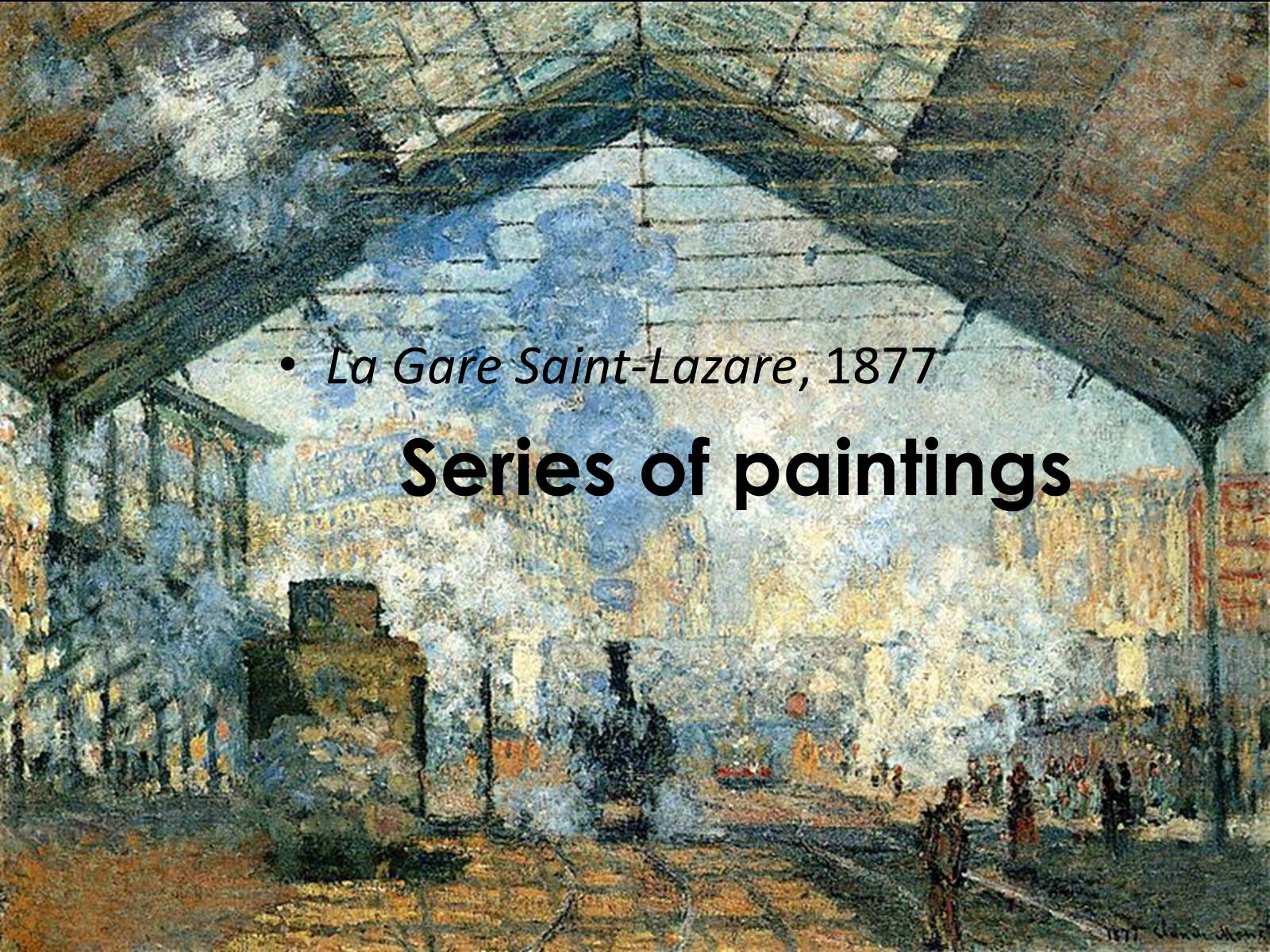
Слайд #49
Arrival of the Normandy Train, Gare Saint-Lazare, 1877

Слайд #50
The Cliffs at Etretat, 1885
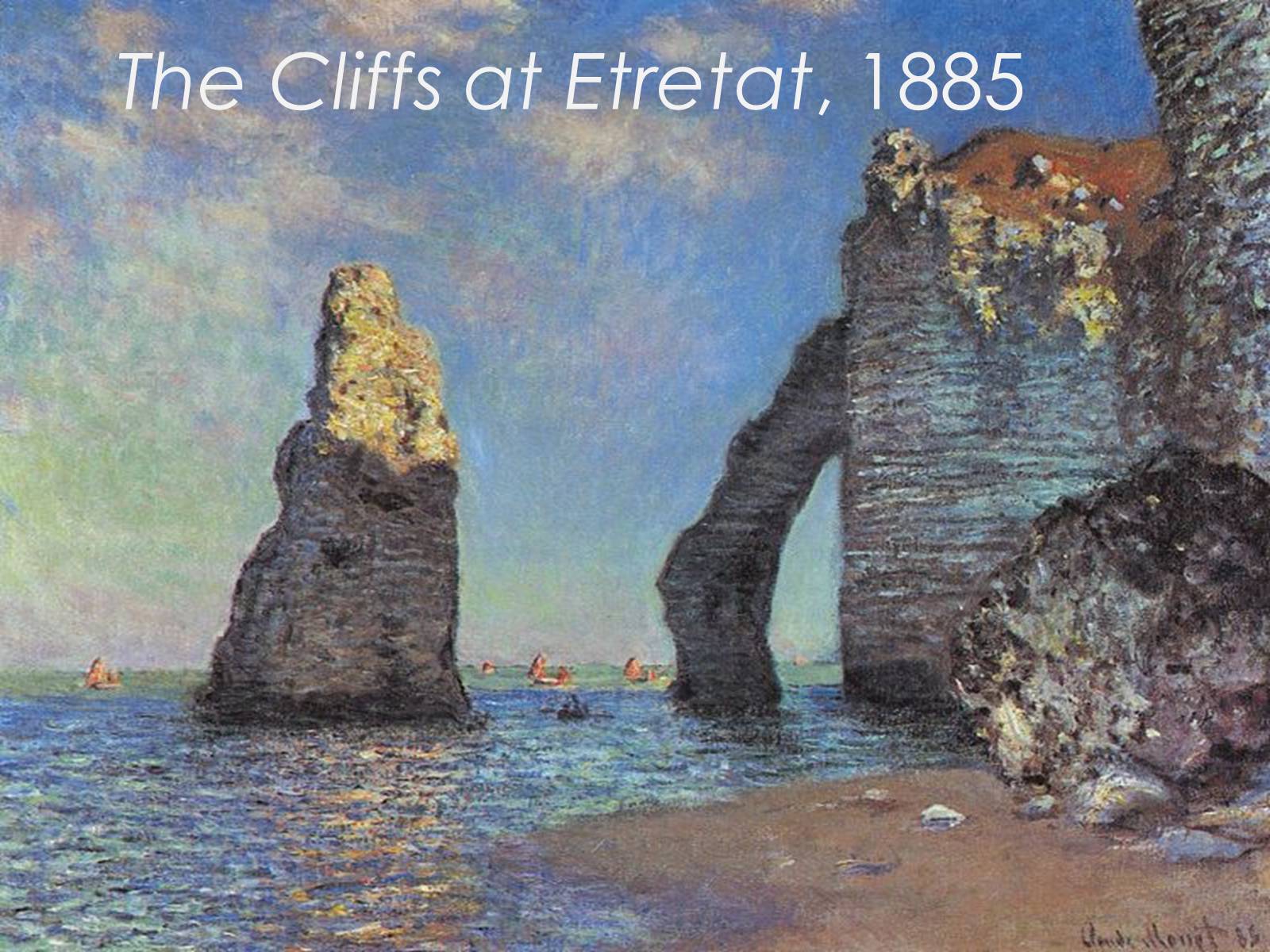
Слайд #51
Sailboats behind the needle at Eretat, 1885
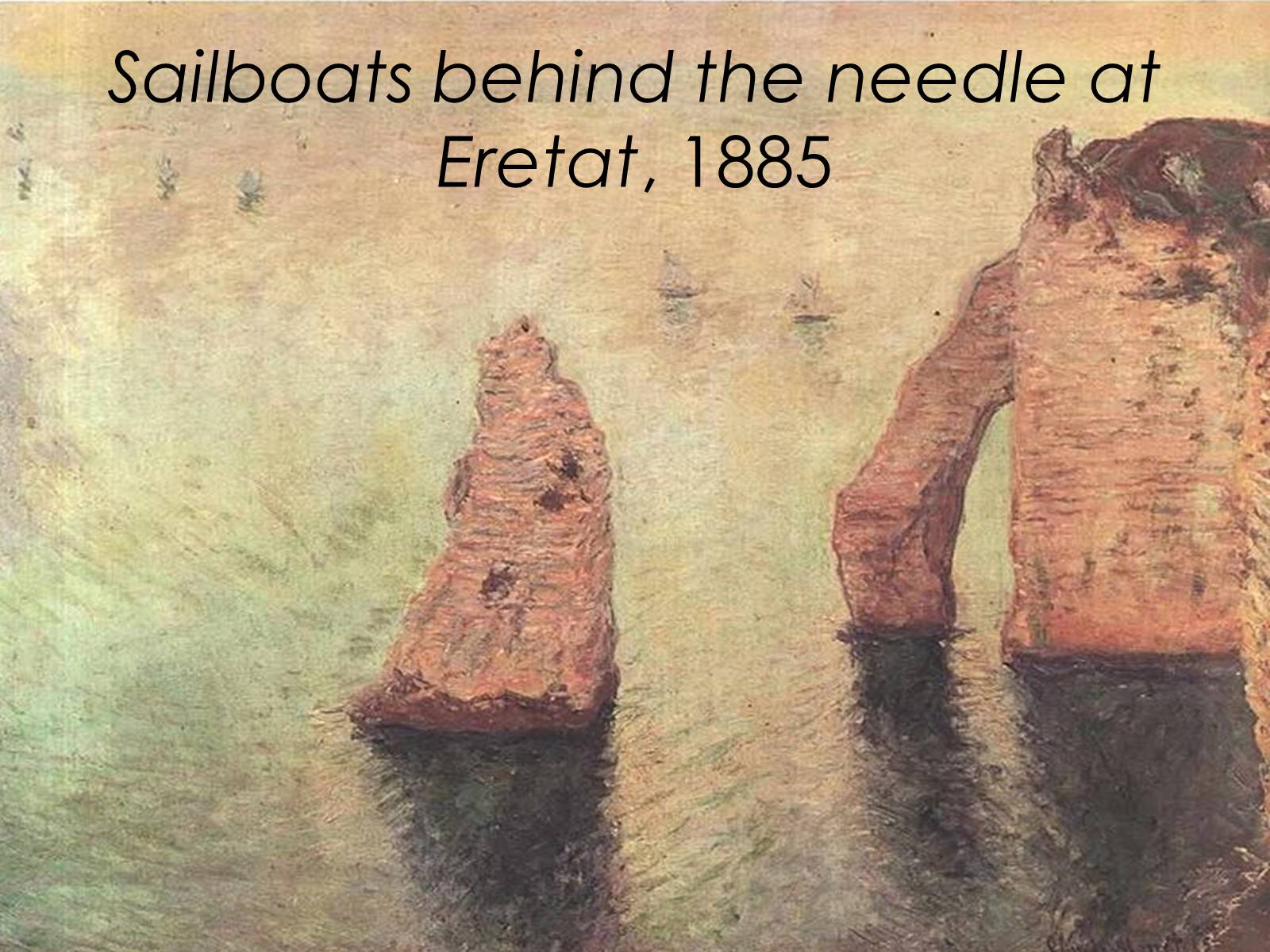
Слайд #52
Two paintings from a series of grainstacks

Слайд #53
Grainstacks, end of day, Autumn
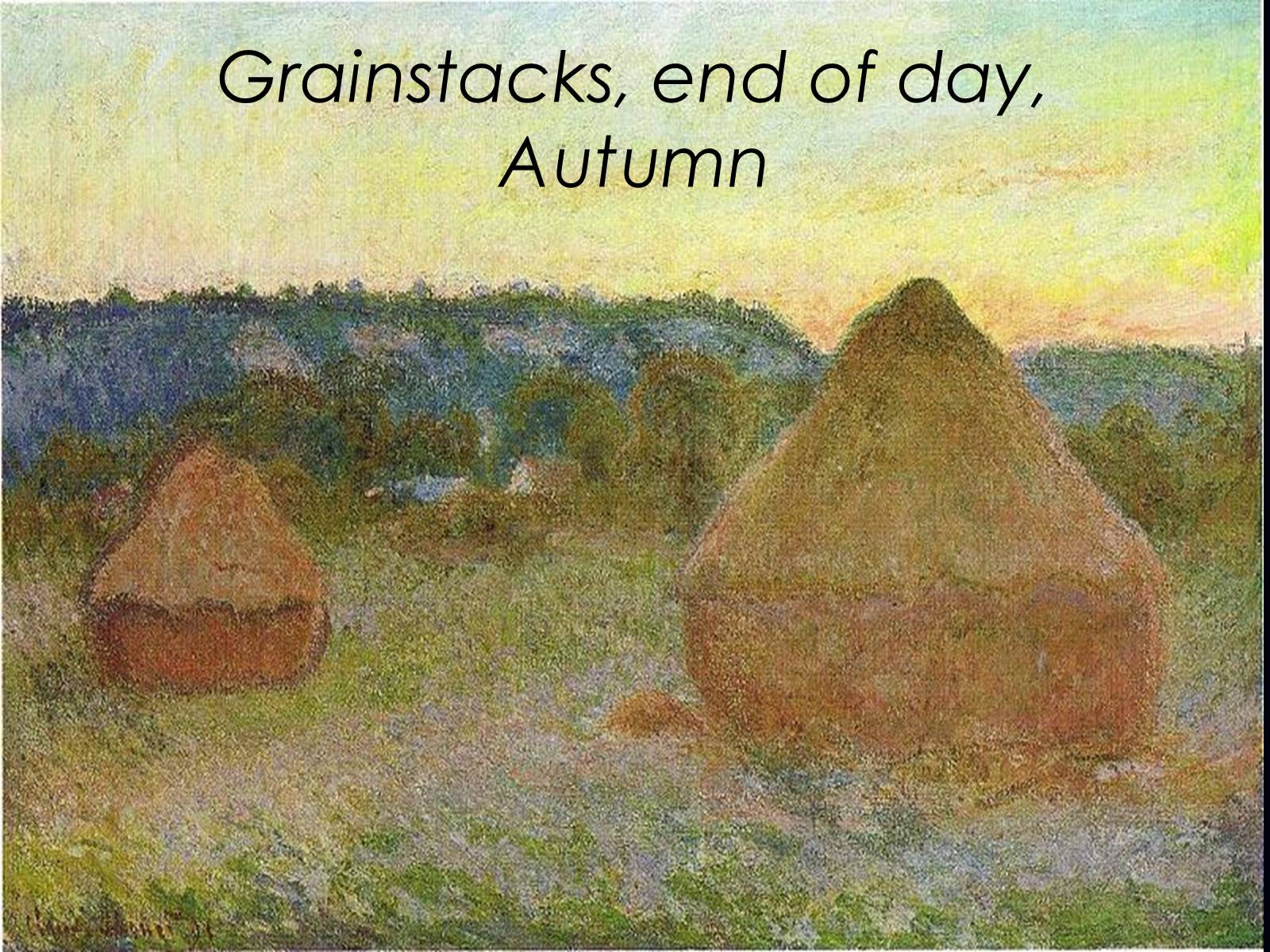
Слайд #54
Poplars (Autumn)
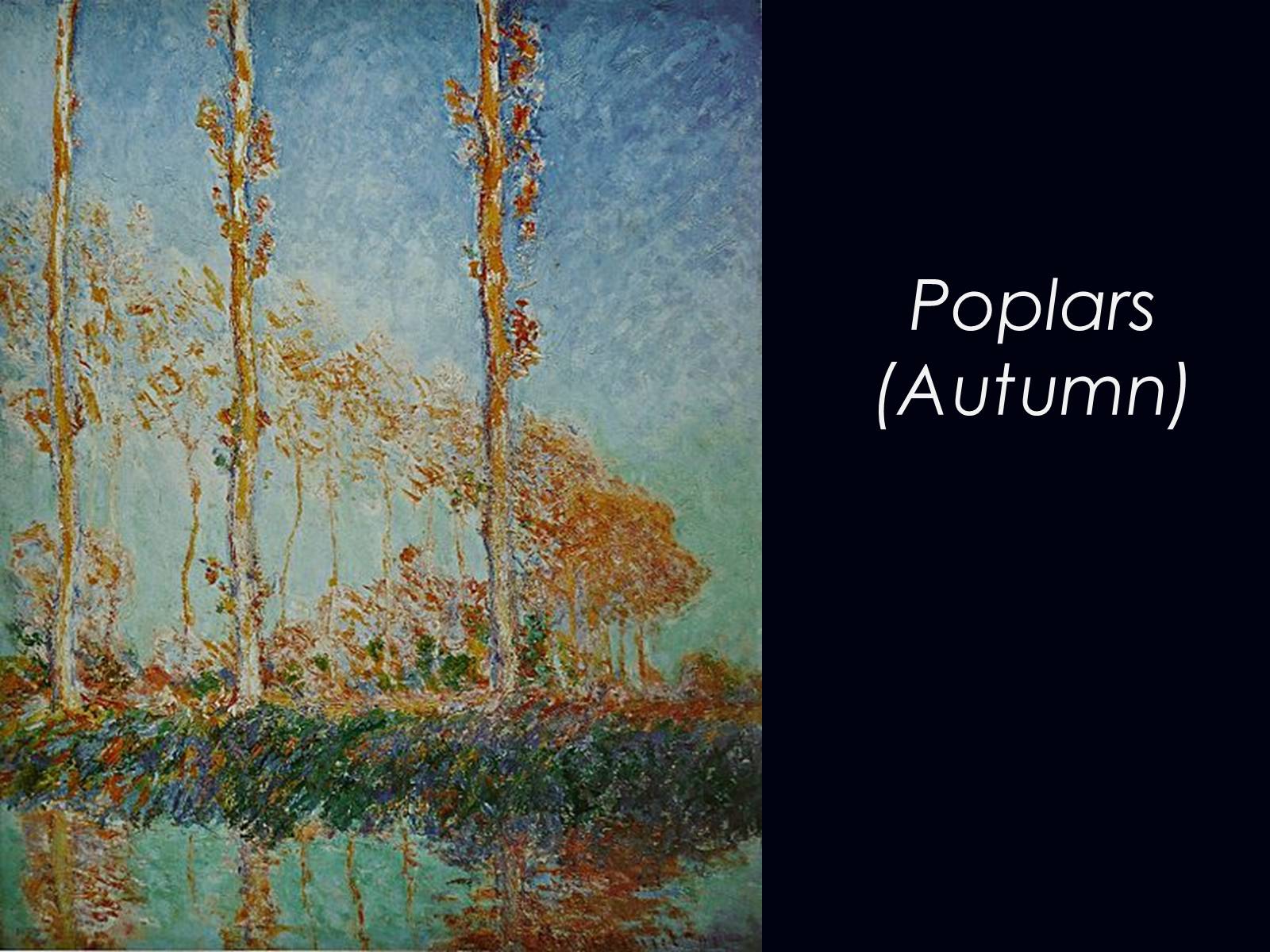
Слайд #55
Poplars at the River Epte

Слайд #56
The Seine Near Giverny
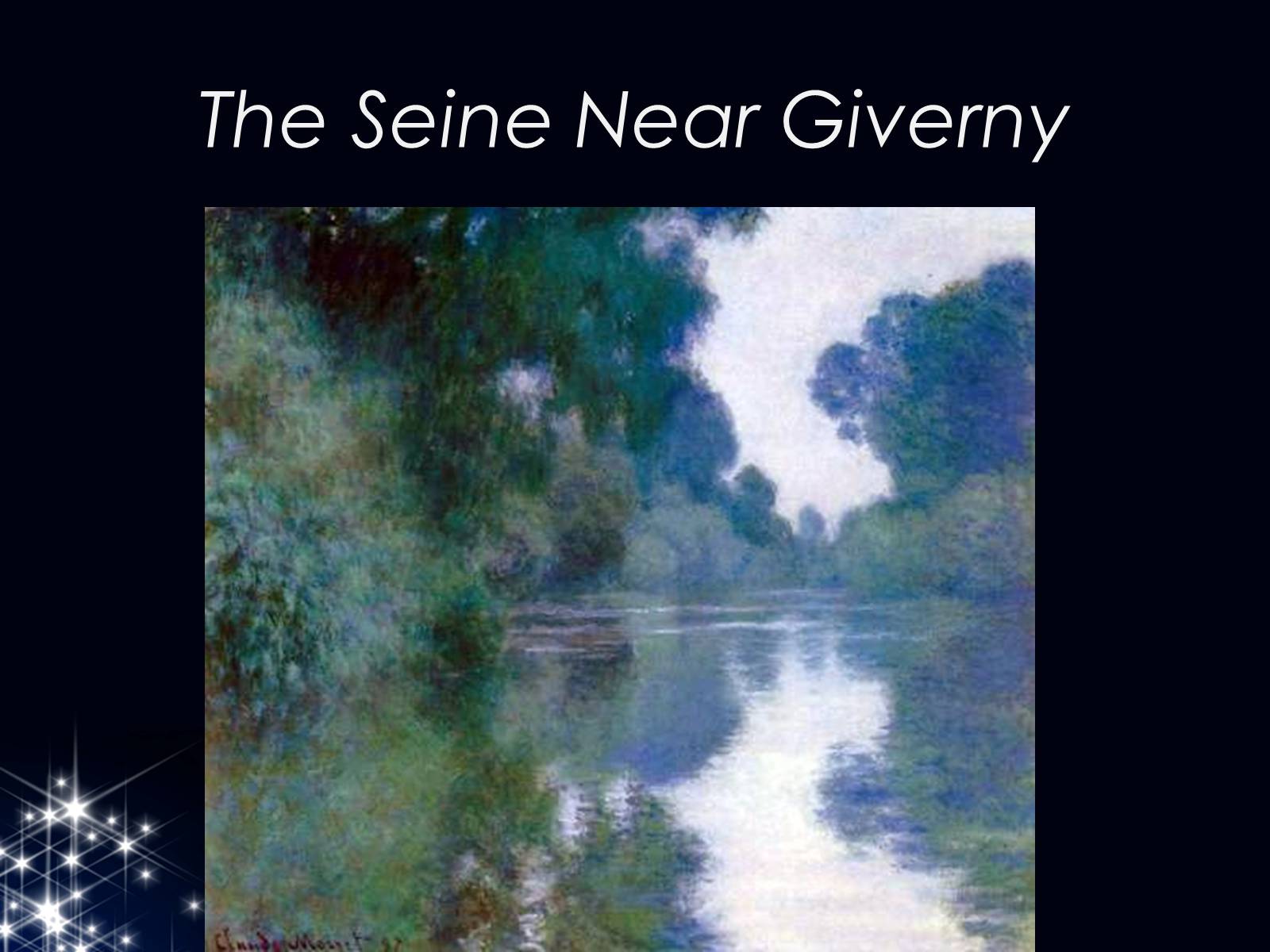
Слайд #57
Morning on the Seine, 1898
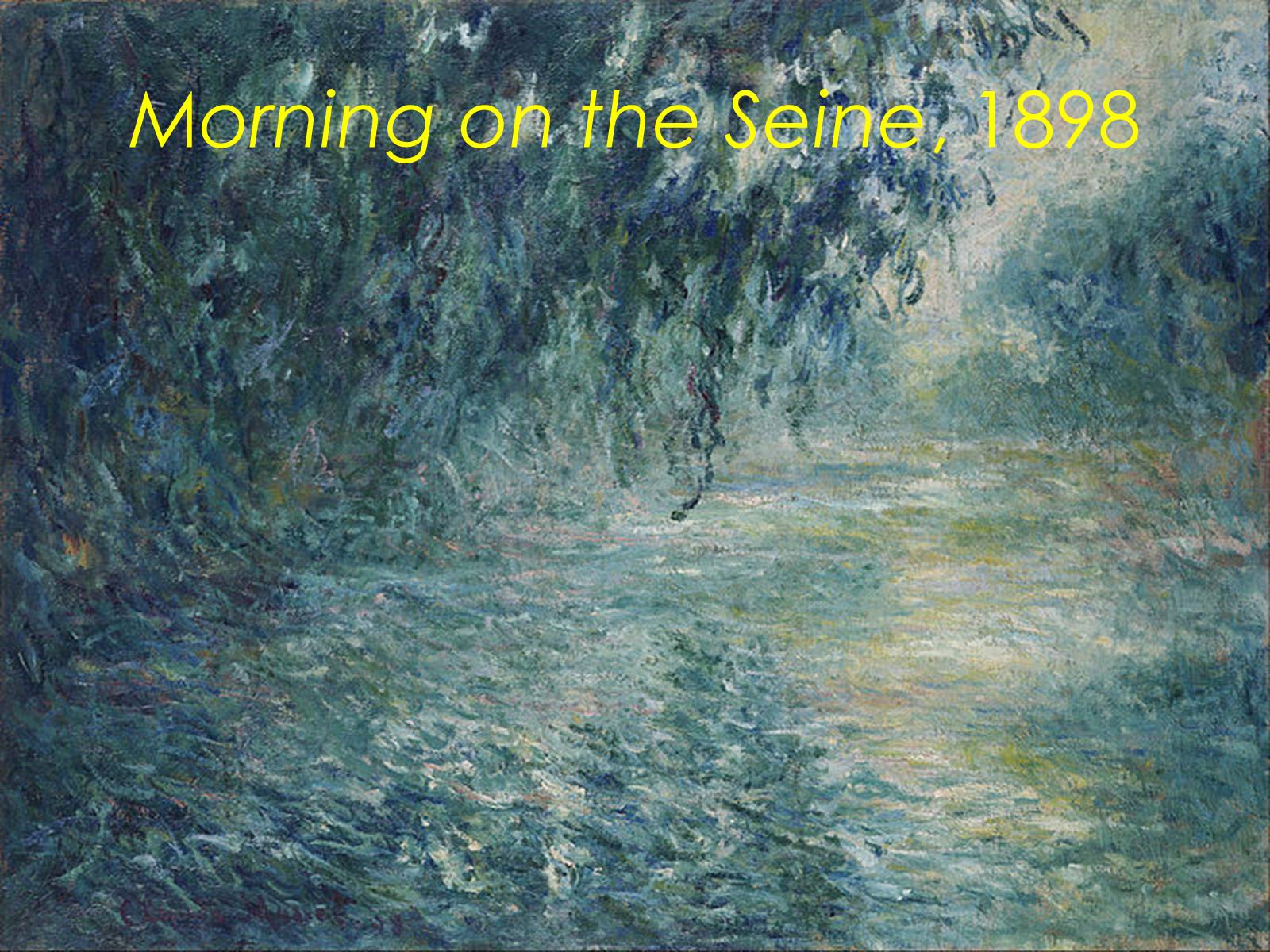
Слайд #58
Charing Cross Bridge
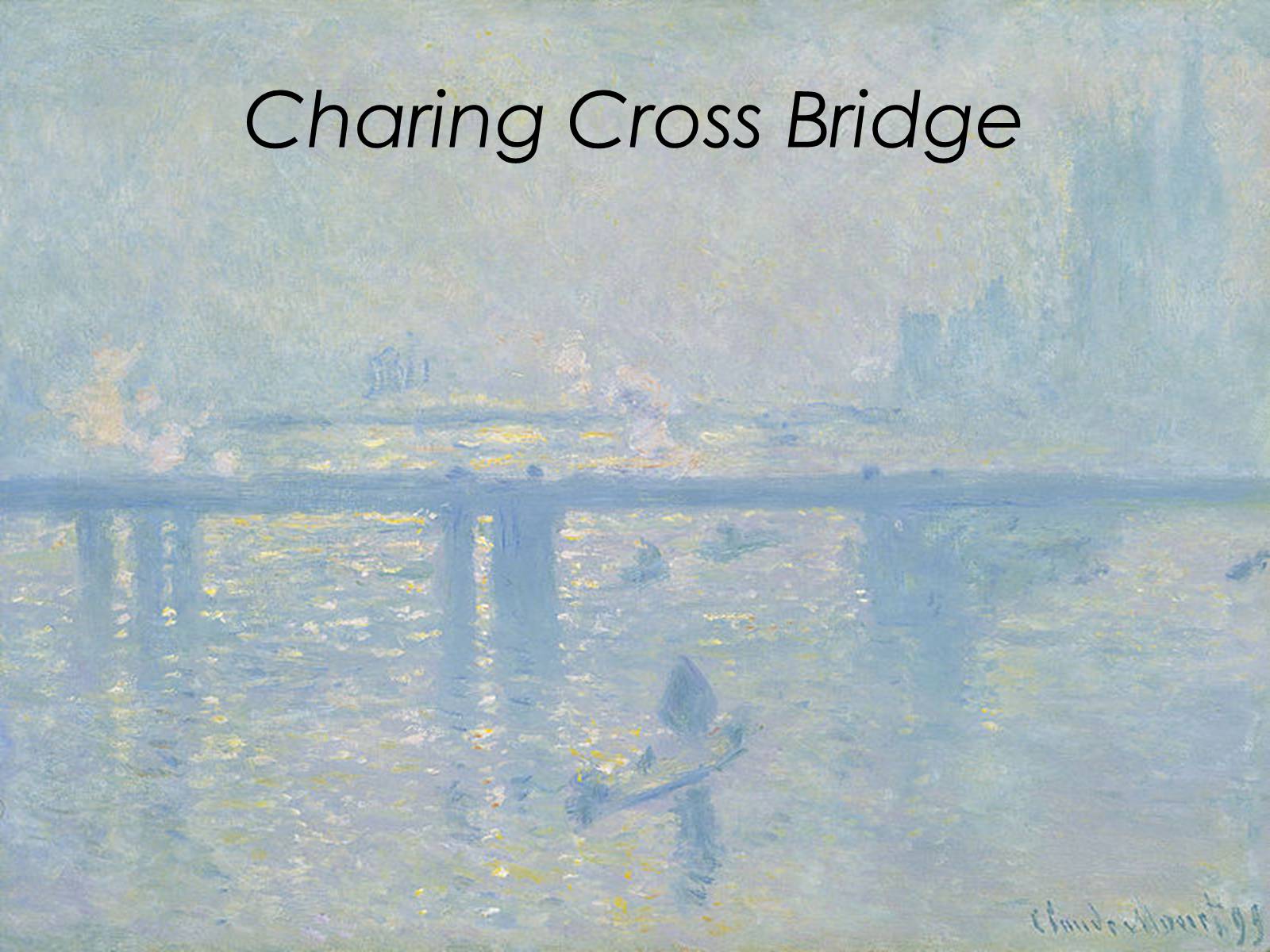
Слайд #59
Charing Cross Bridge
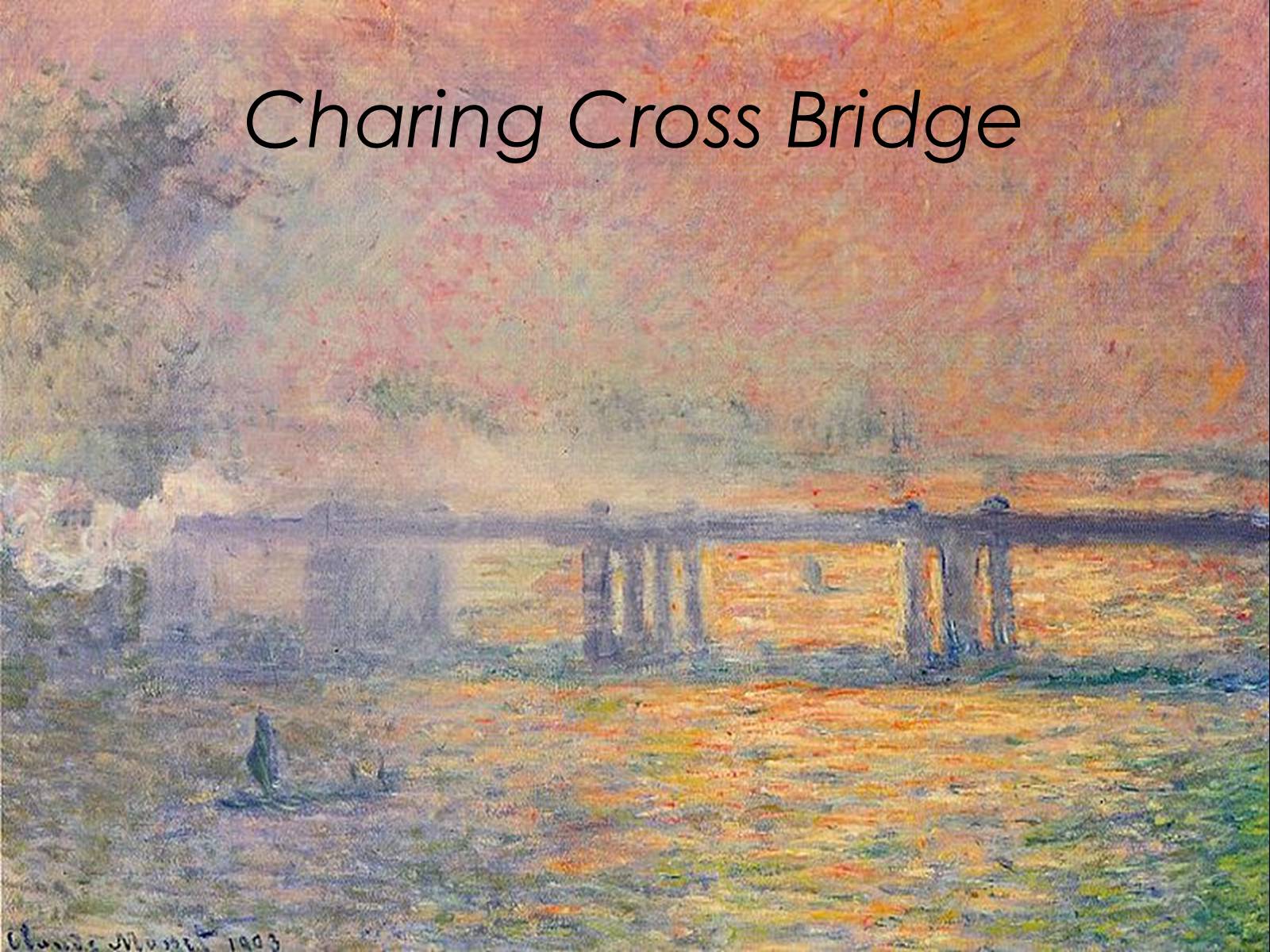
Слайд #60
London, Houses of Parliament. The Sun Shining through the Fog

Слайд #61
Two paintings from a series of The Houses of Parliament, London
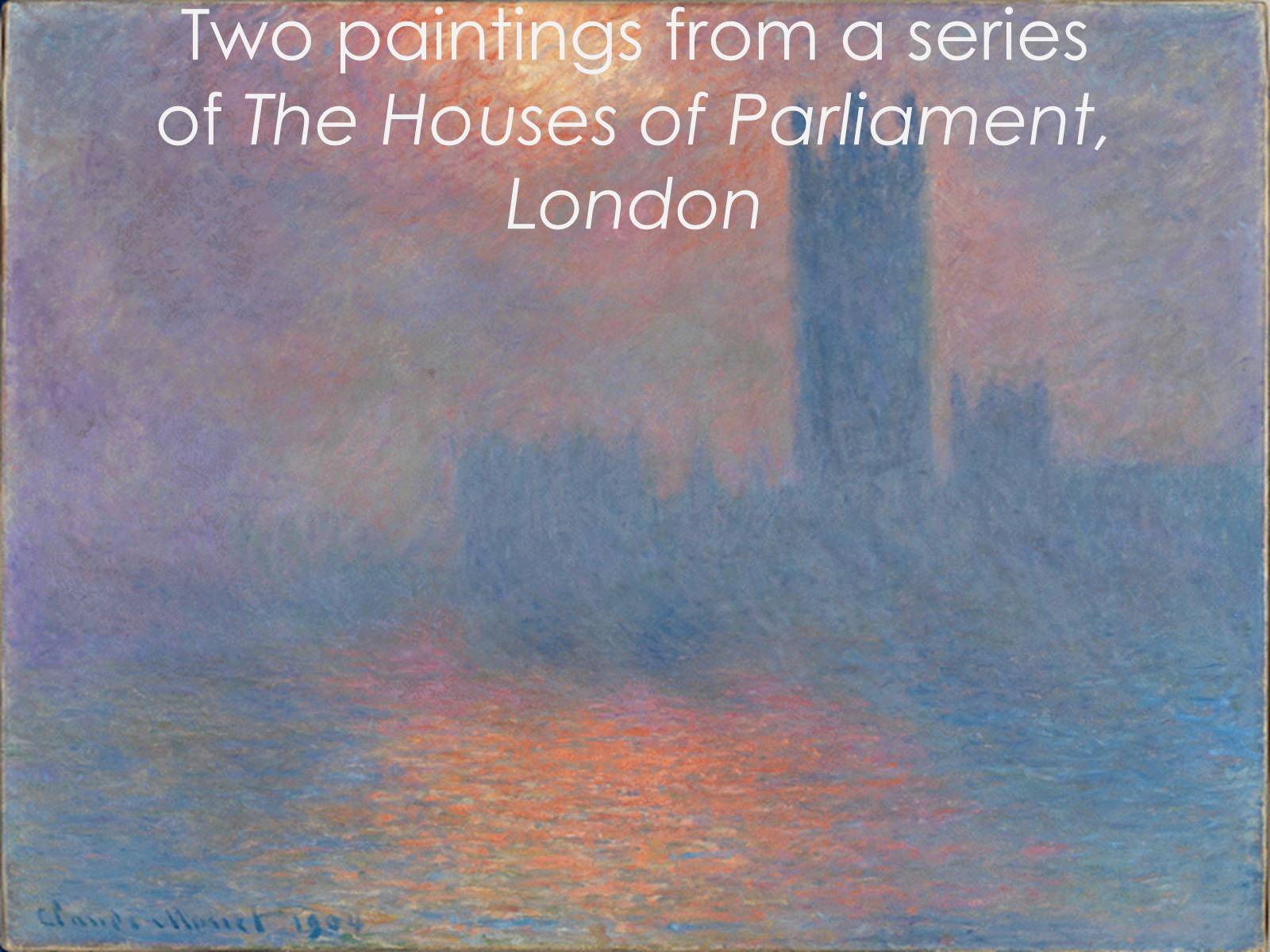
Слайд #62
Grand Canal, Venice
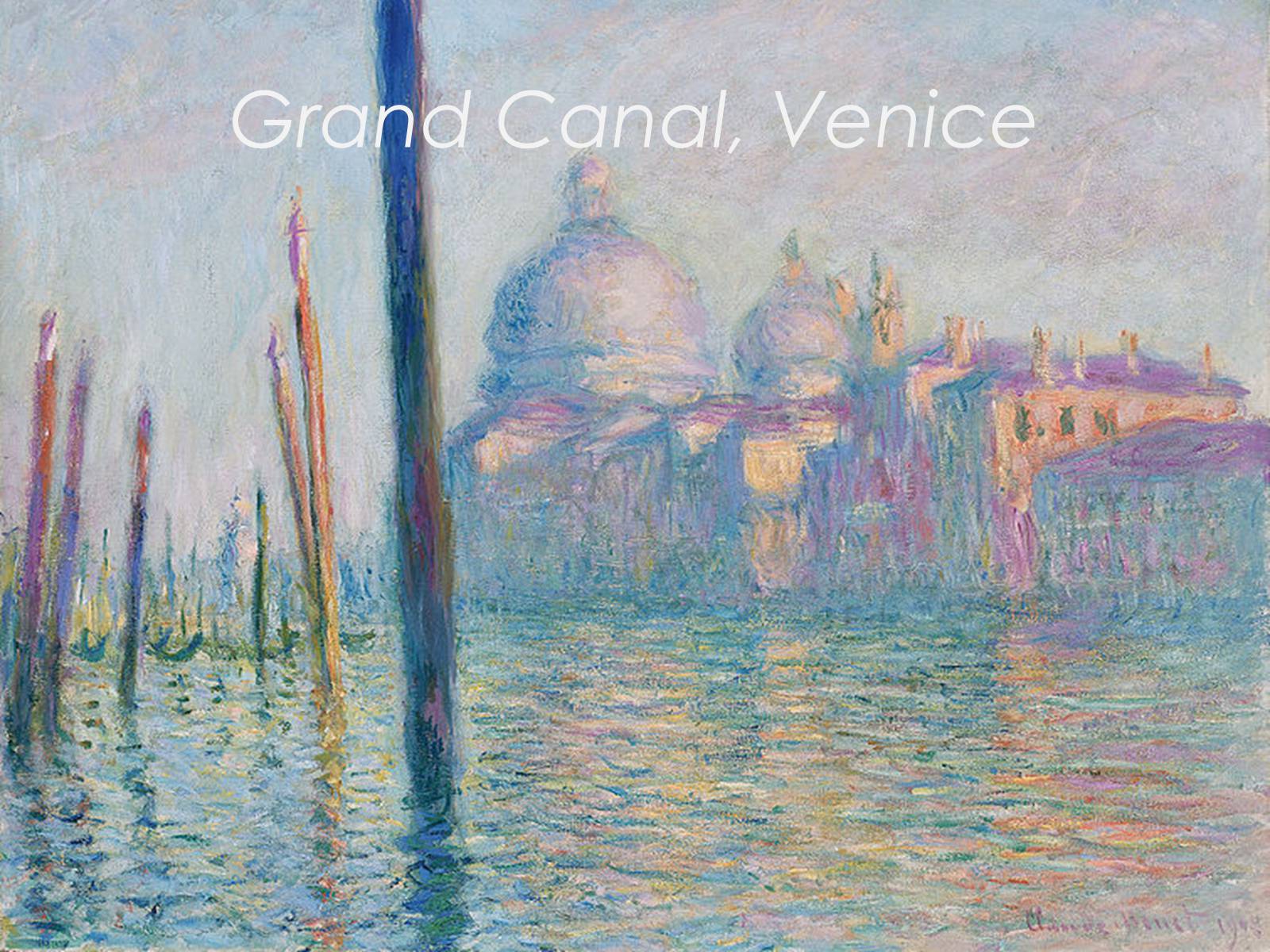
Слайд #63
Grand Canal, Venice
